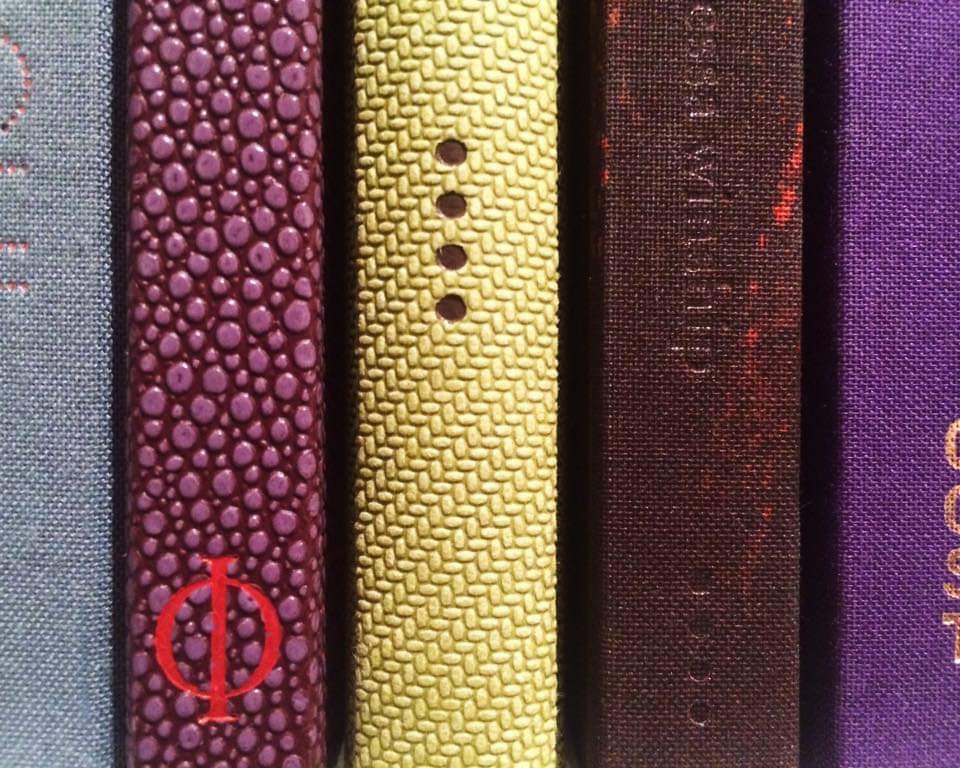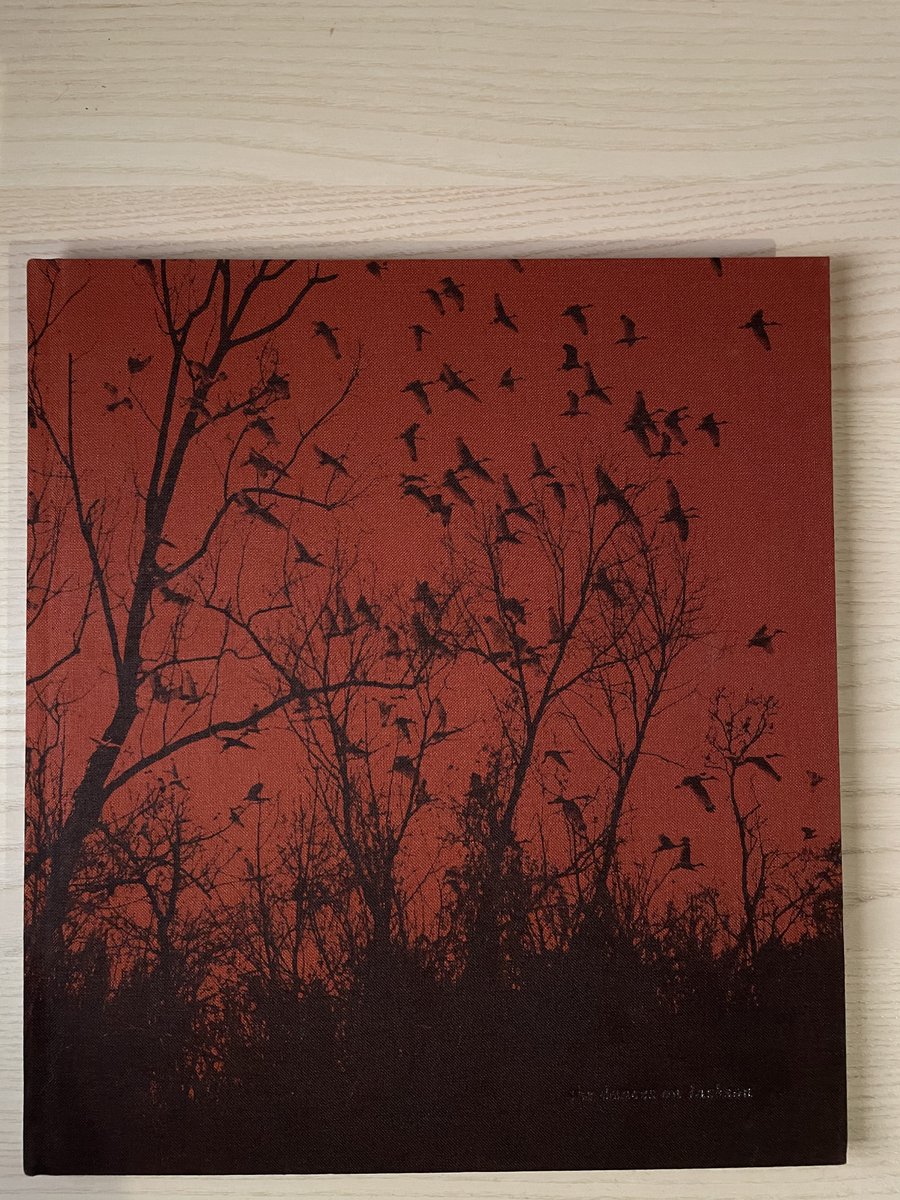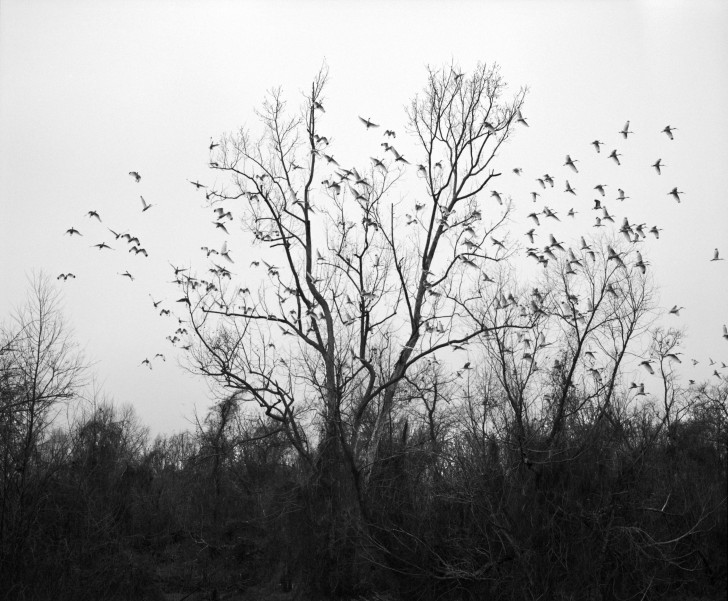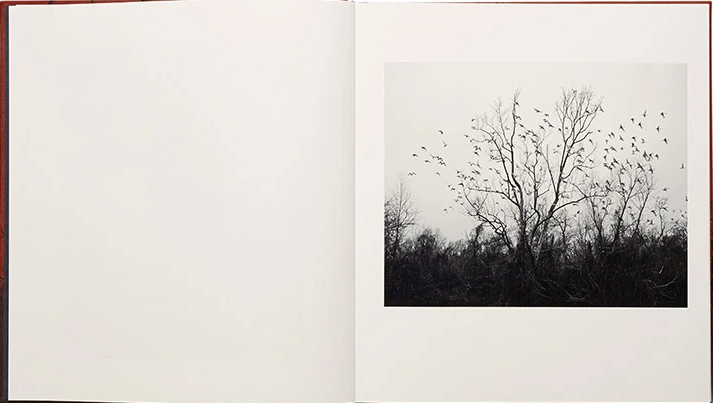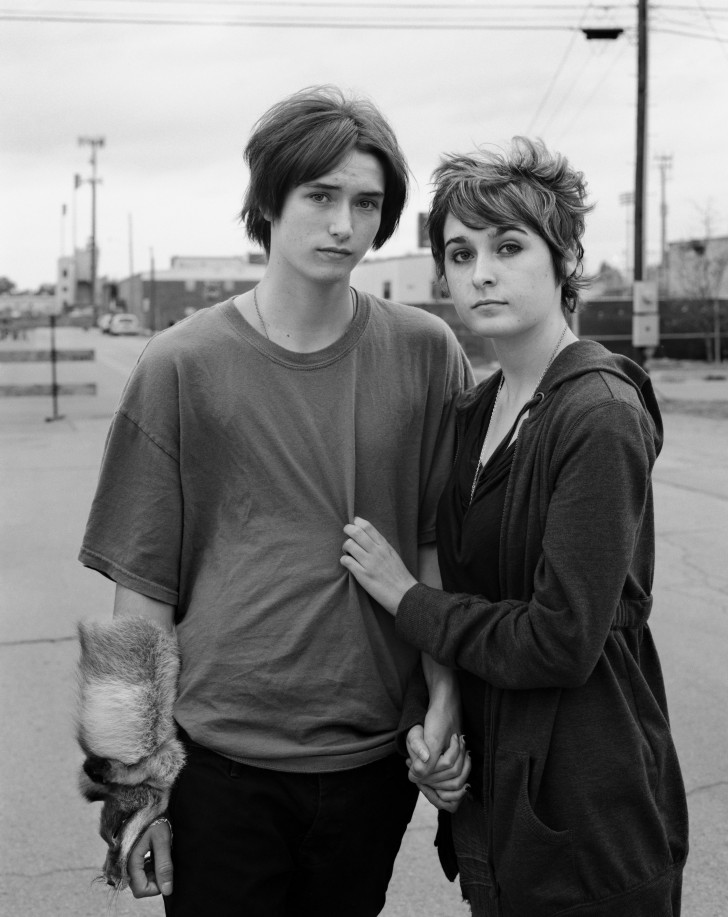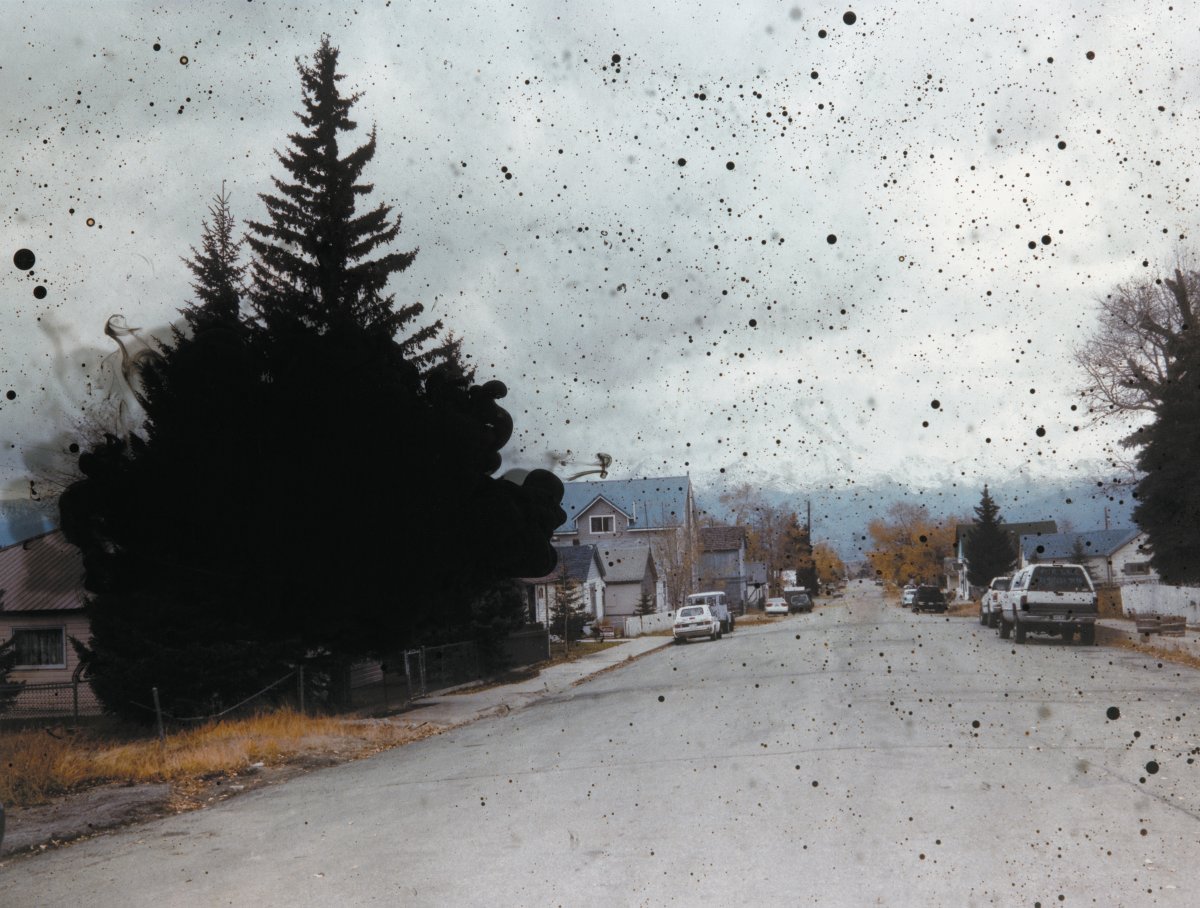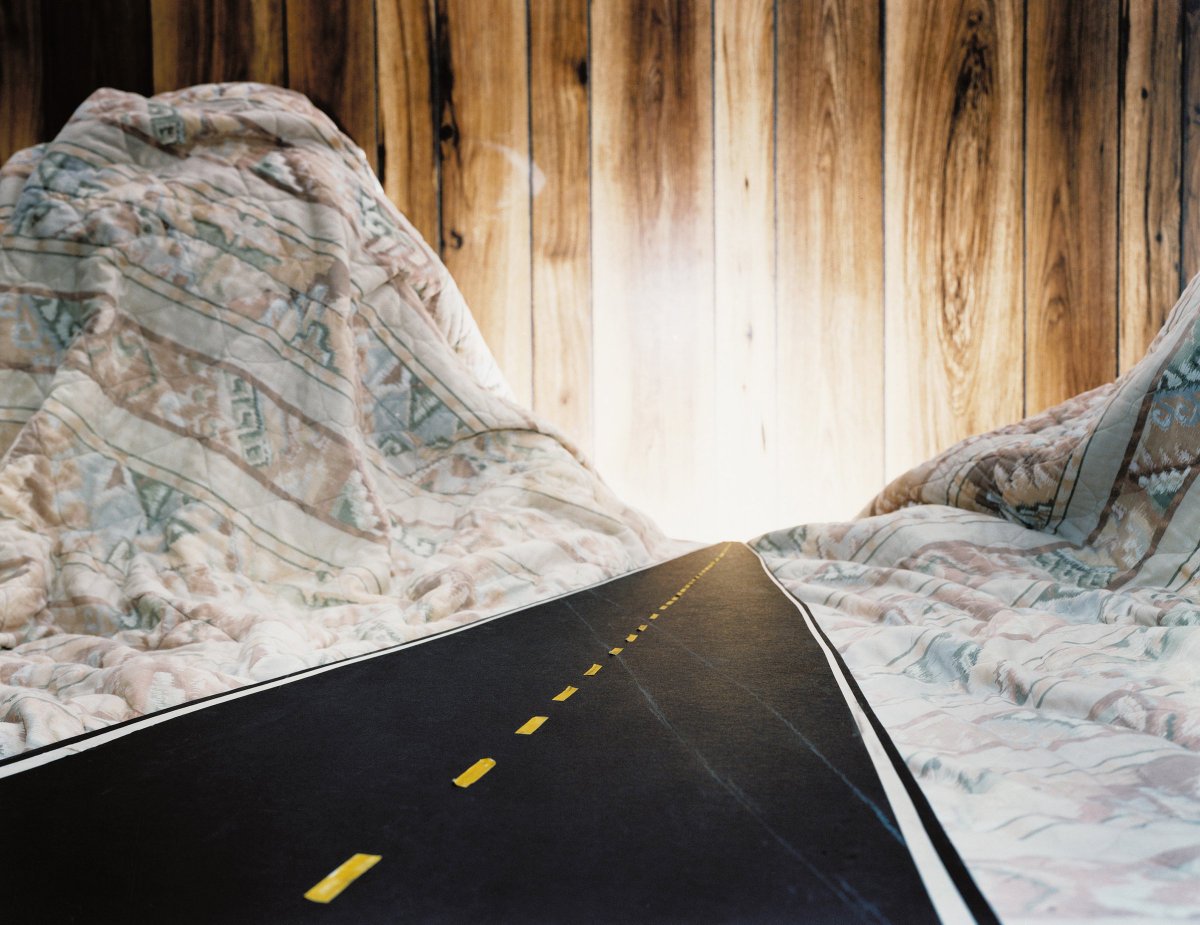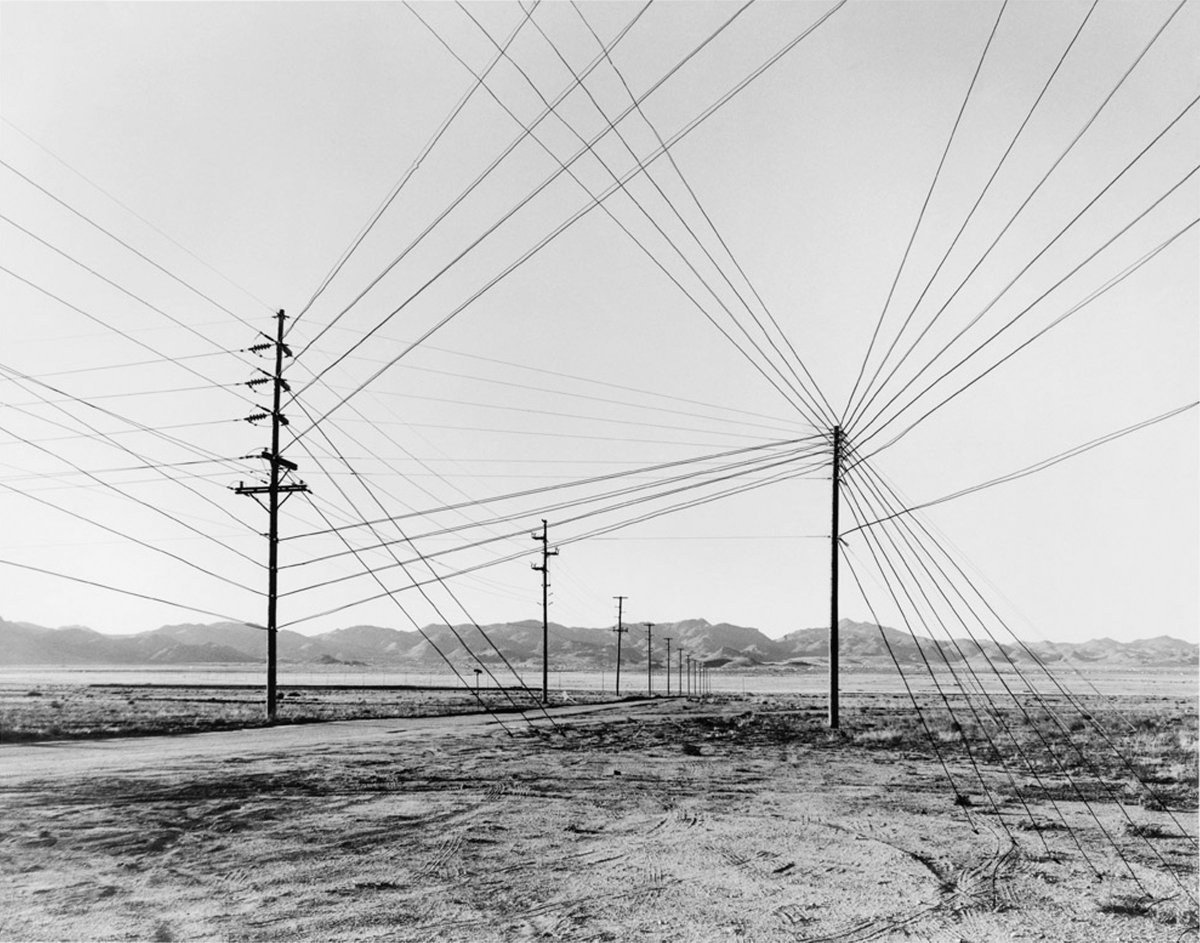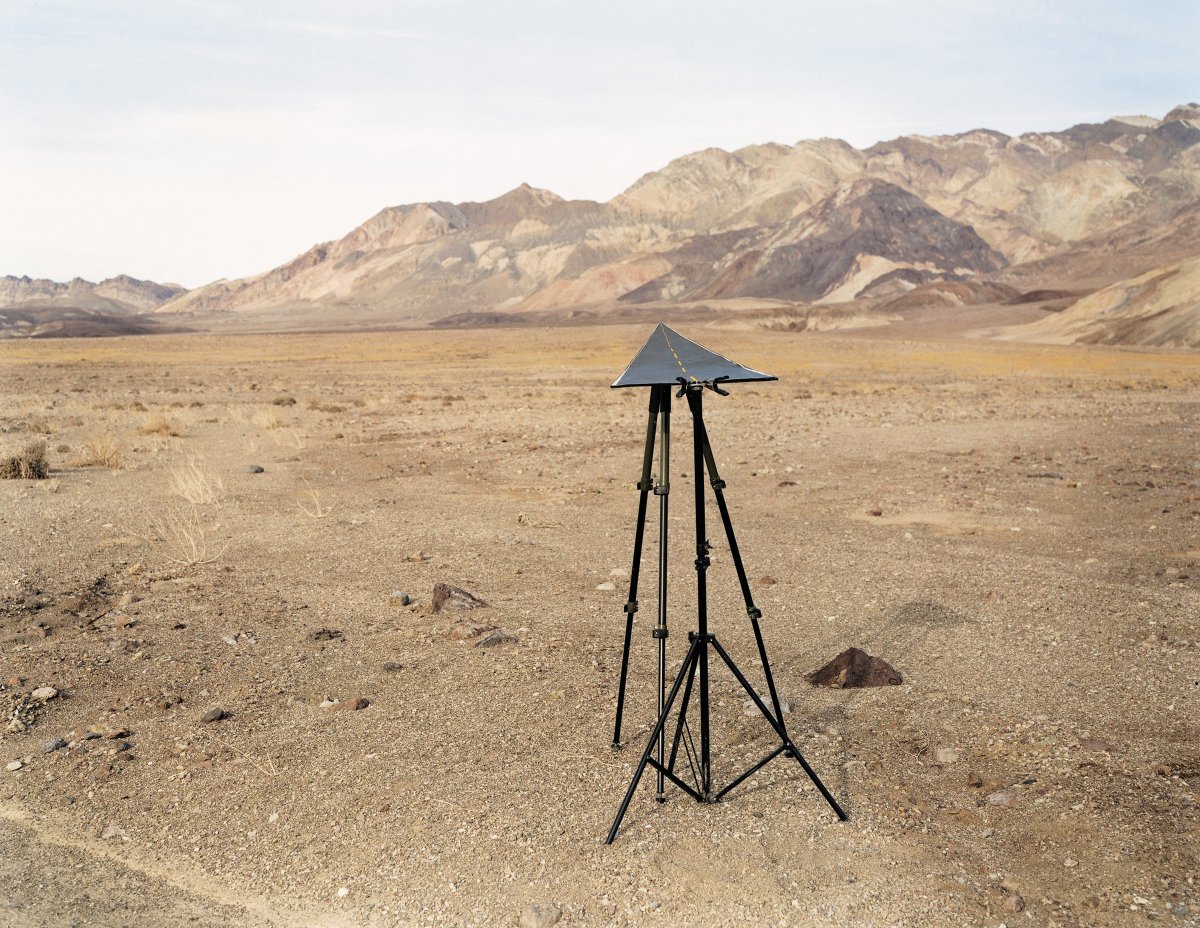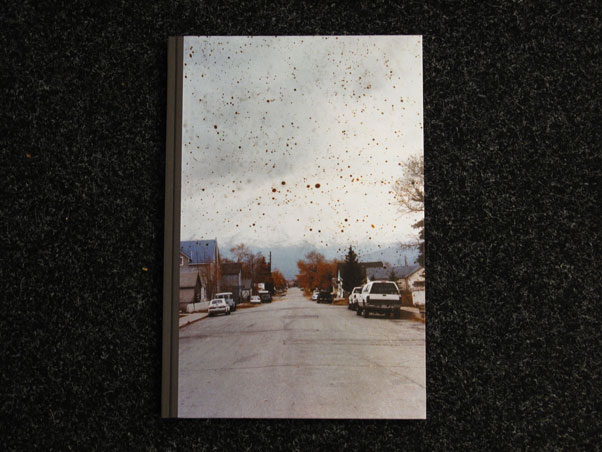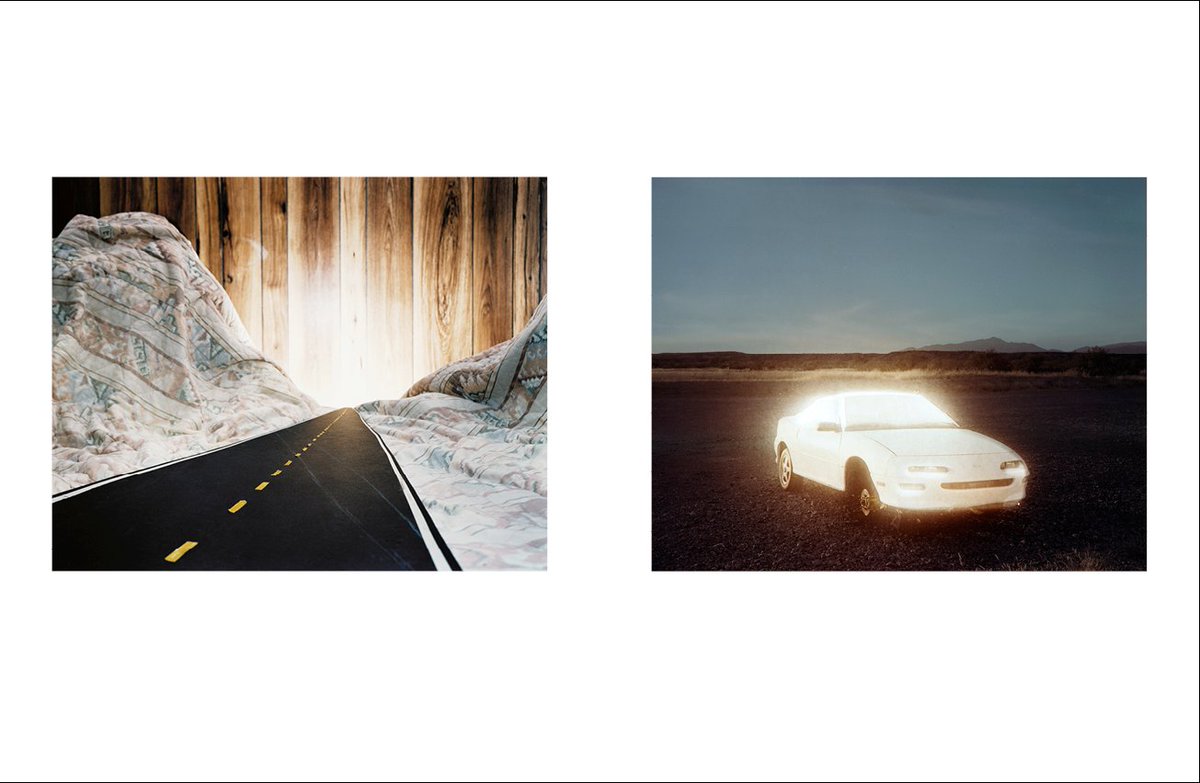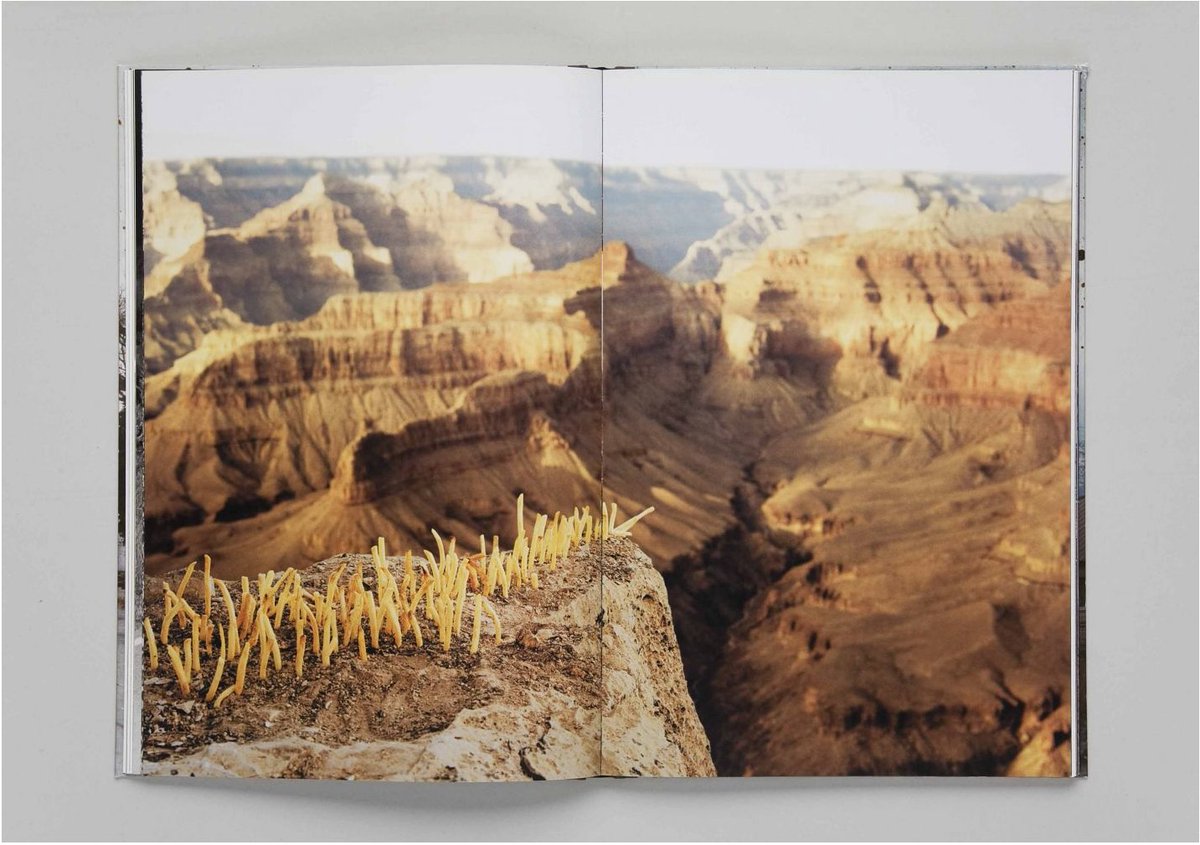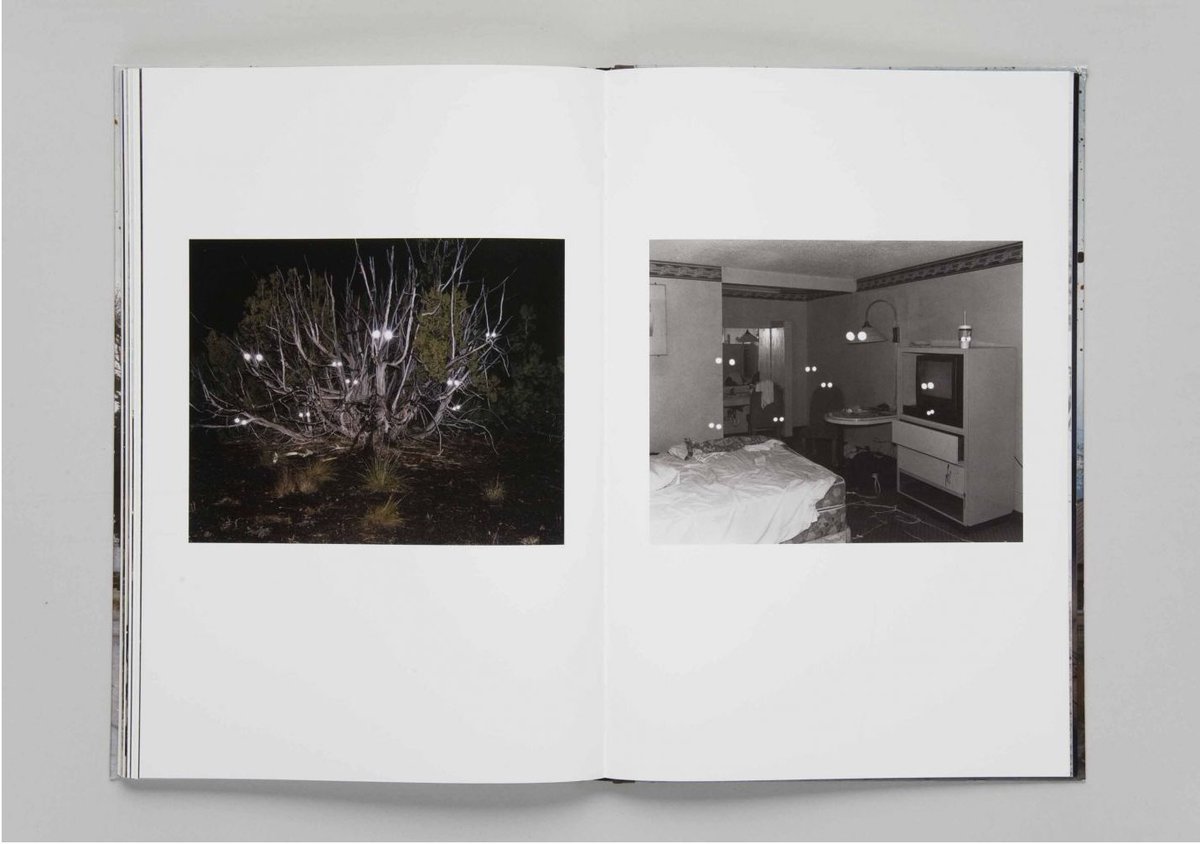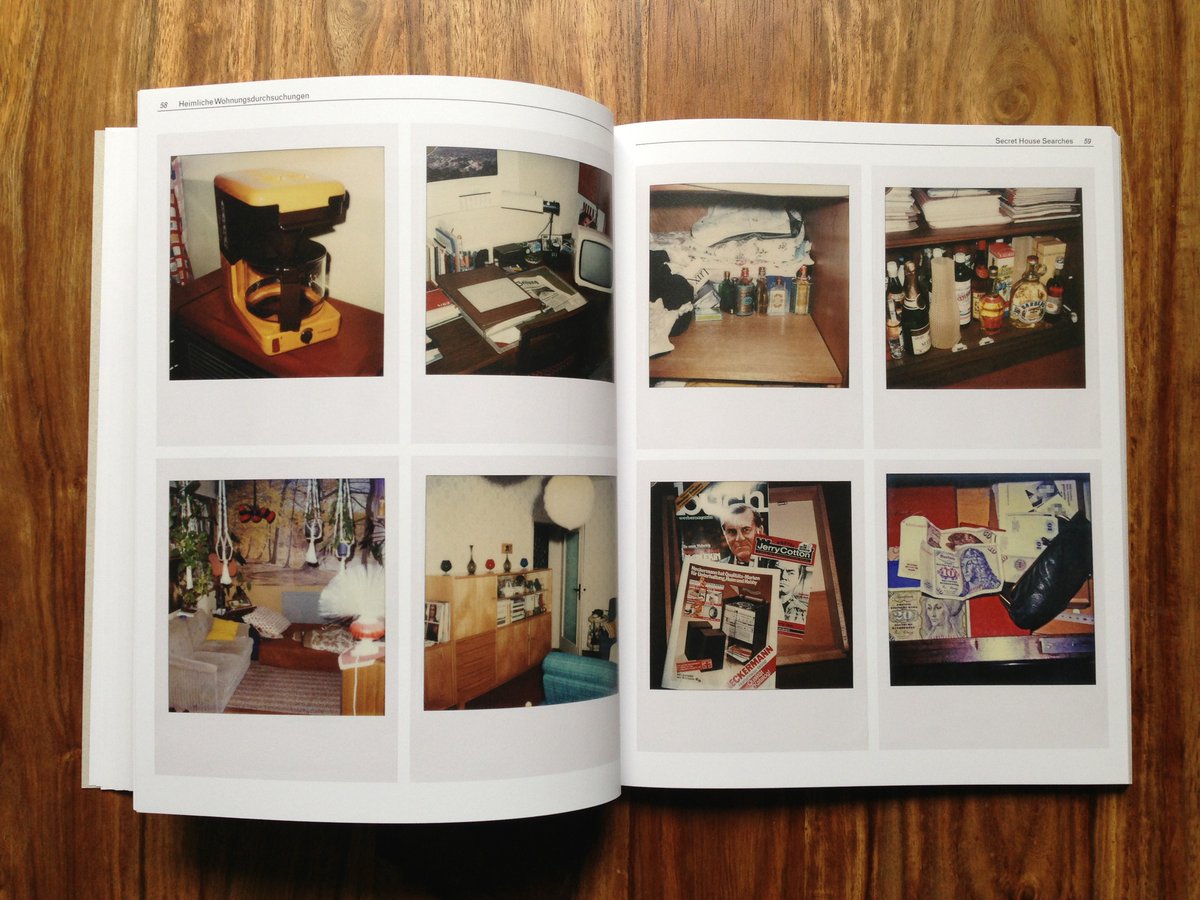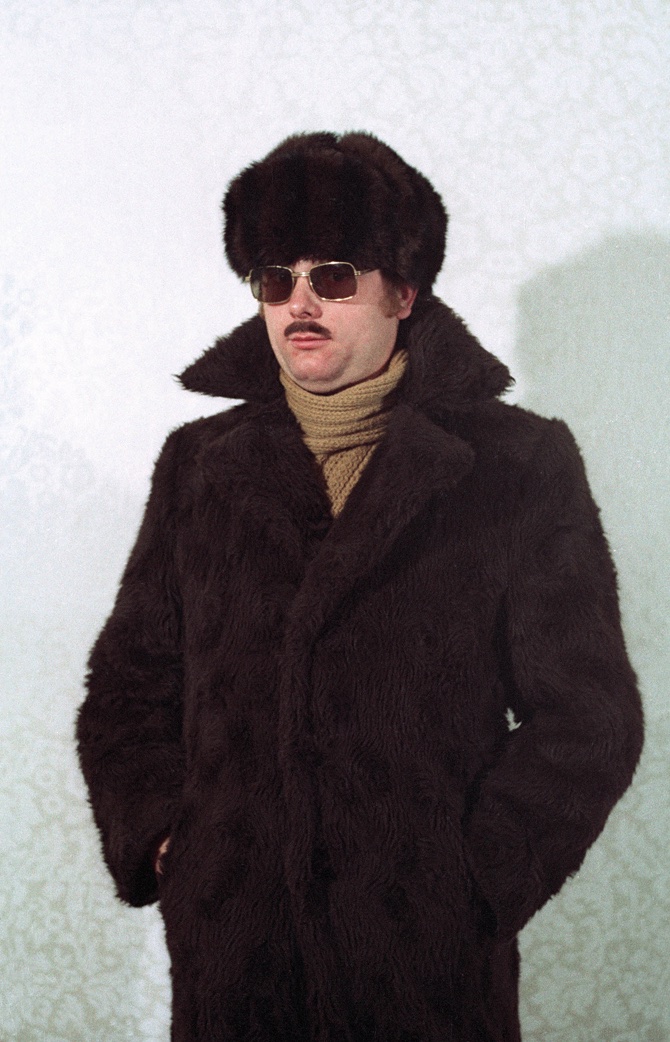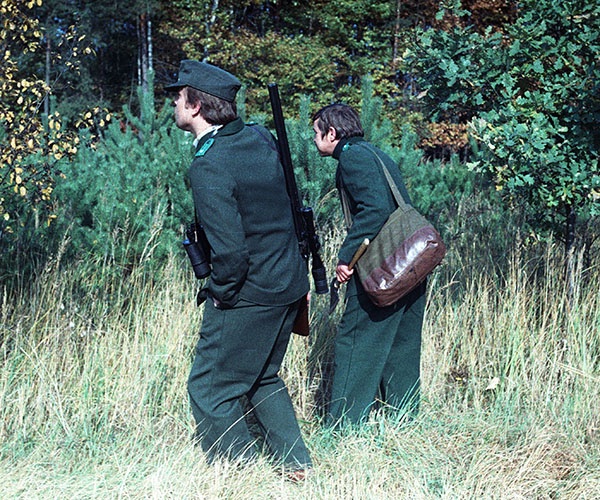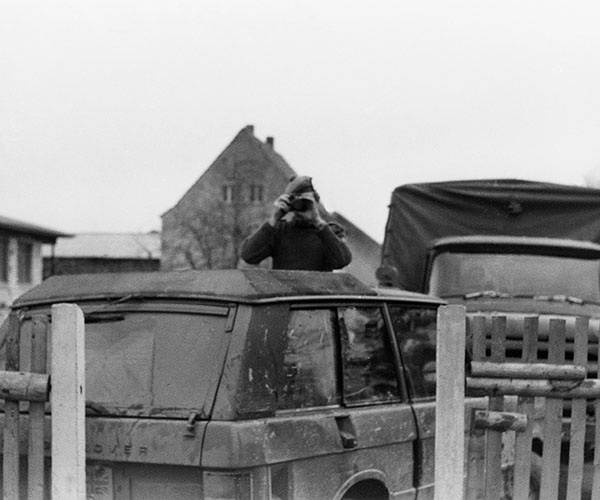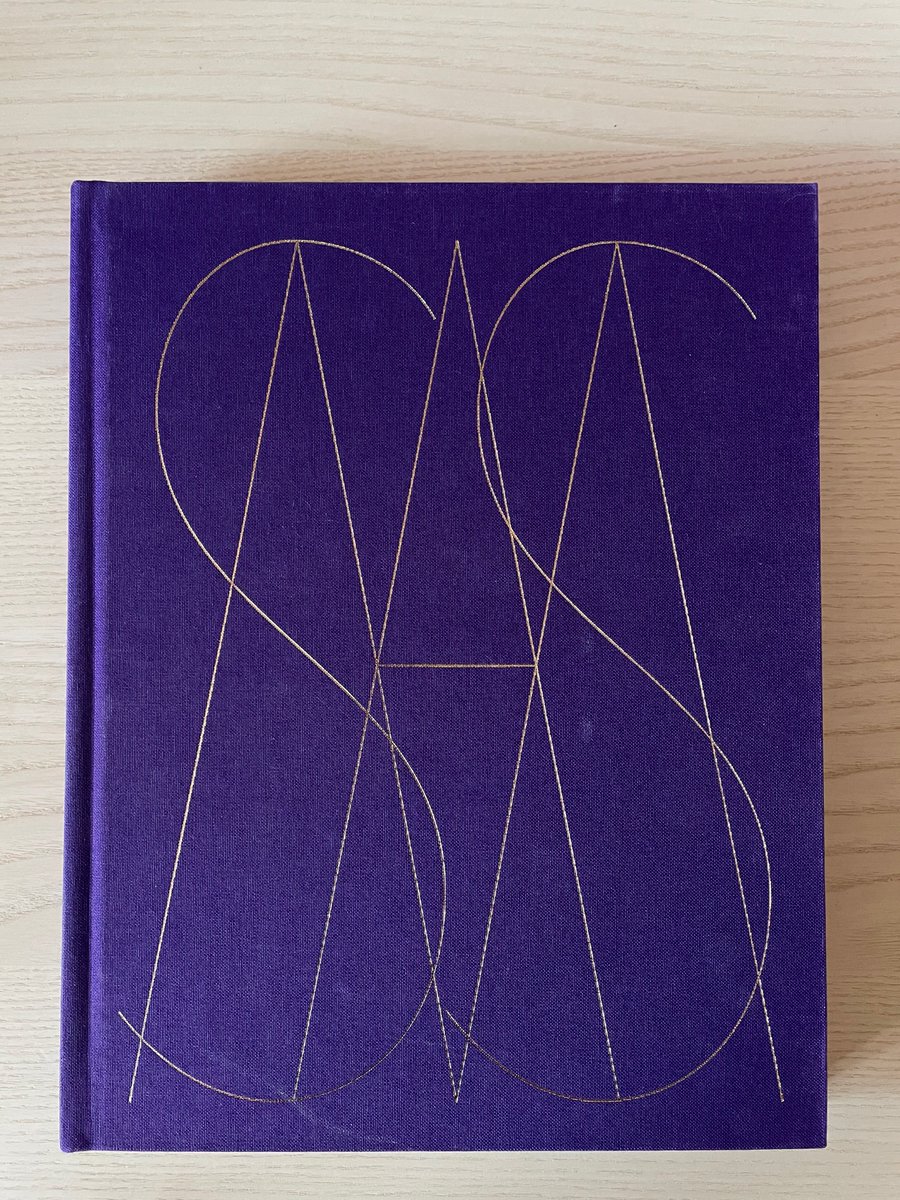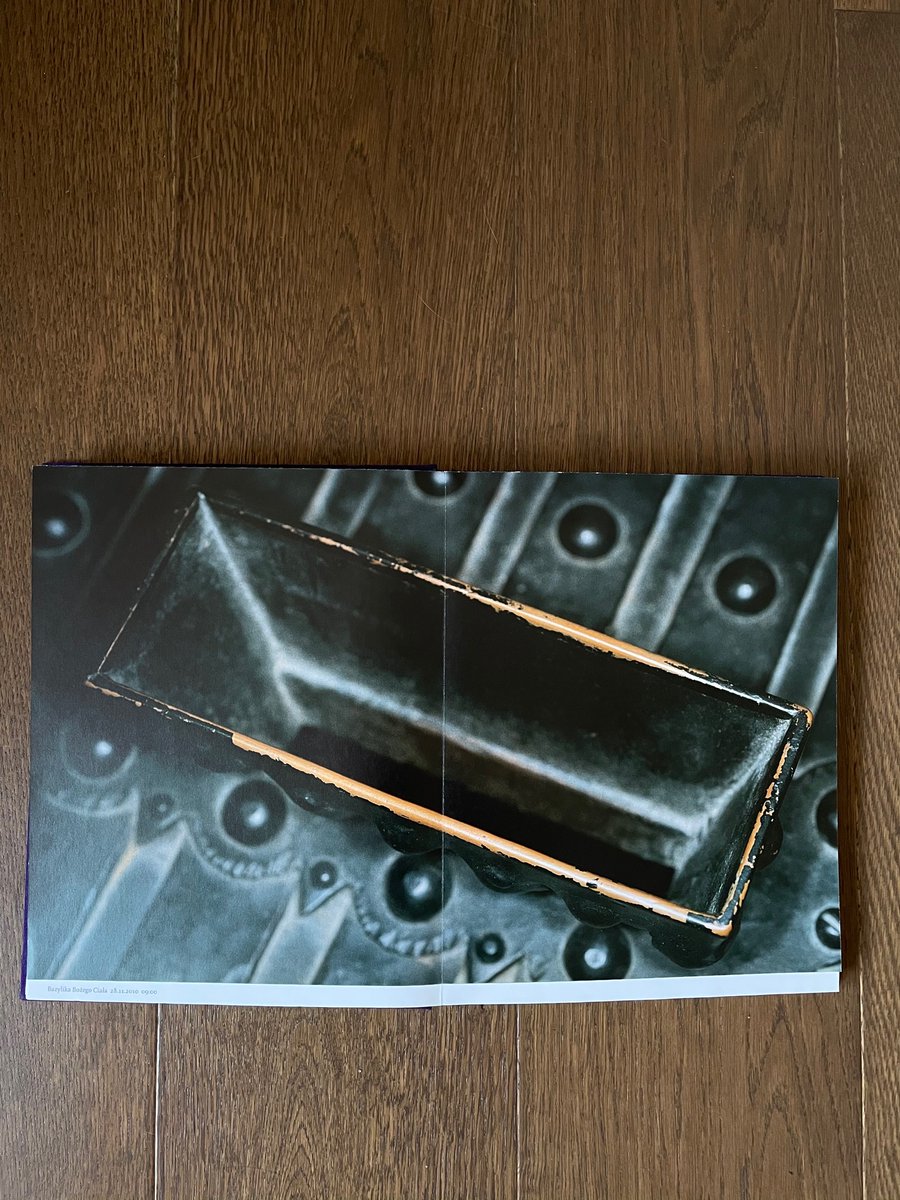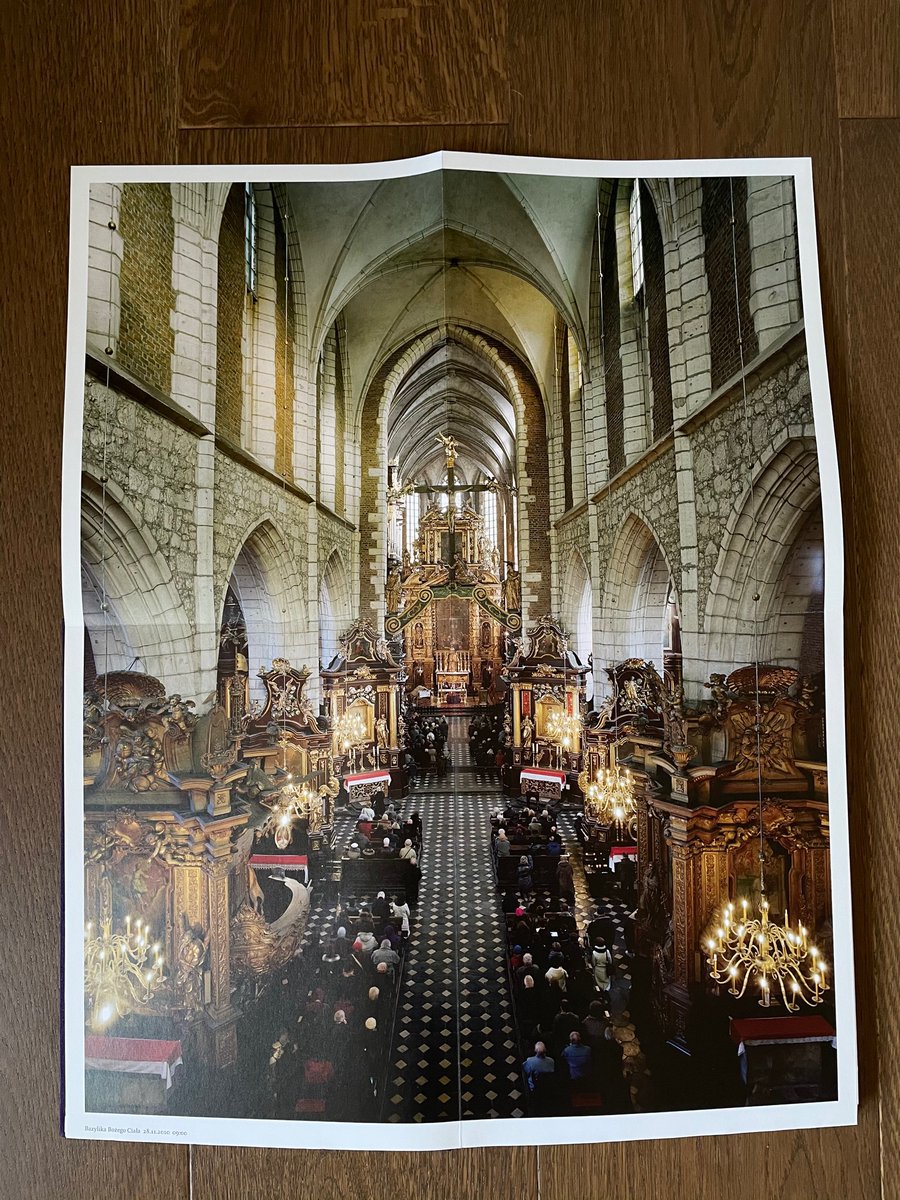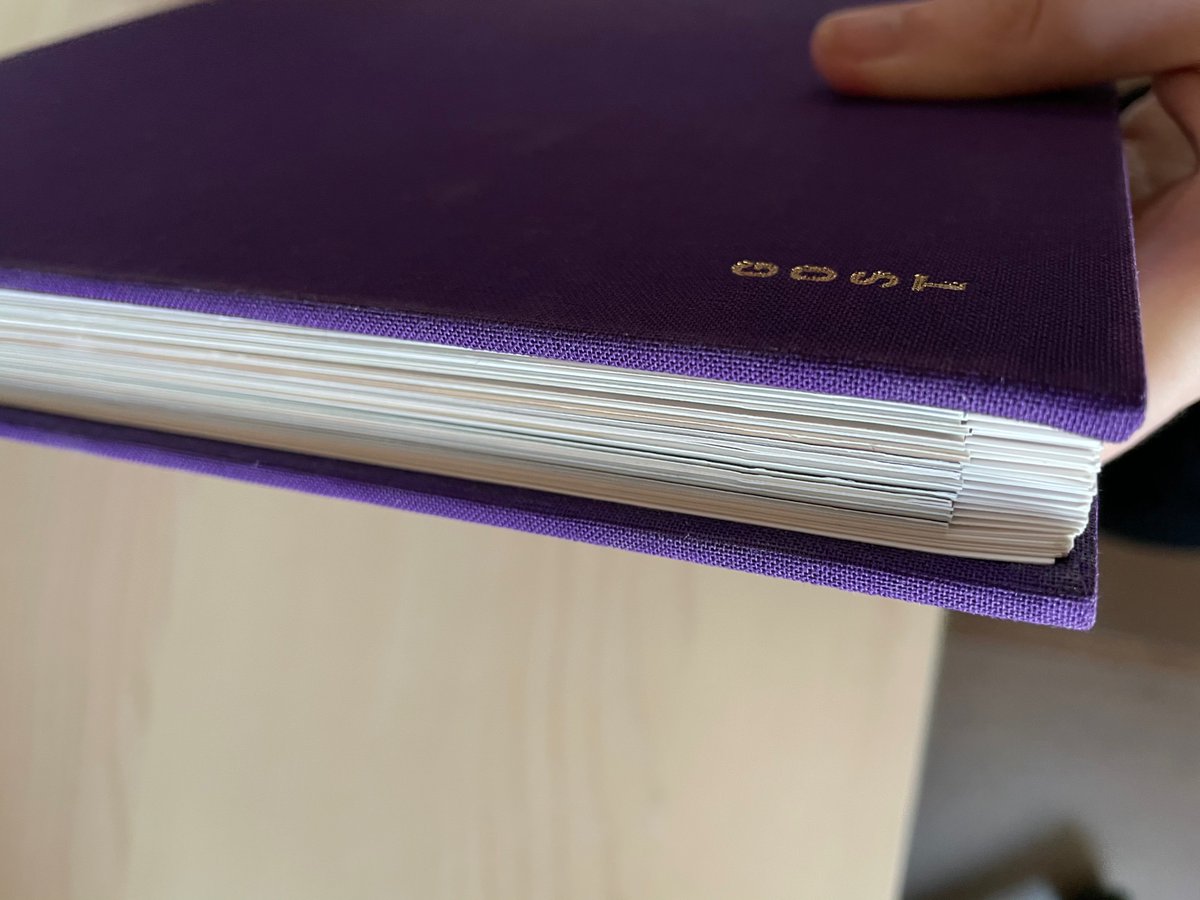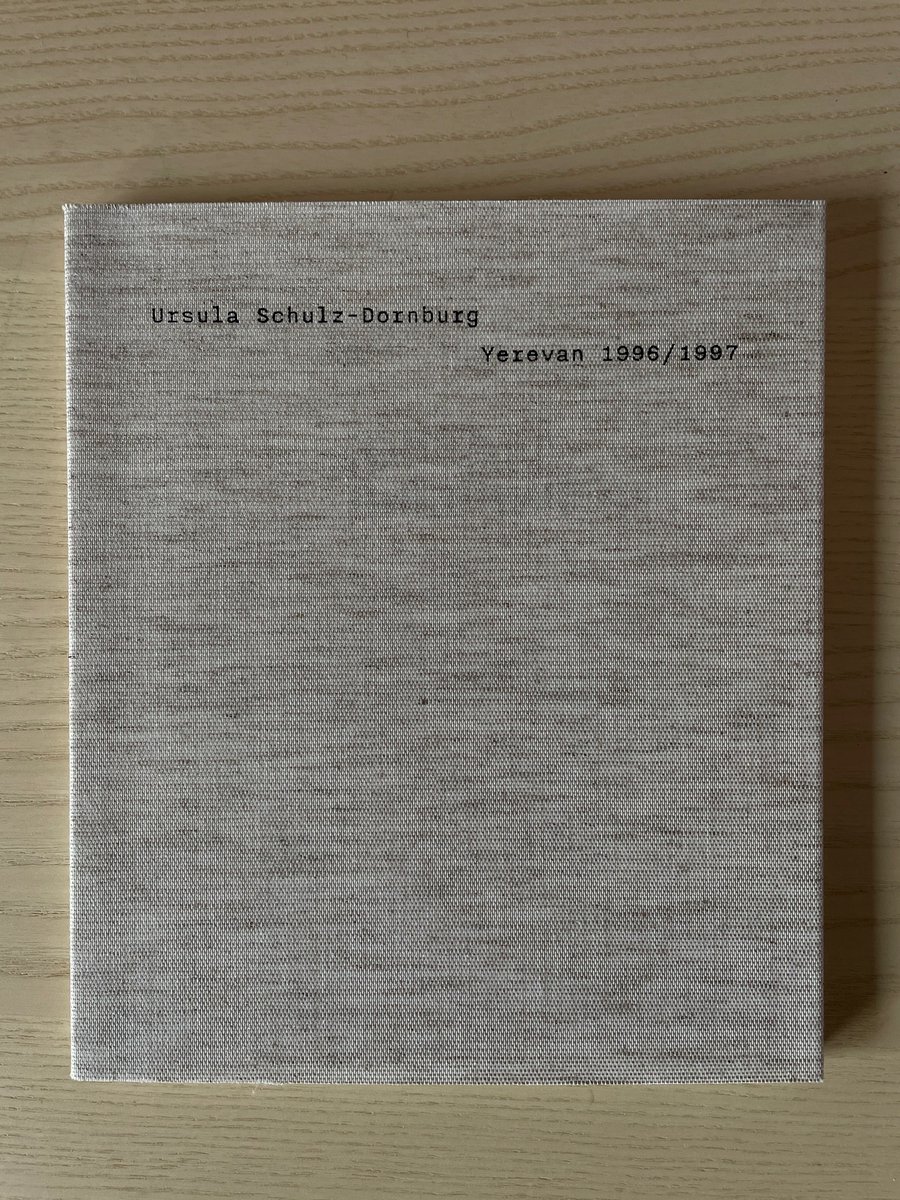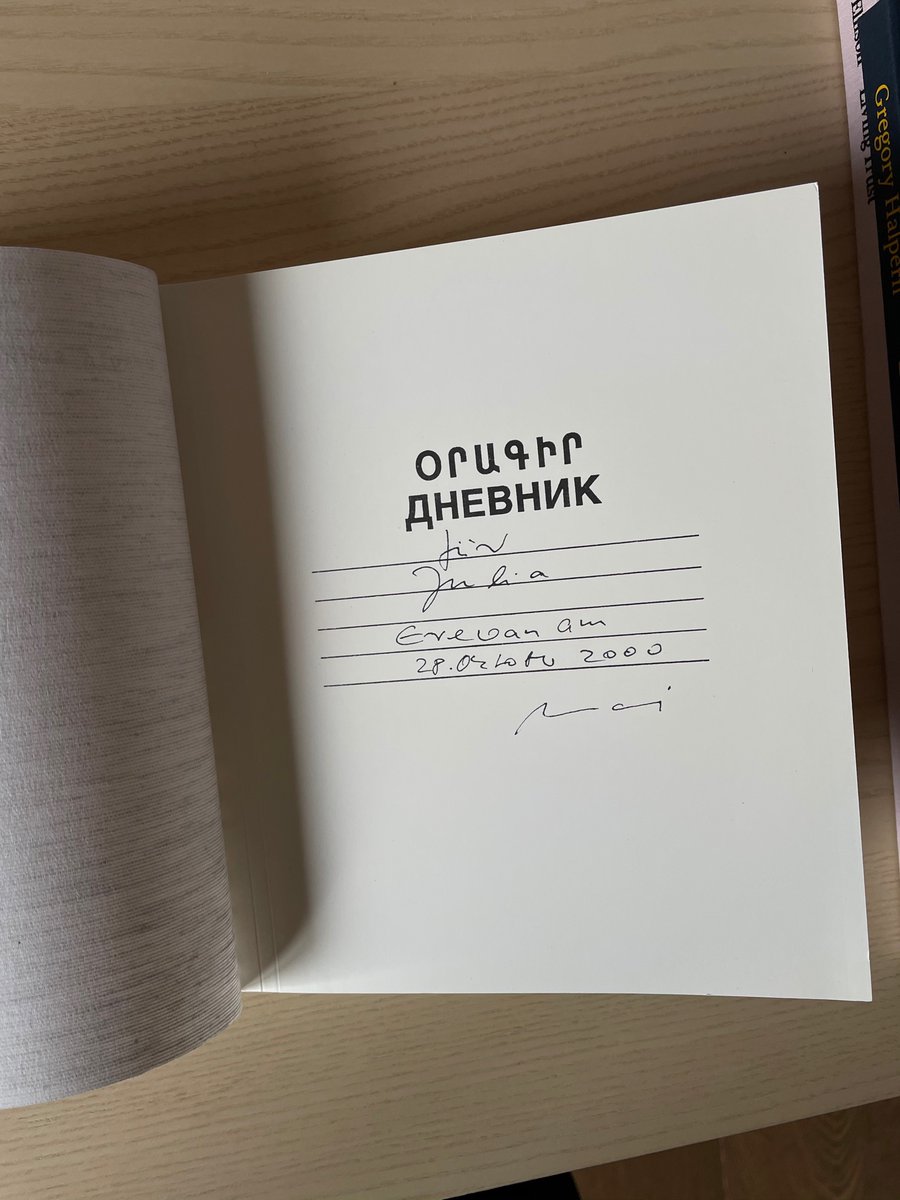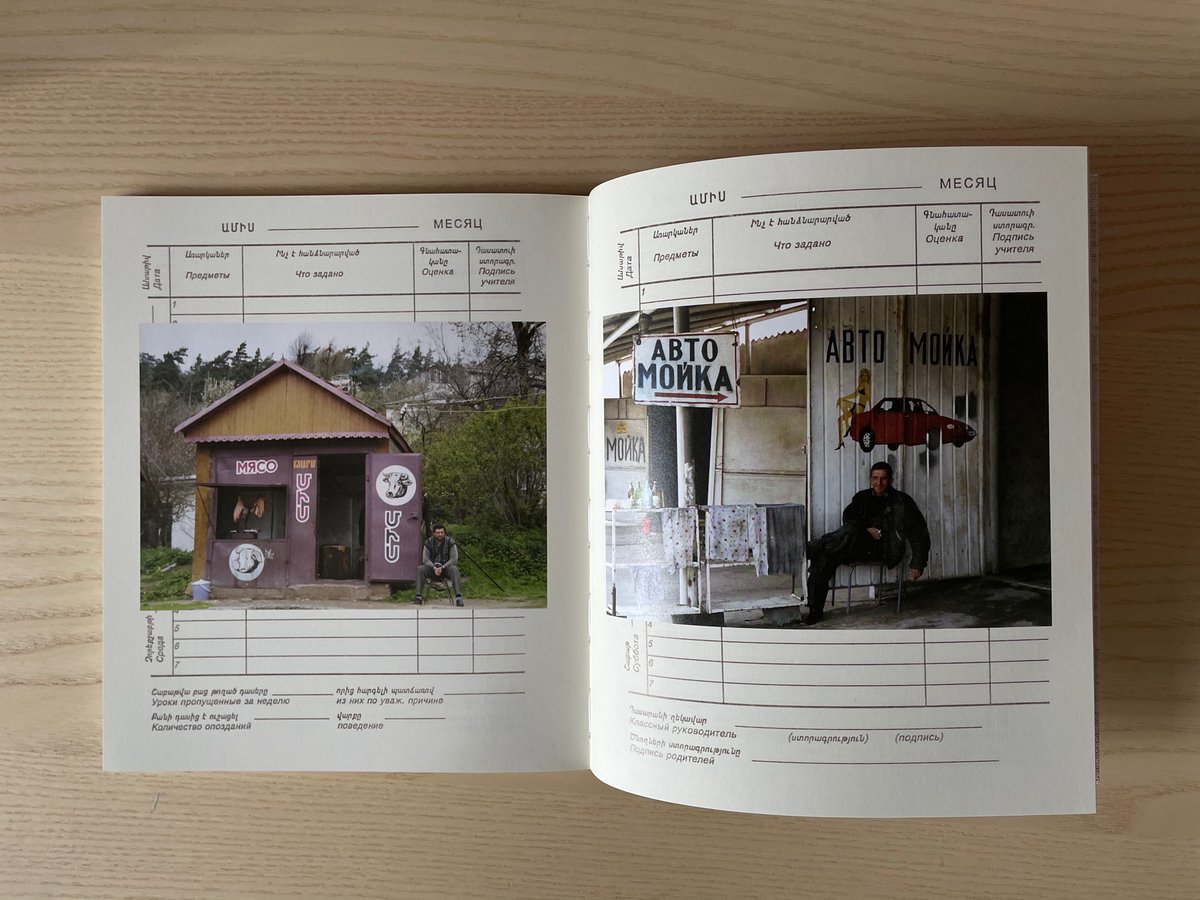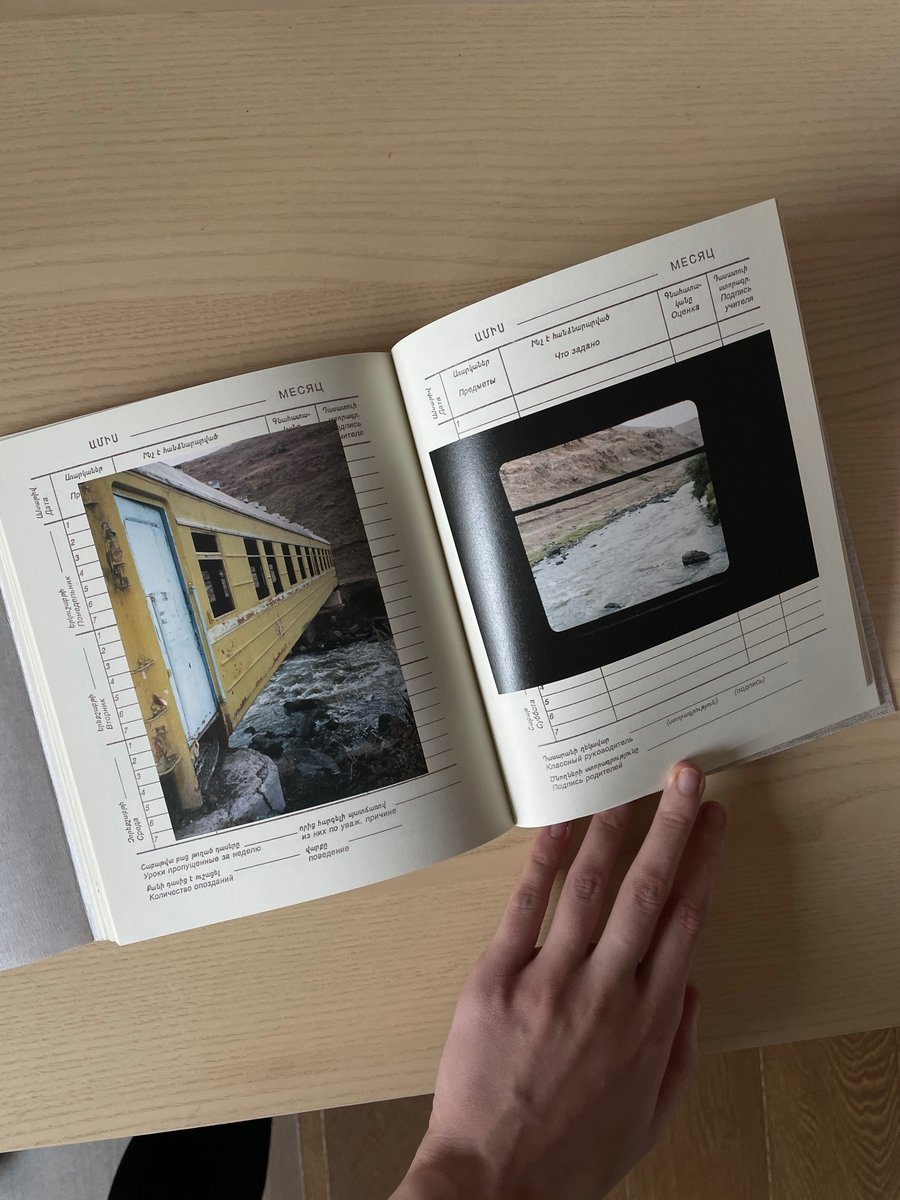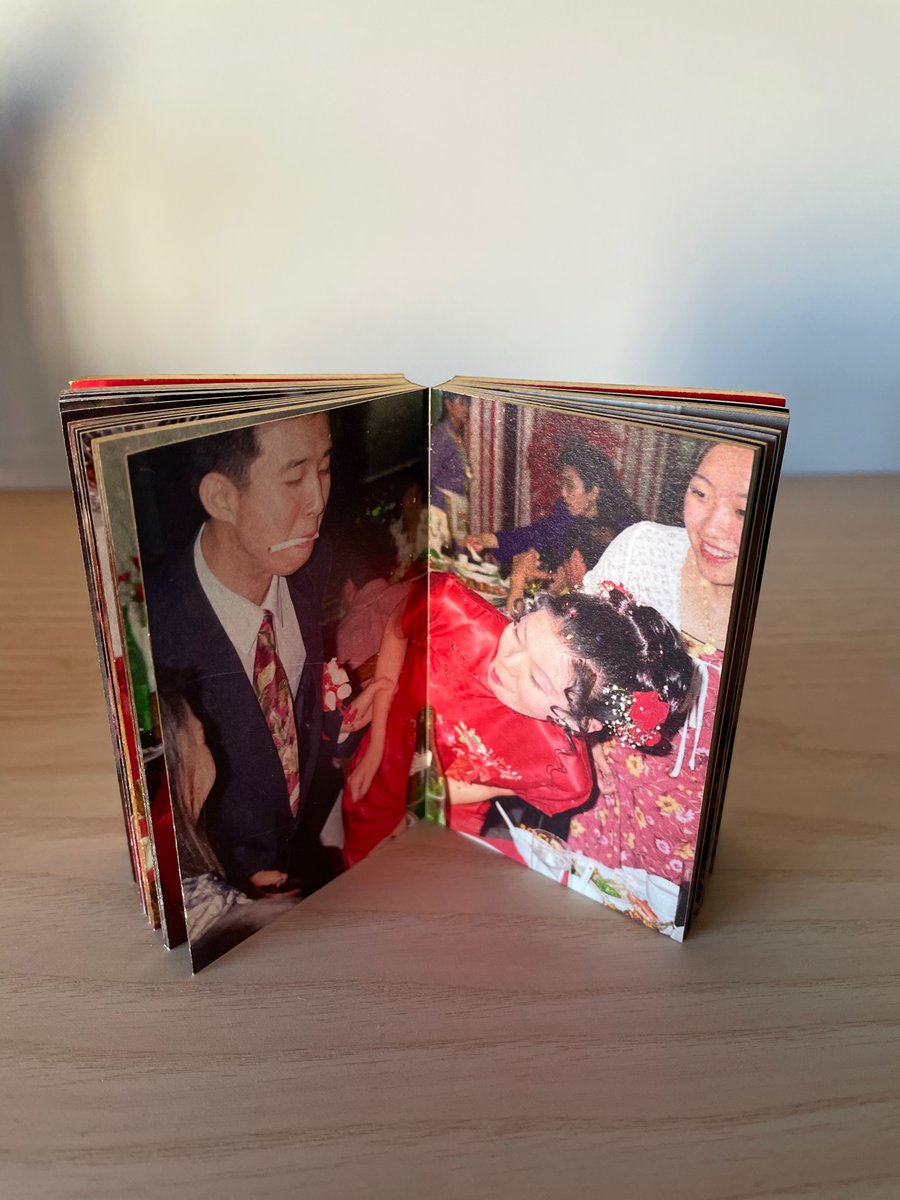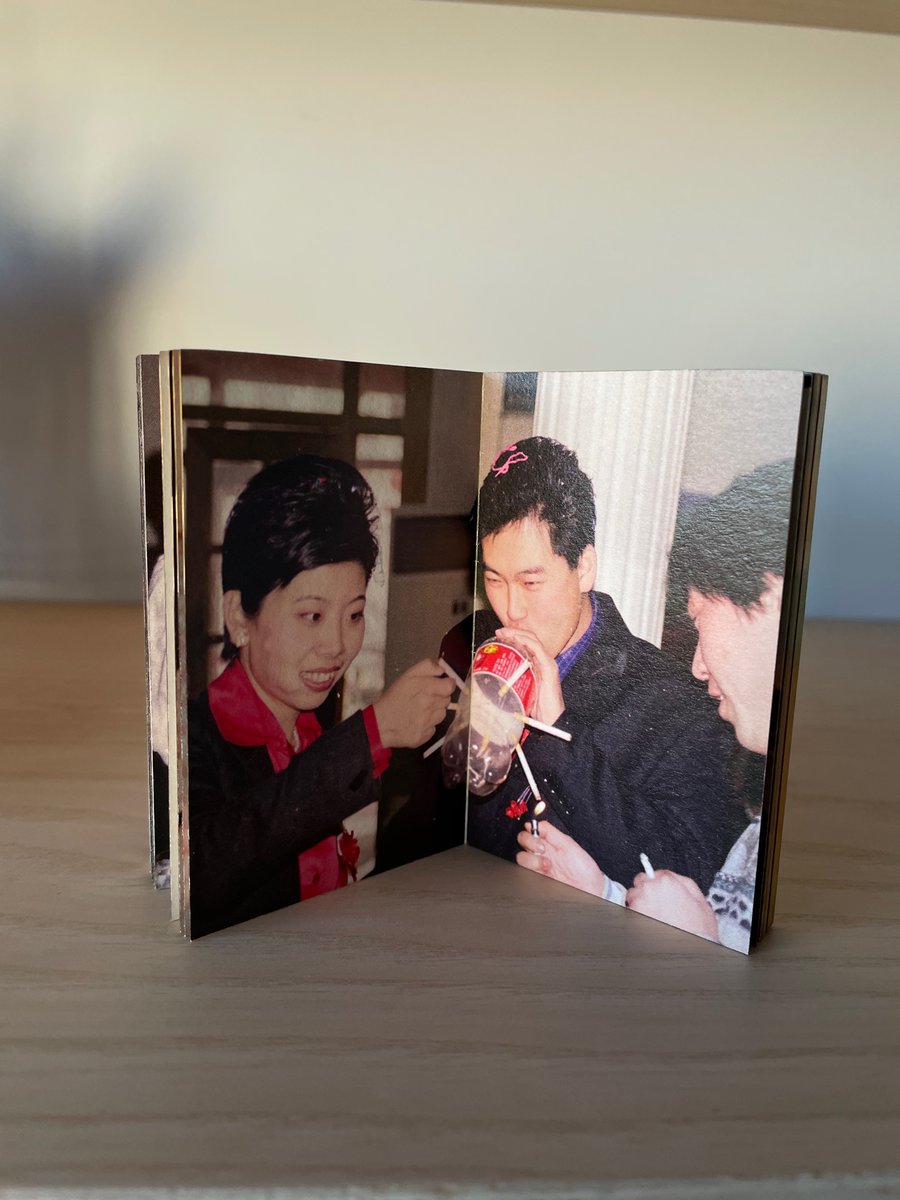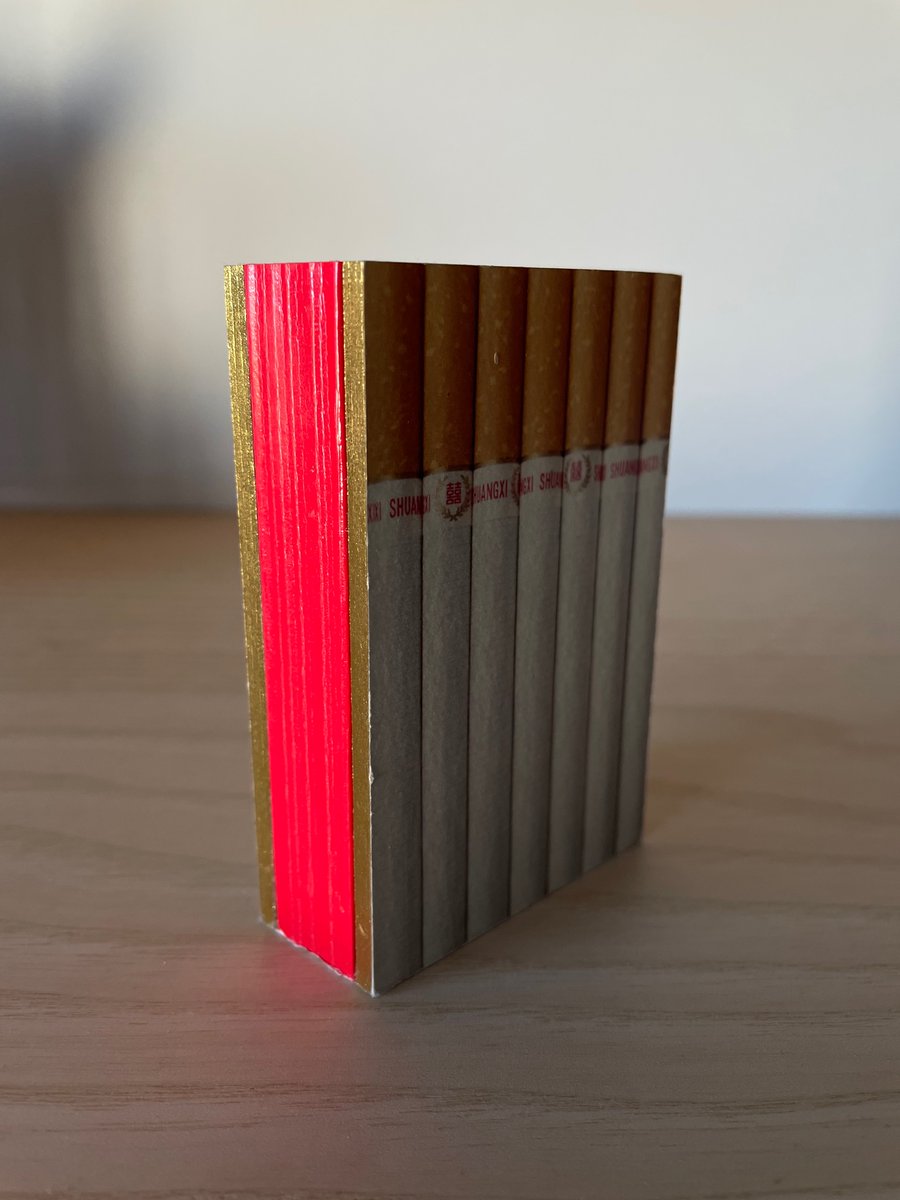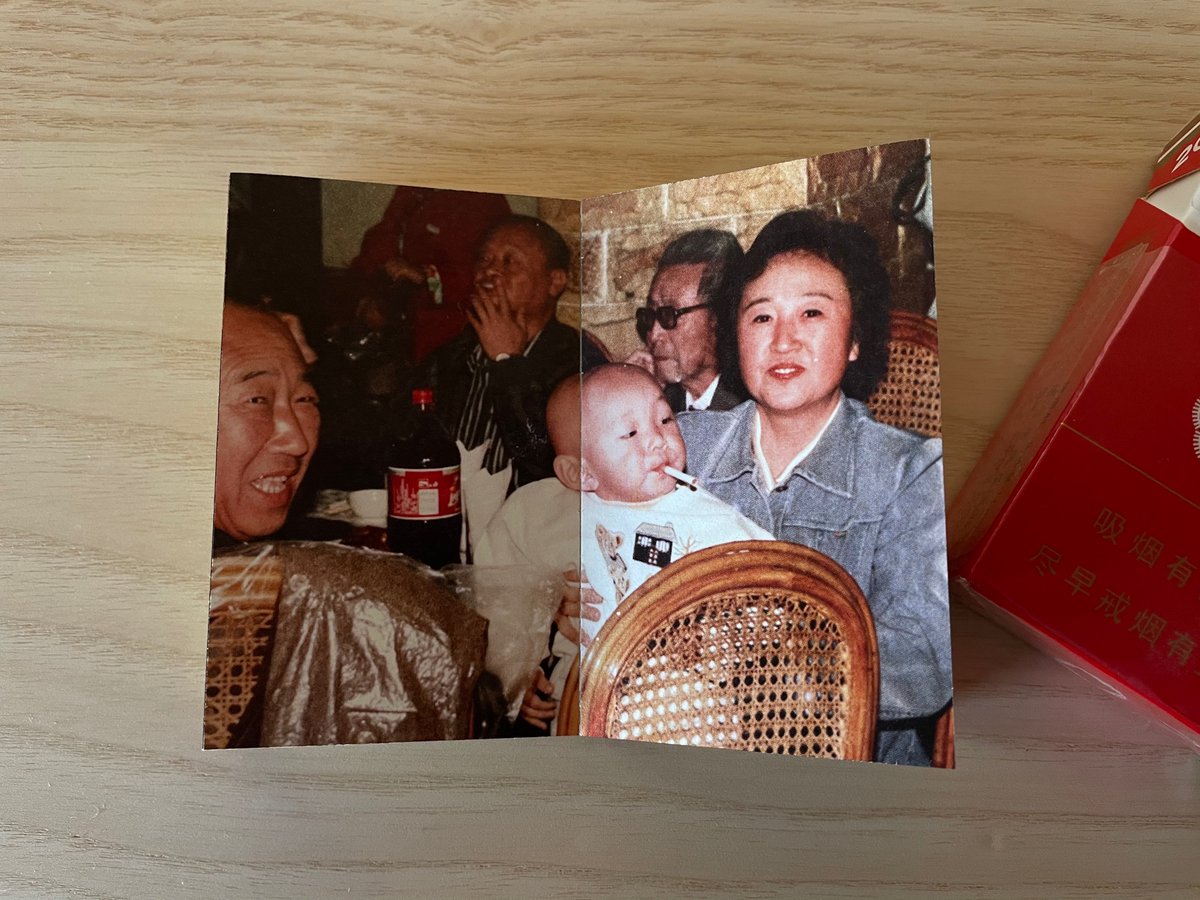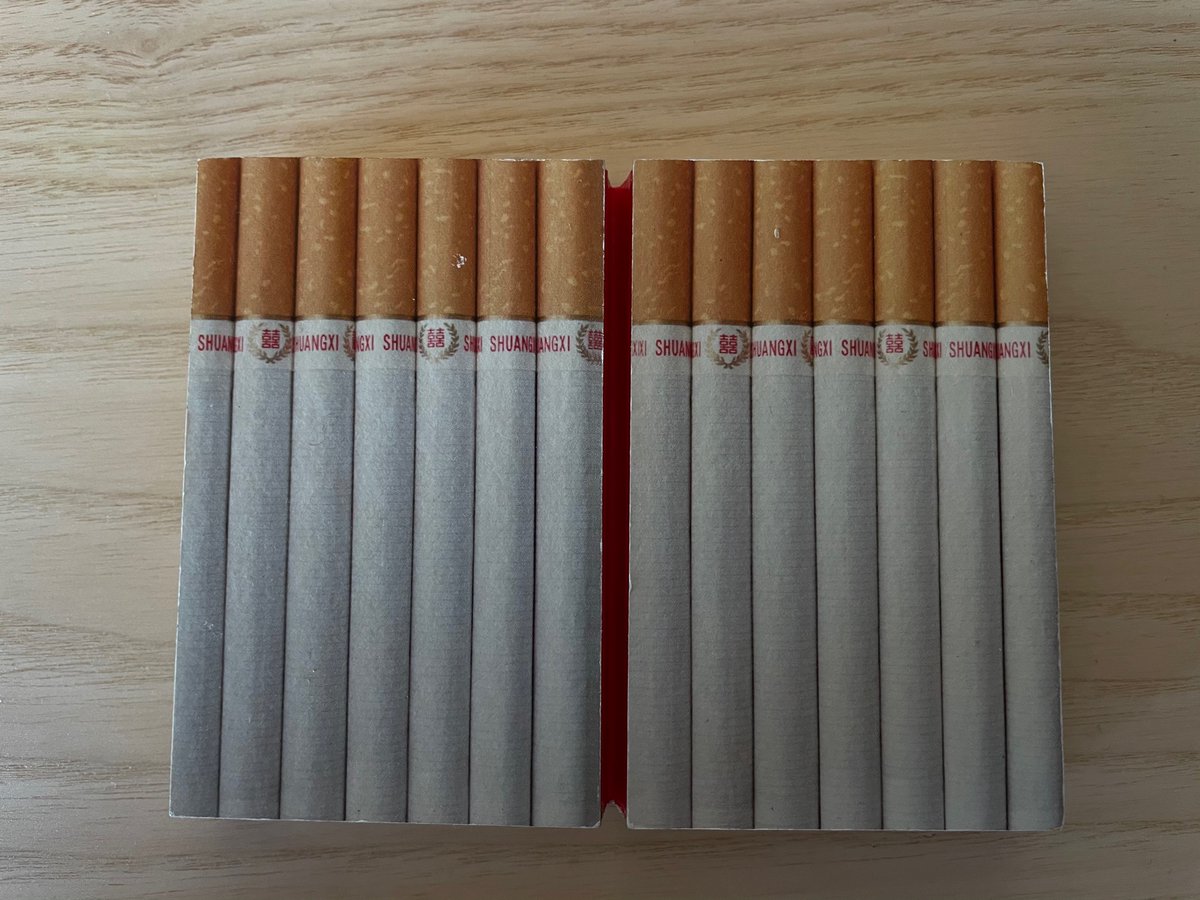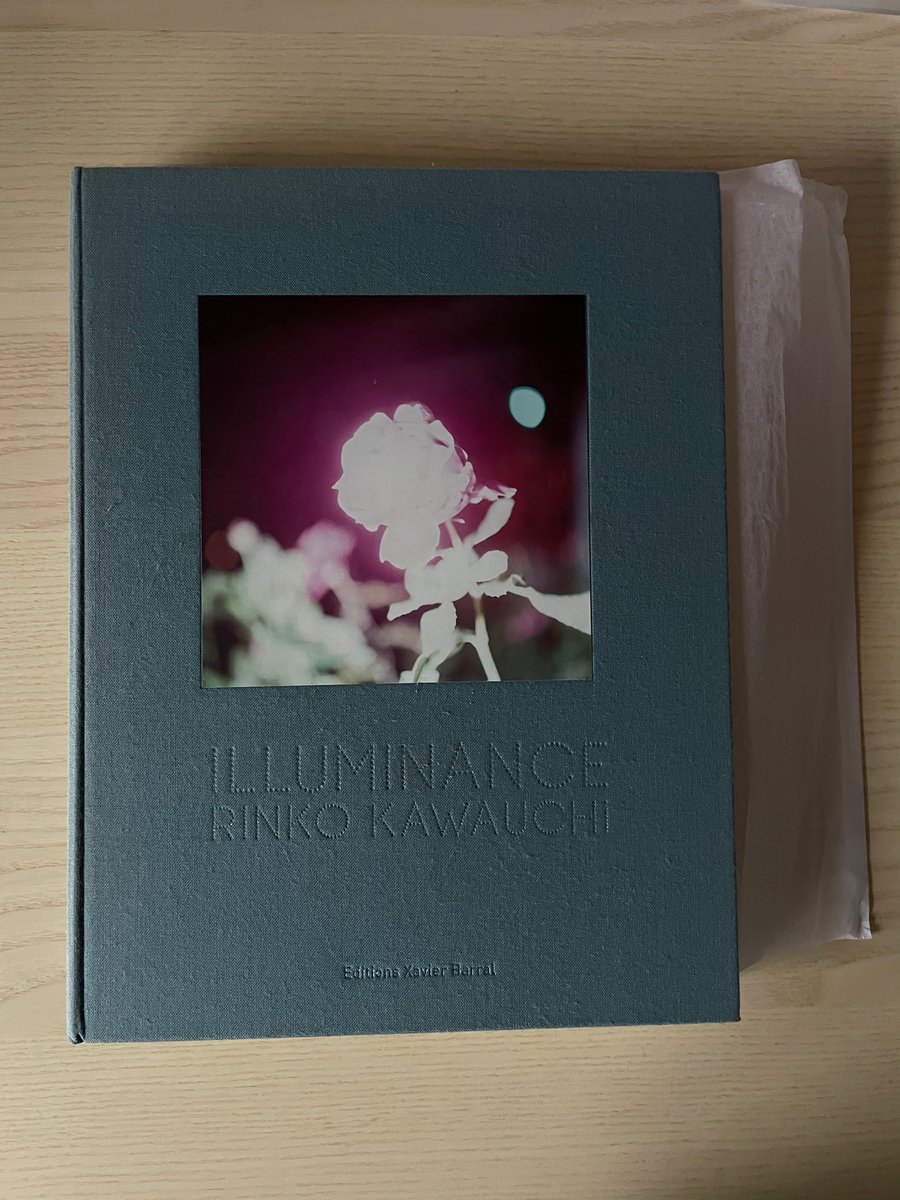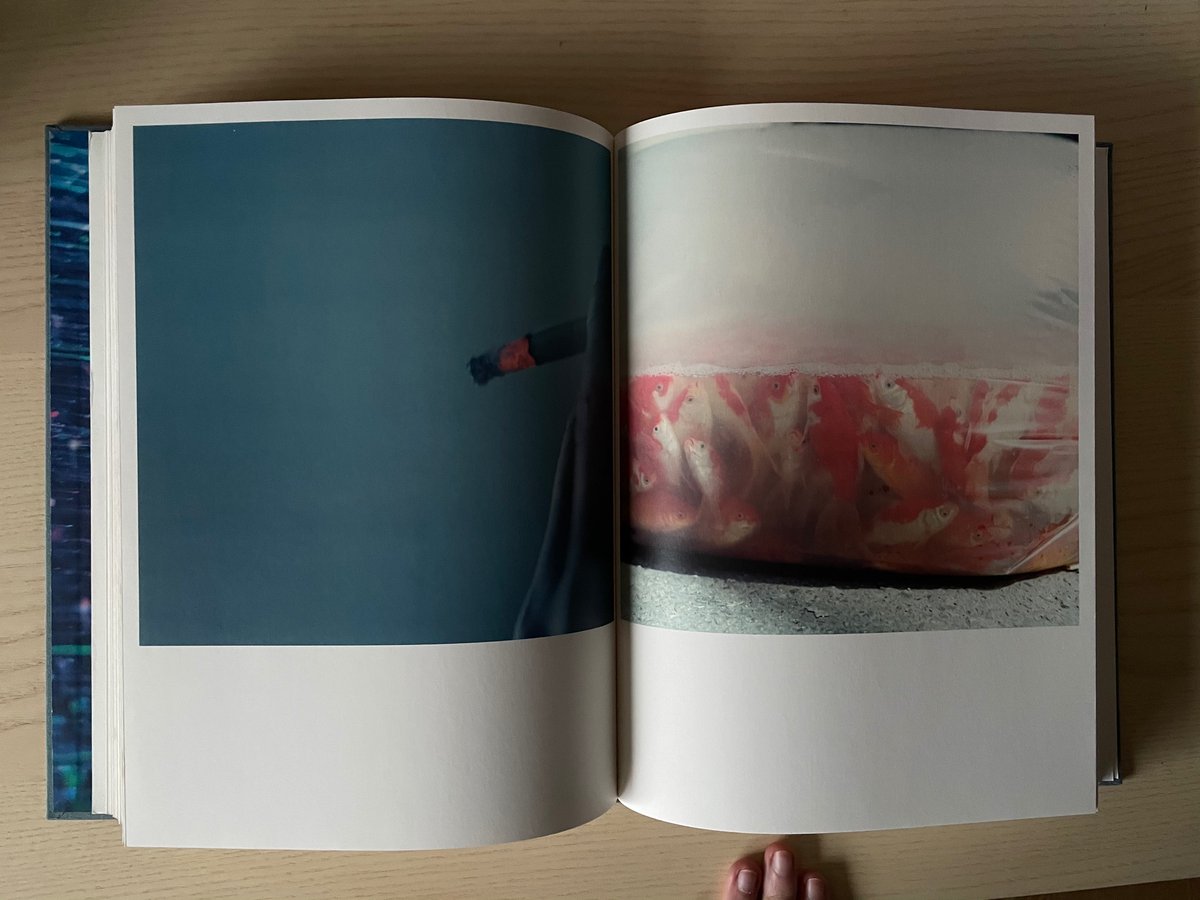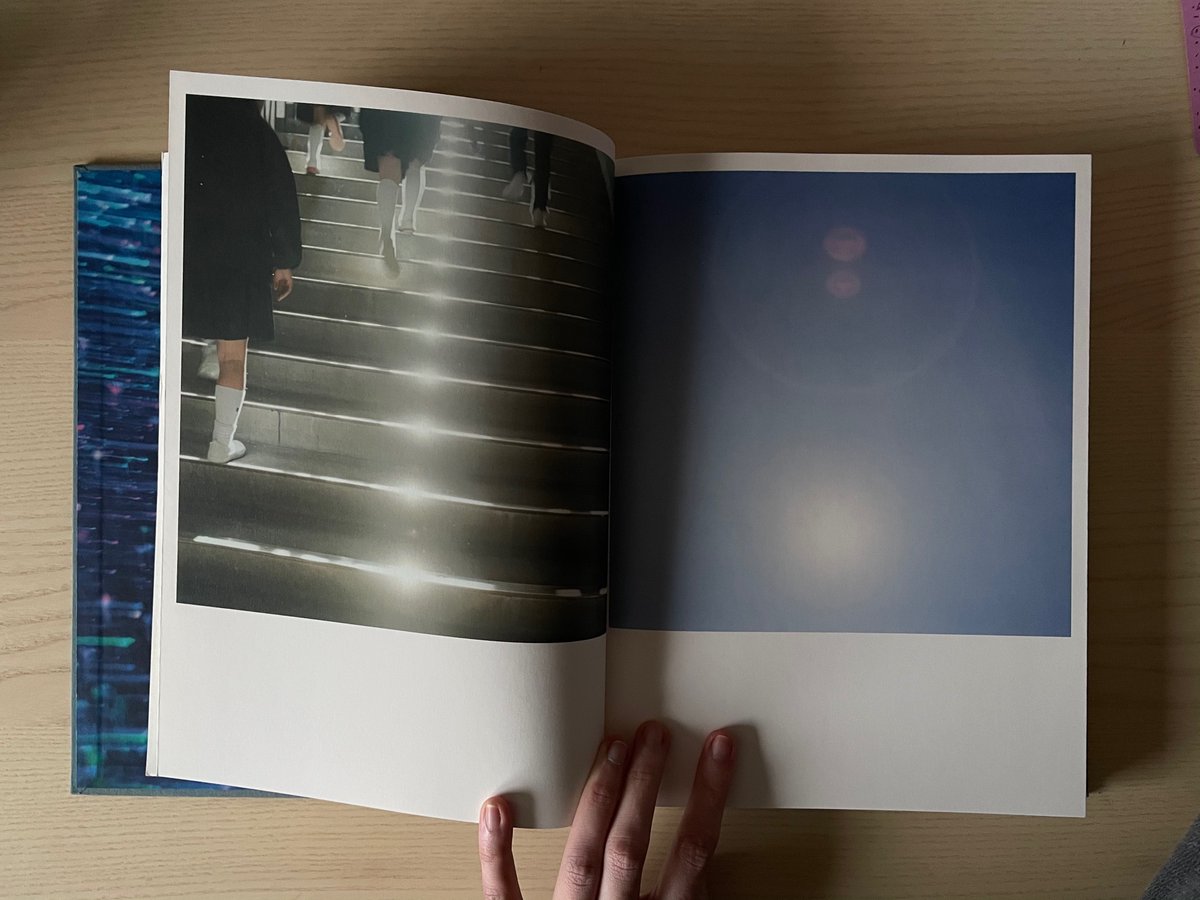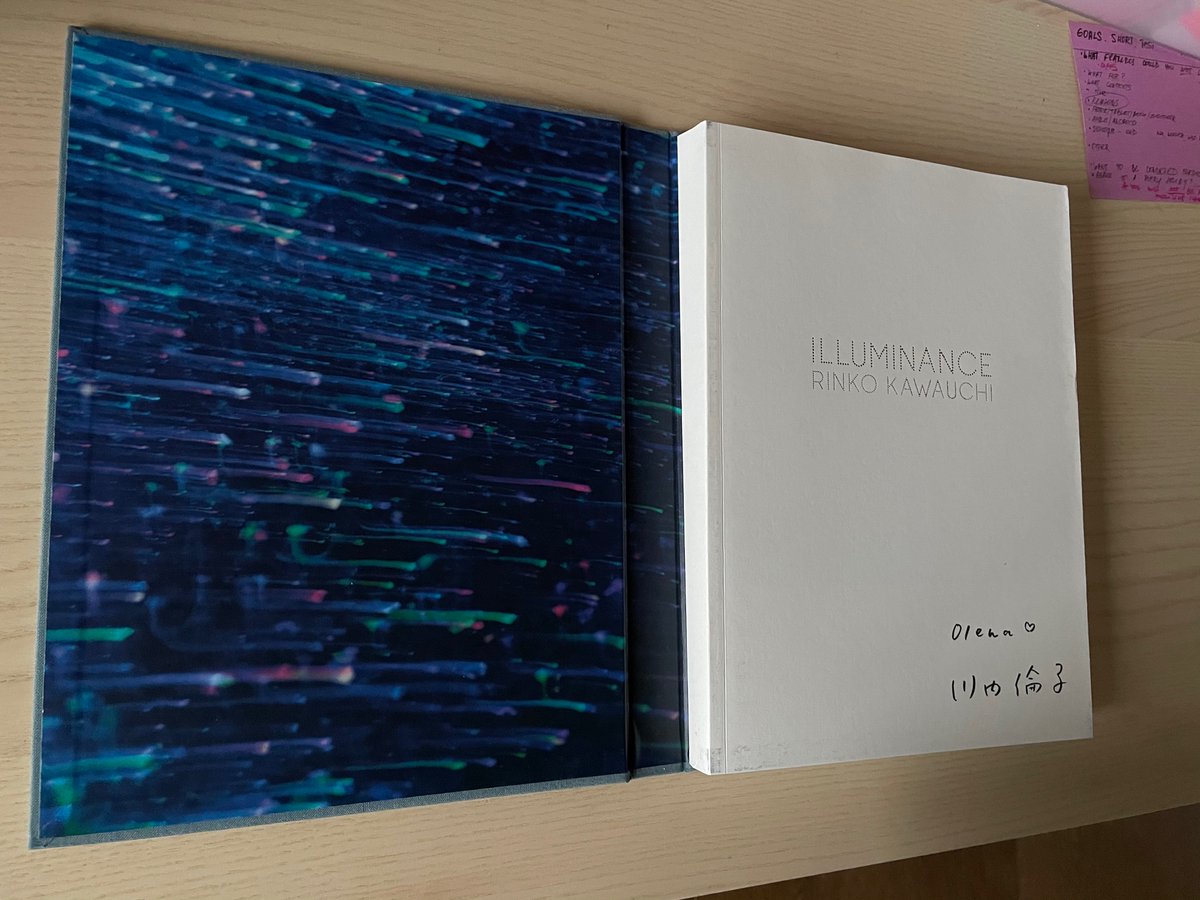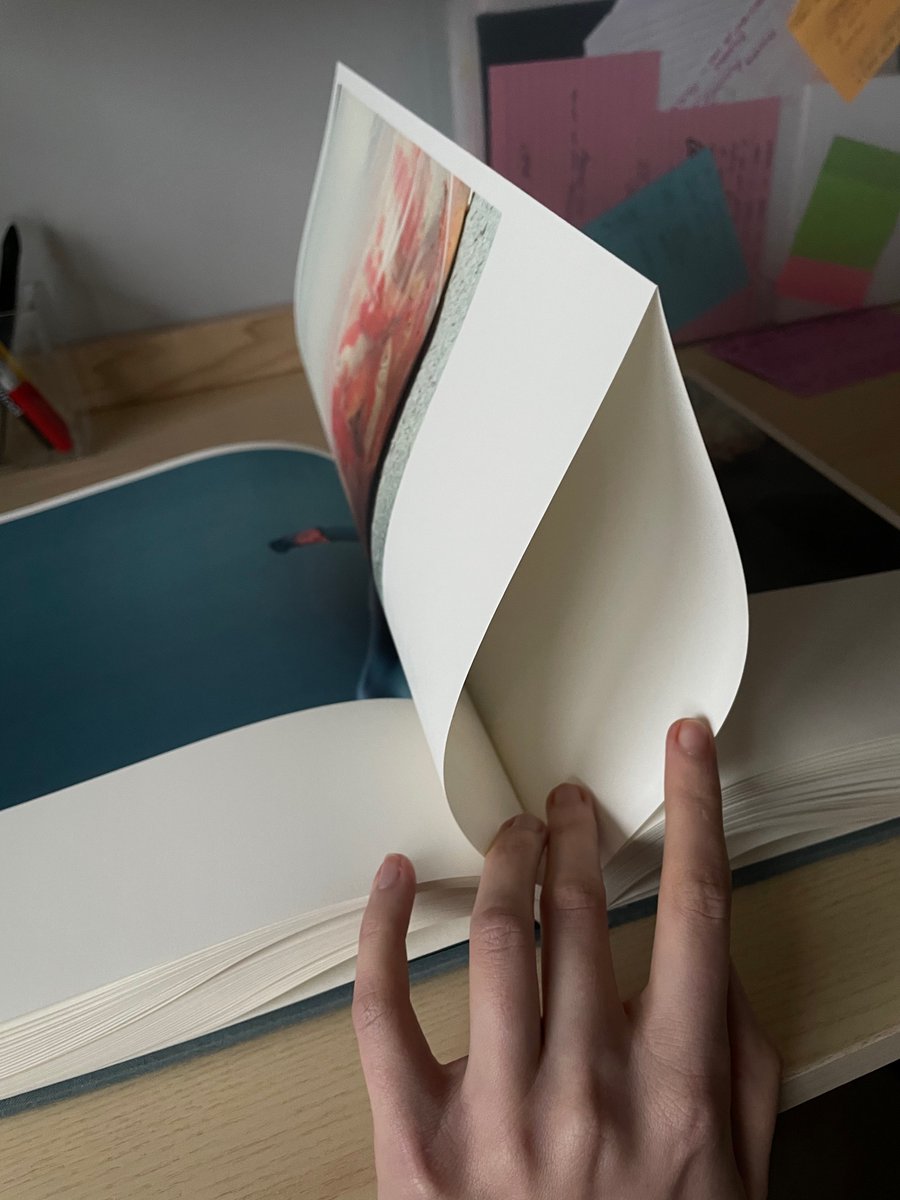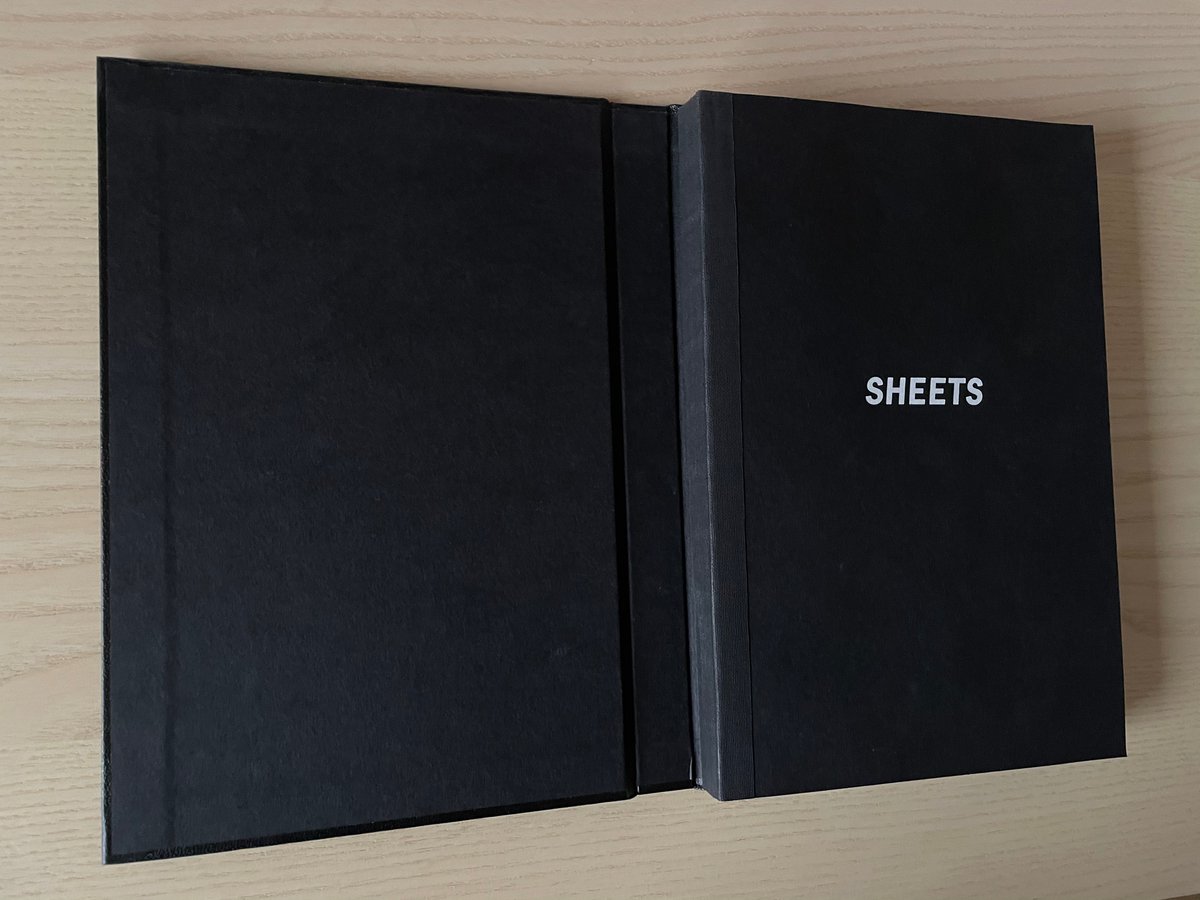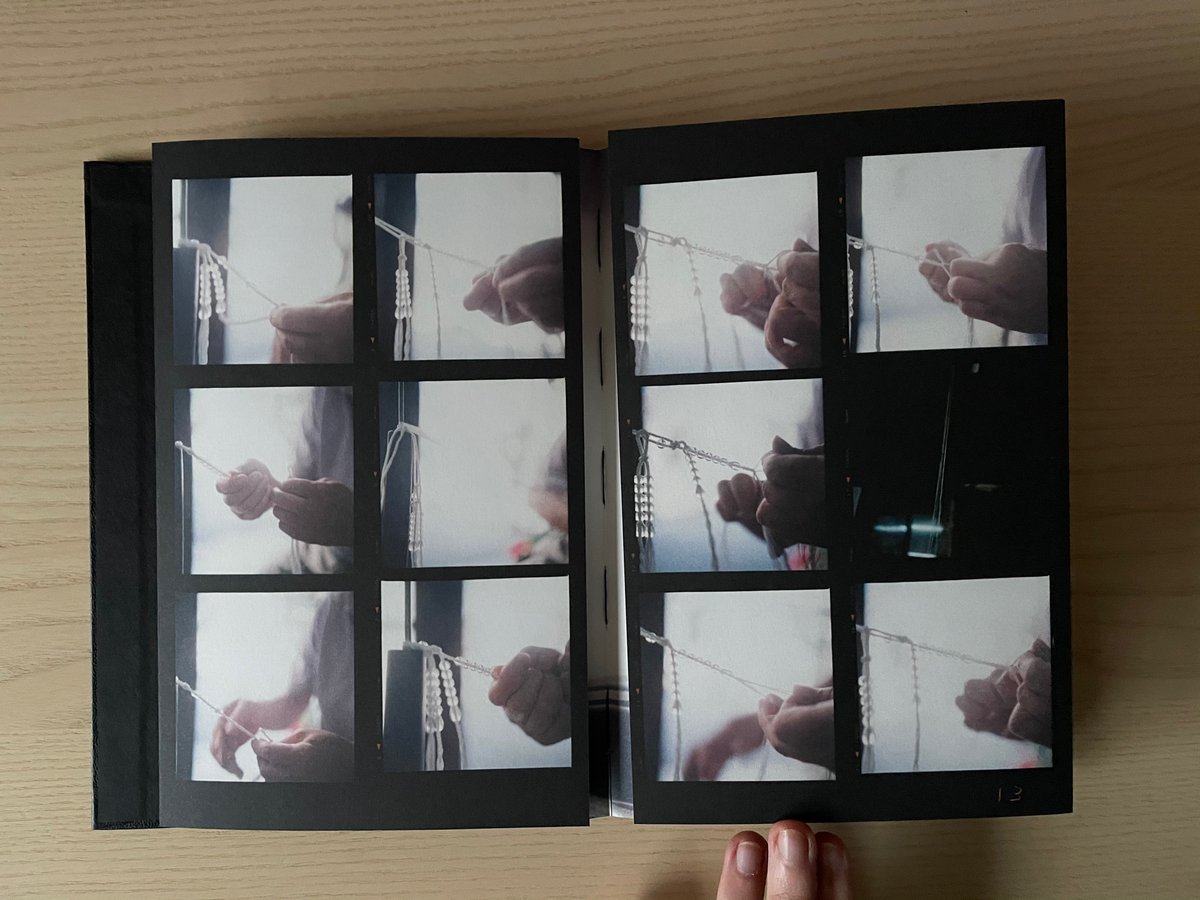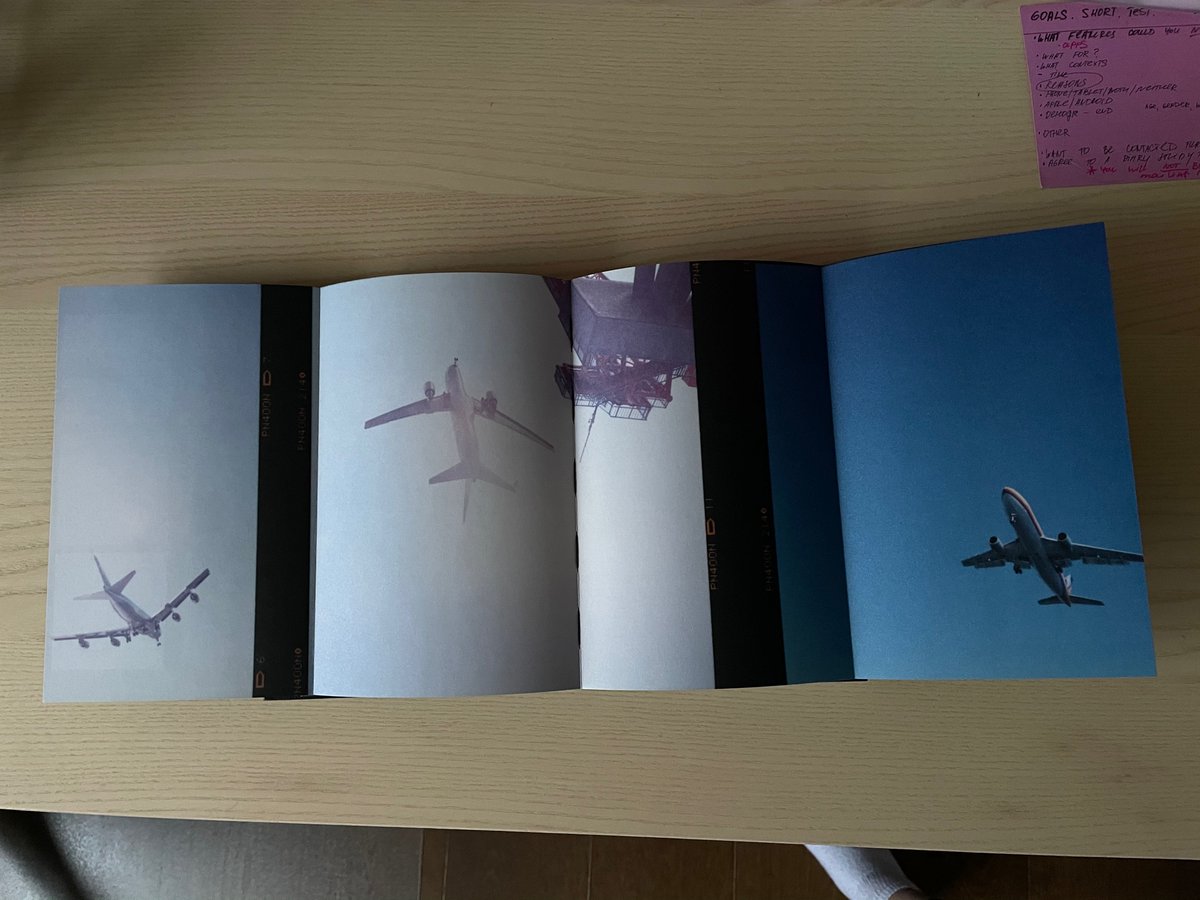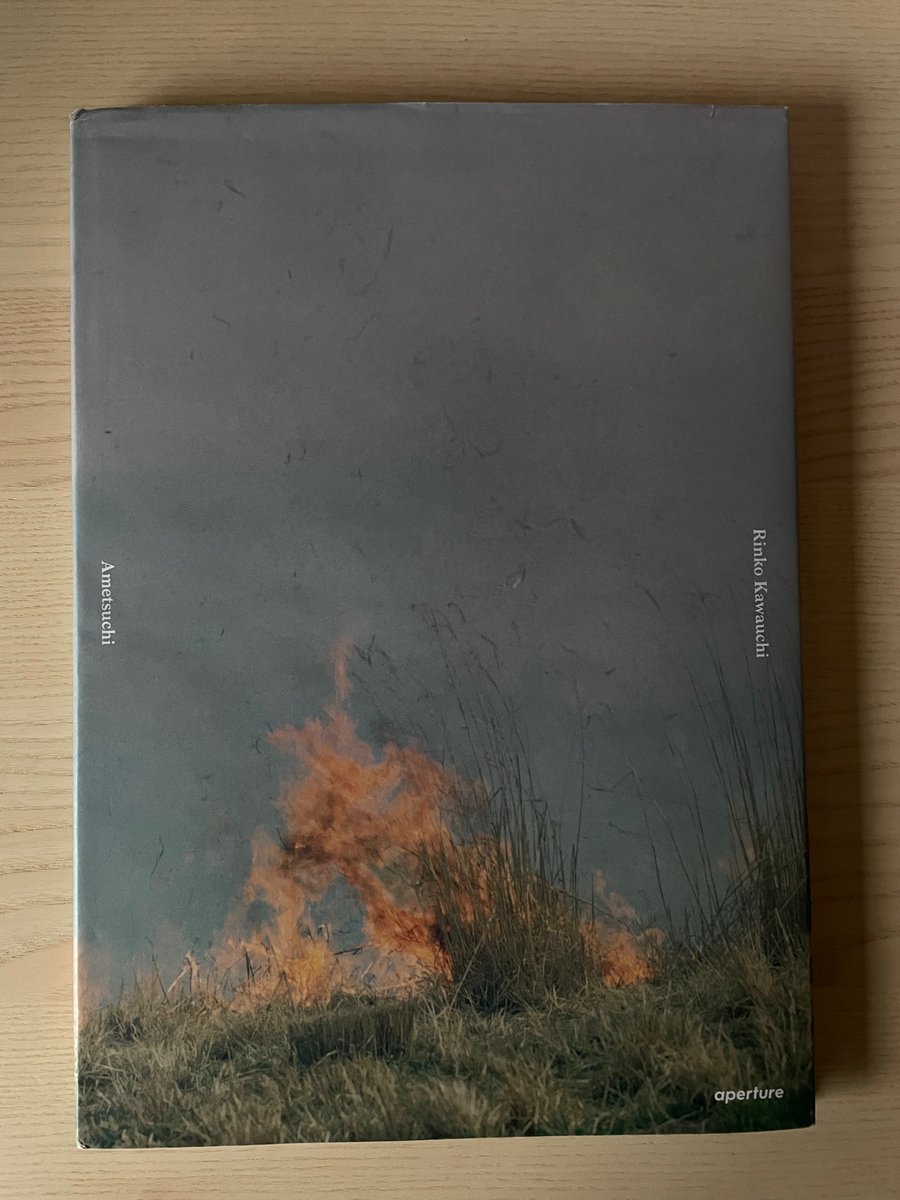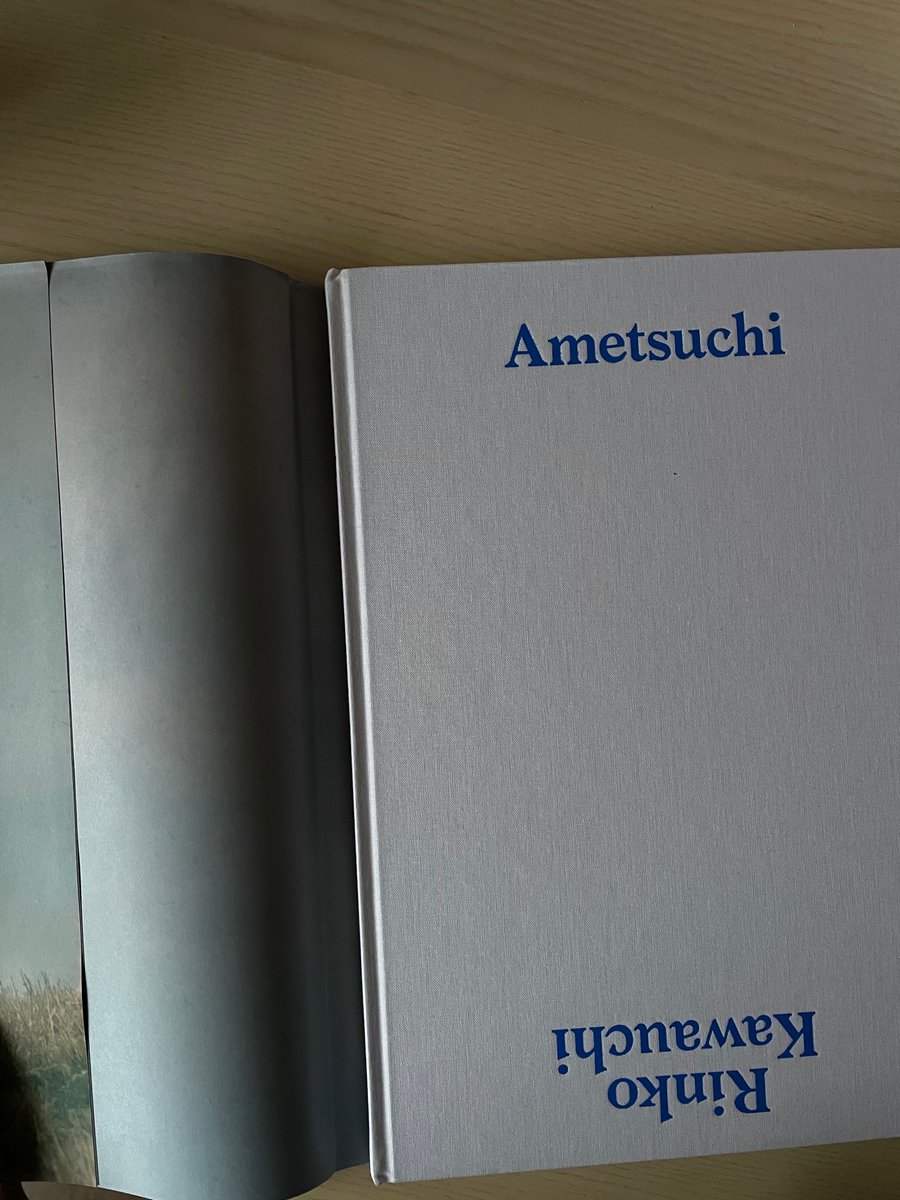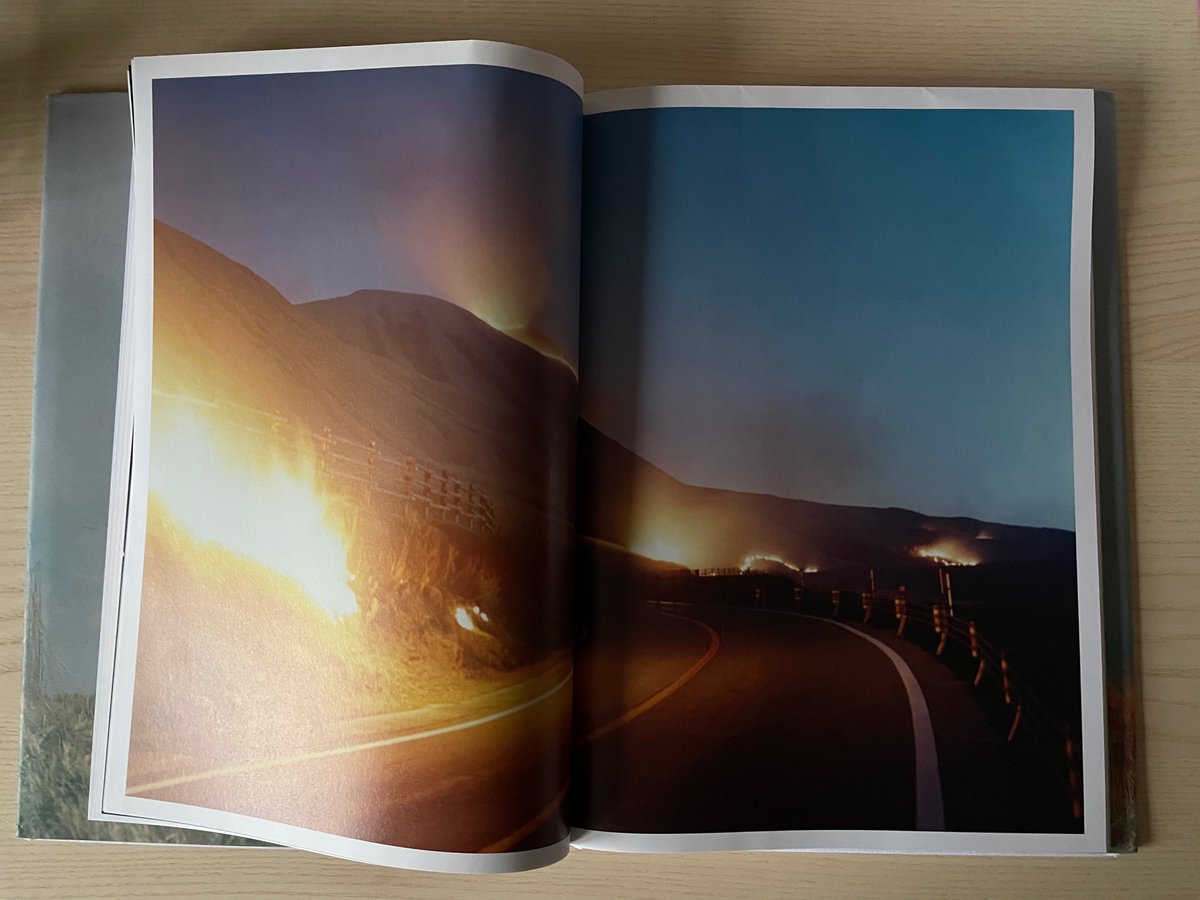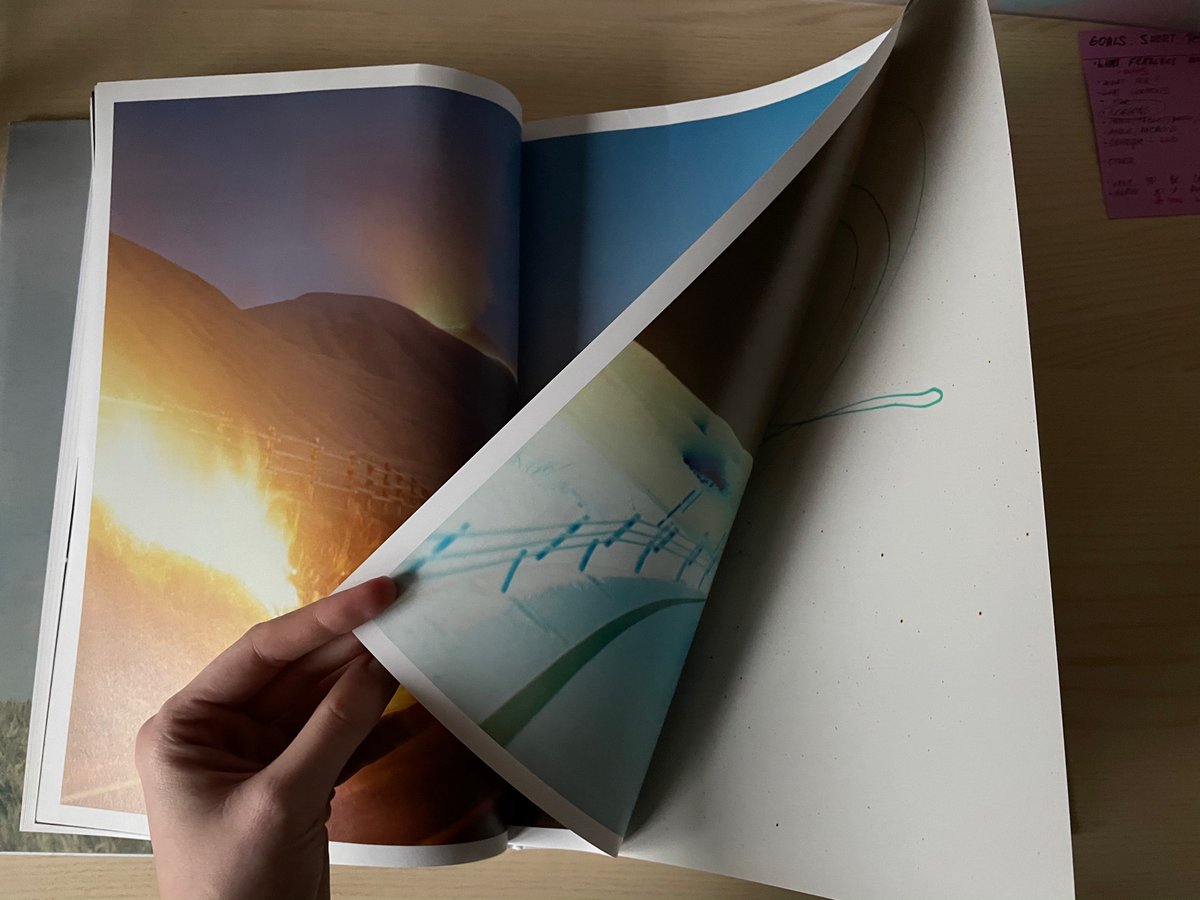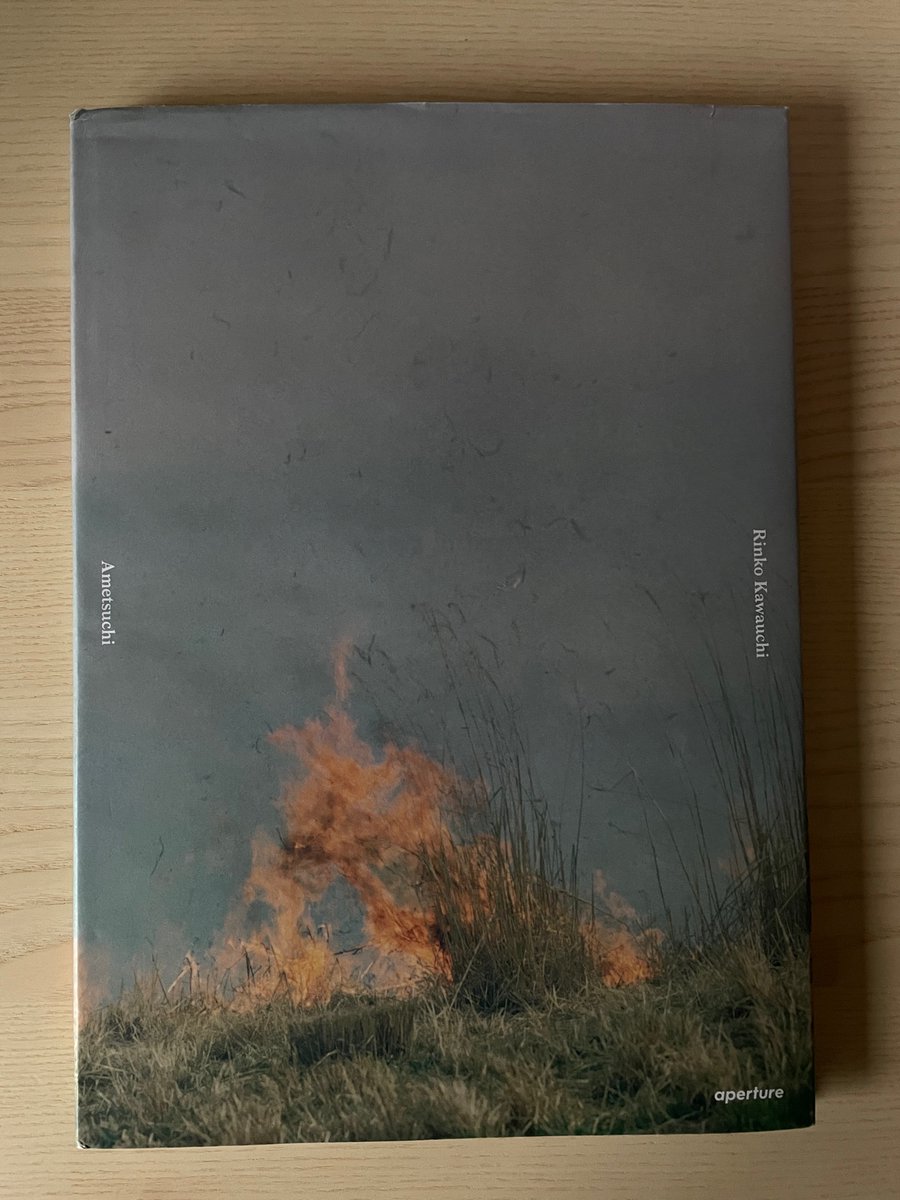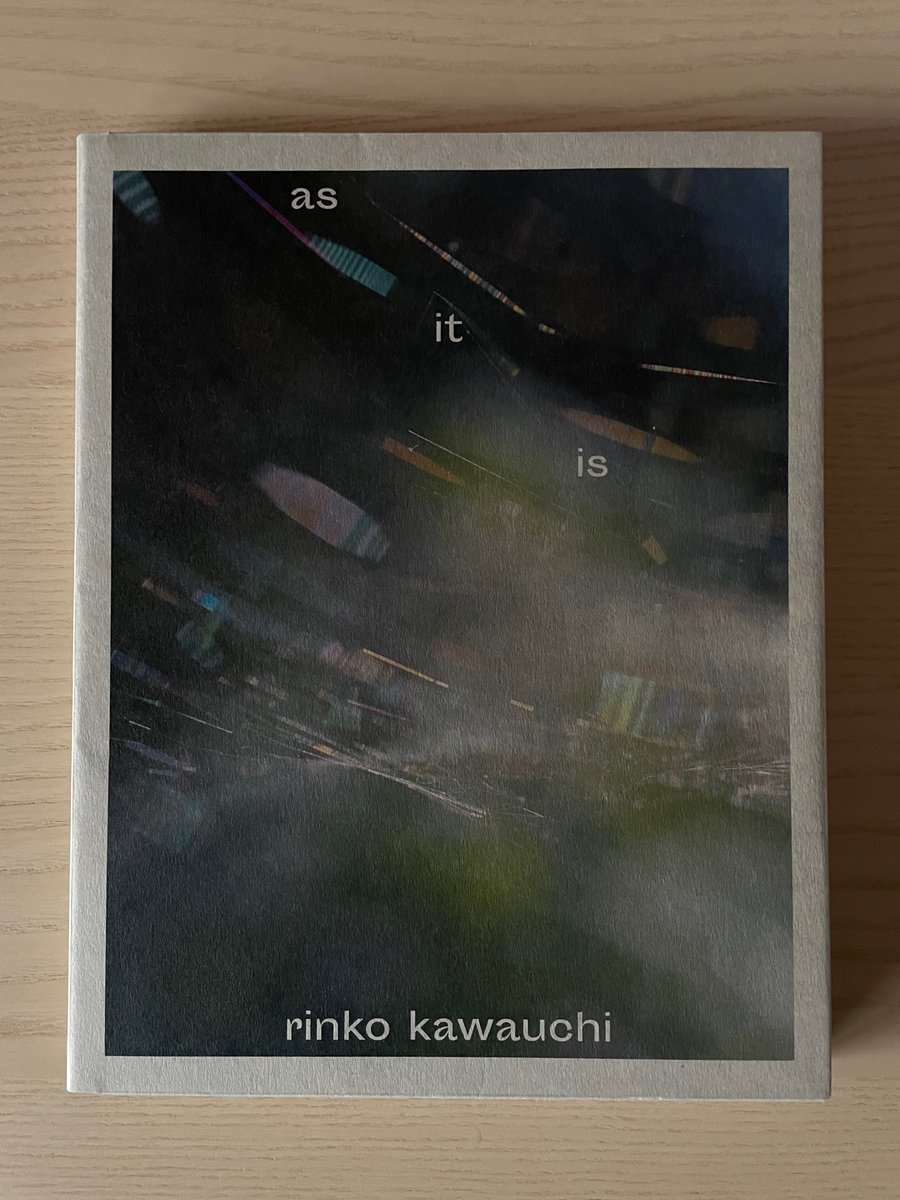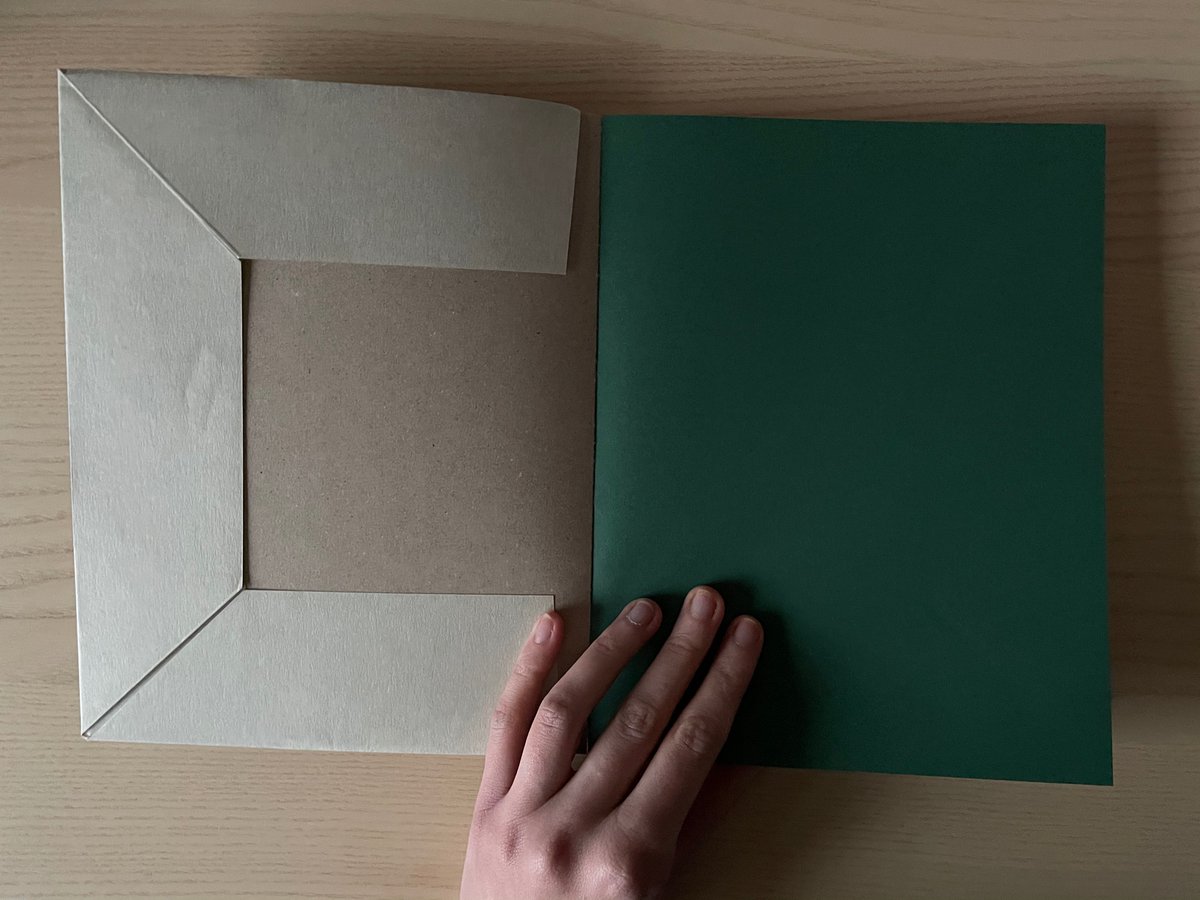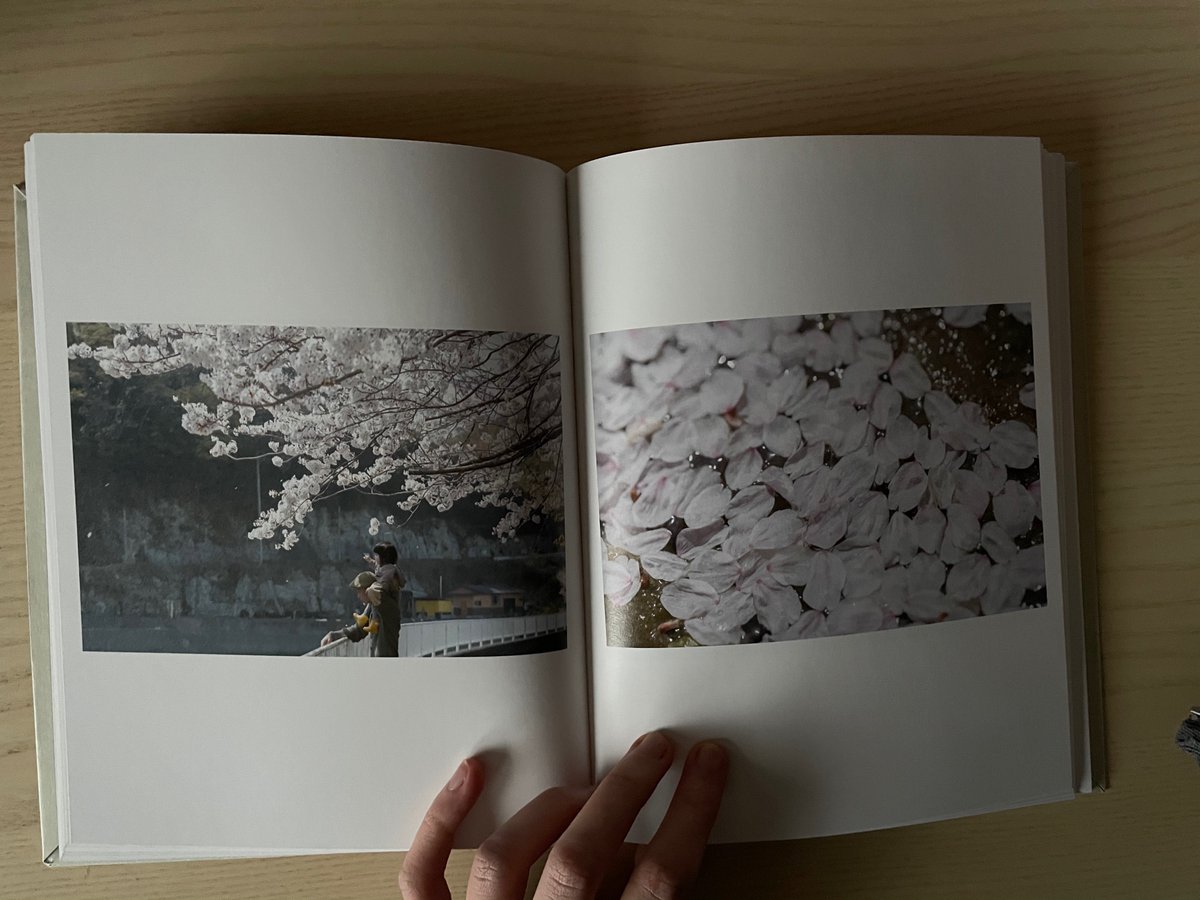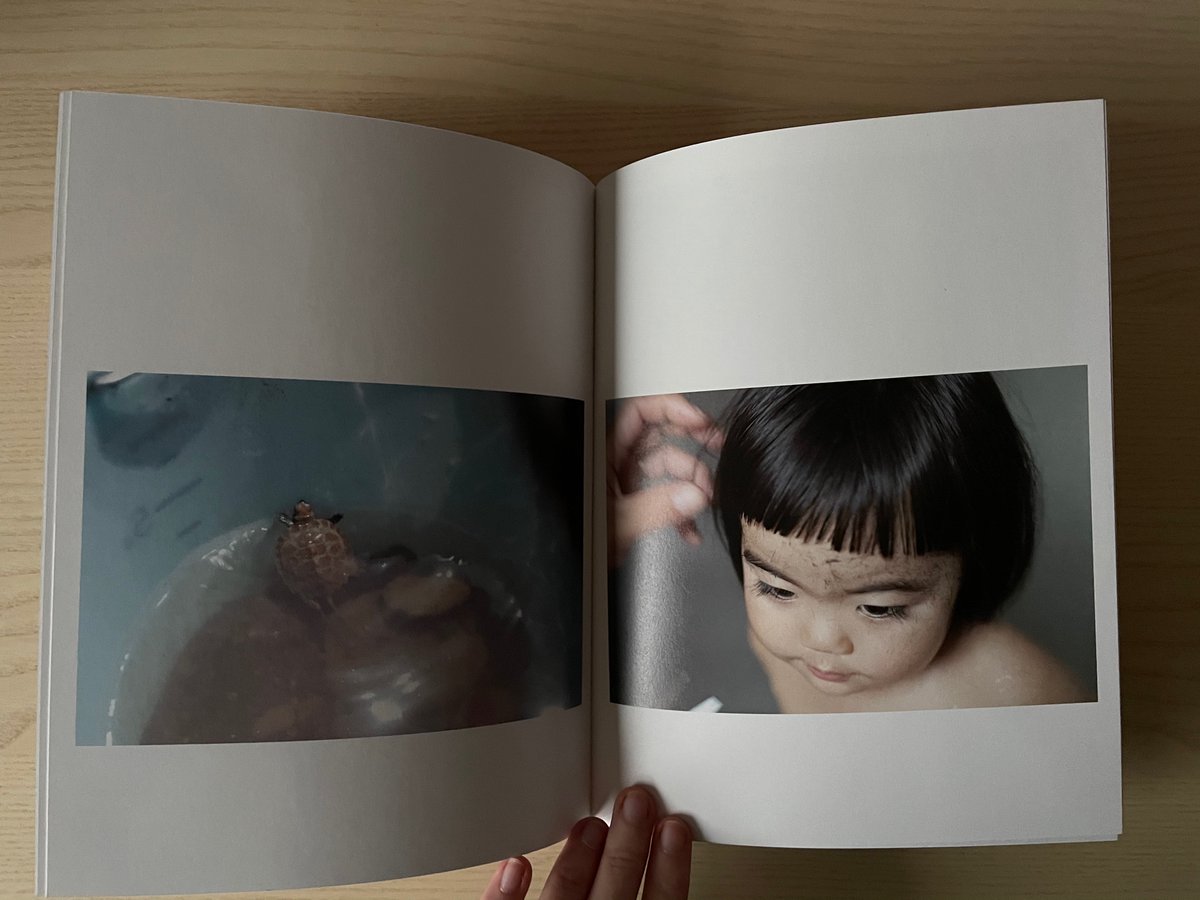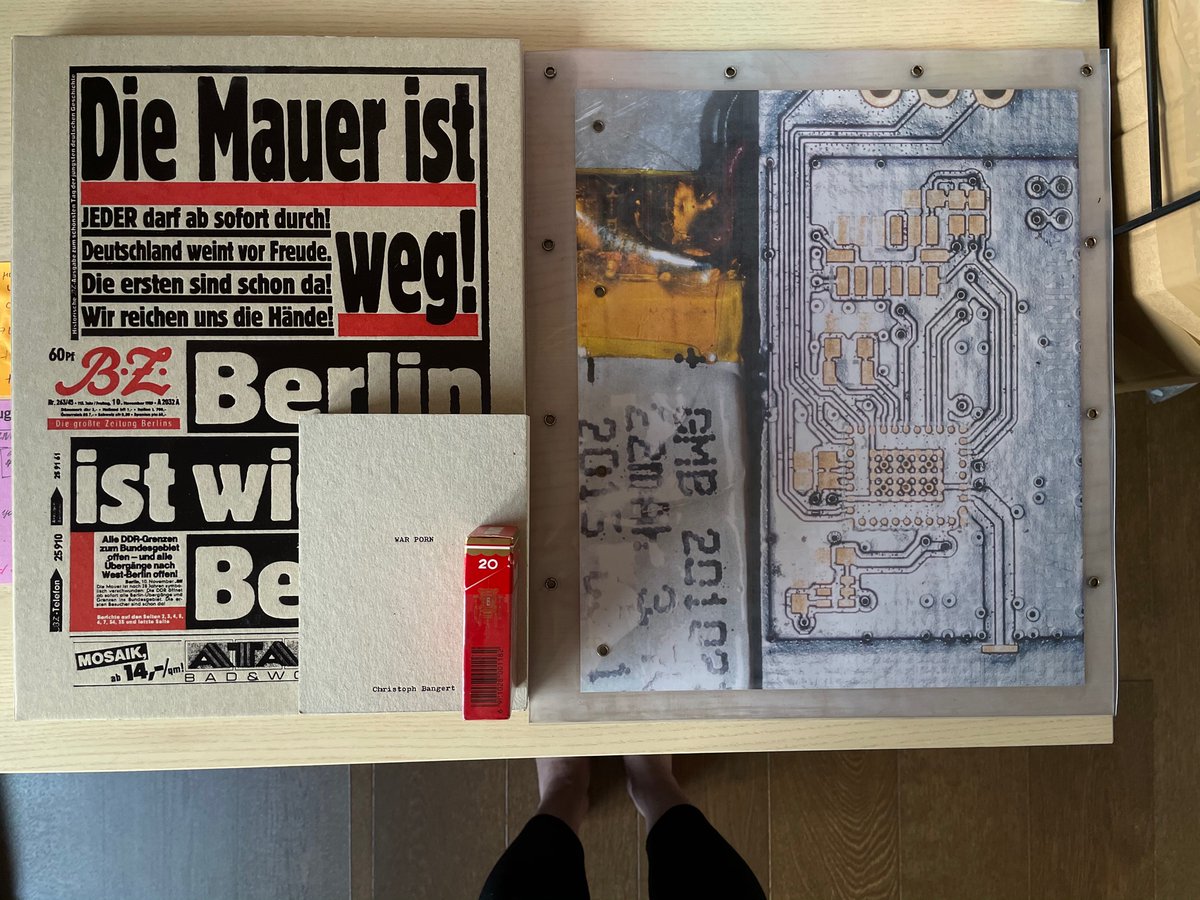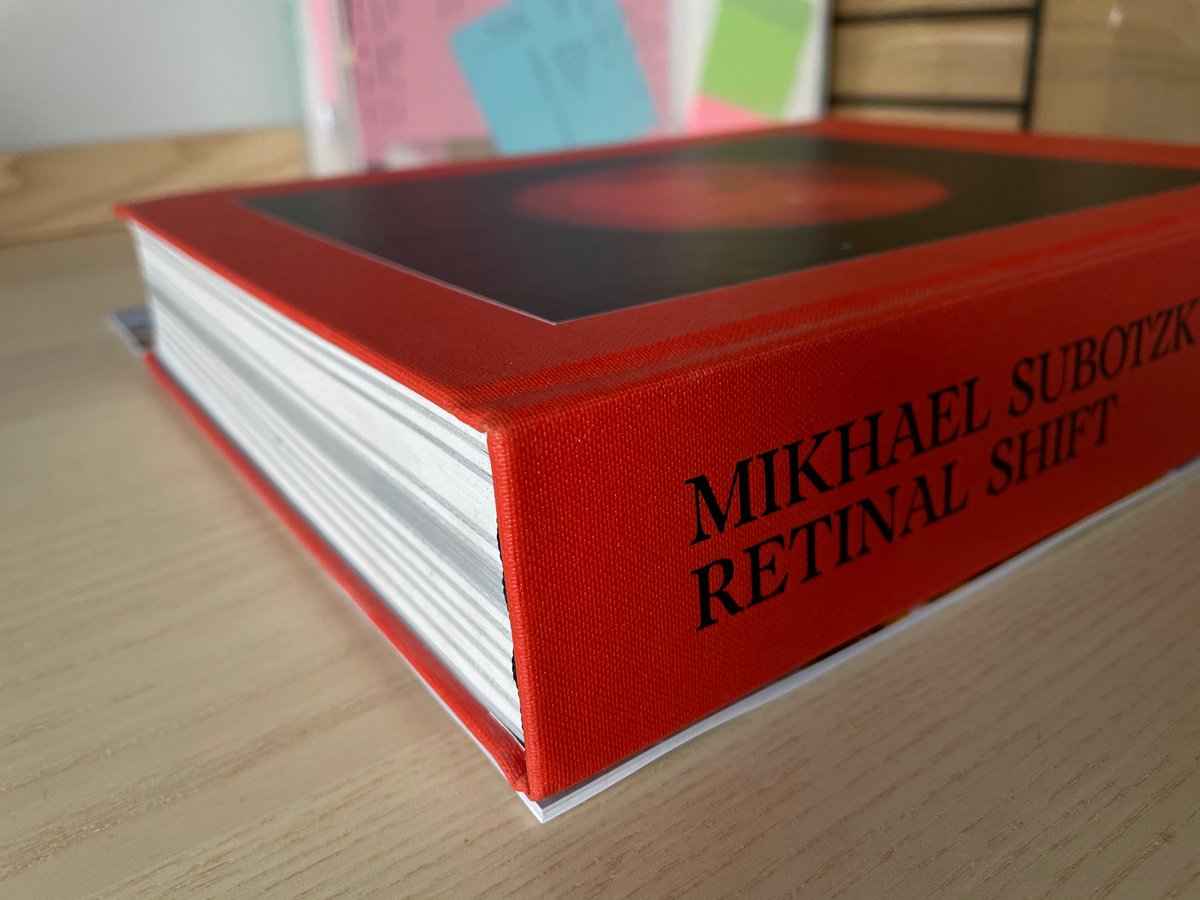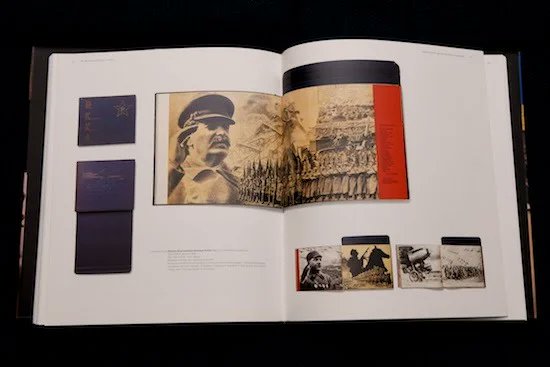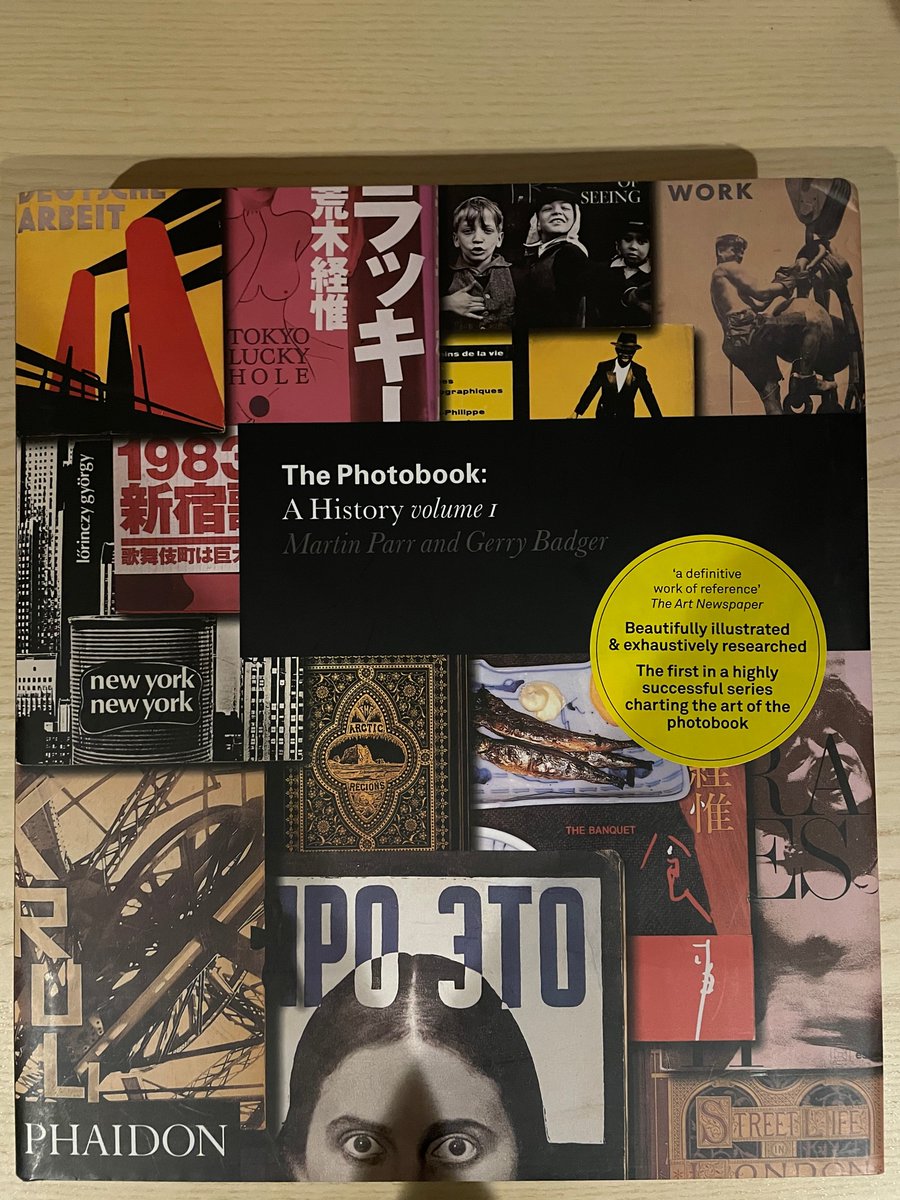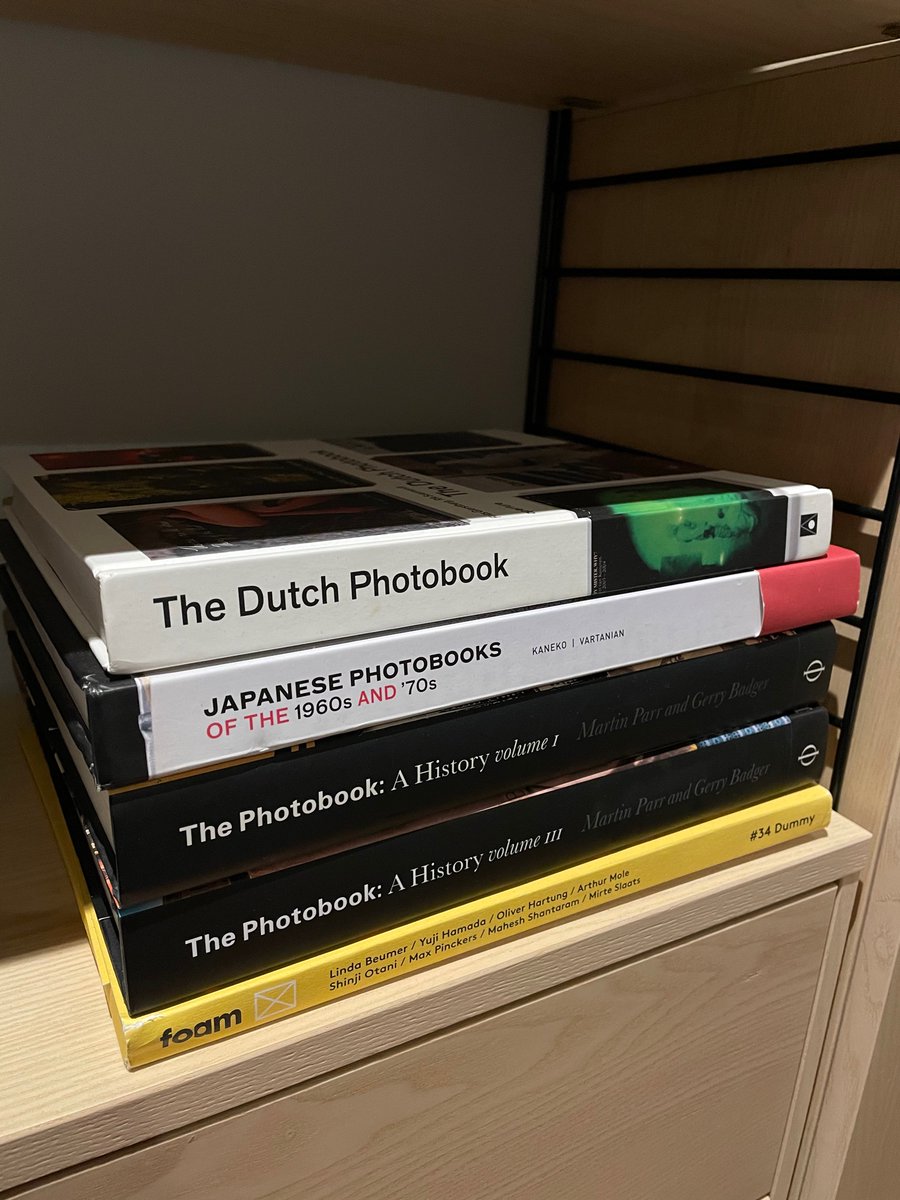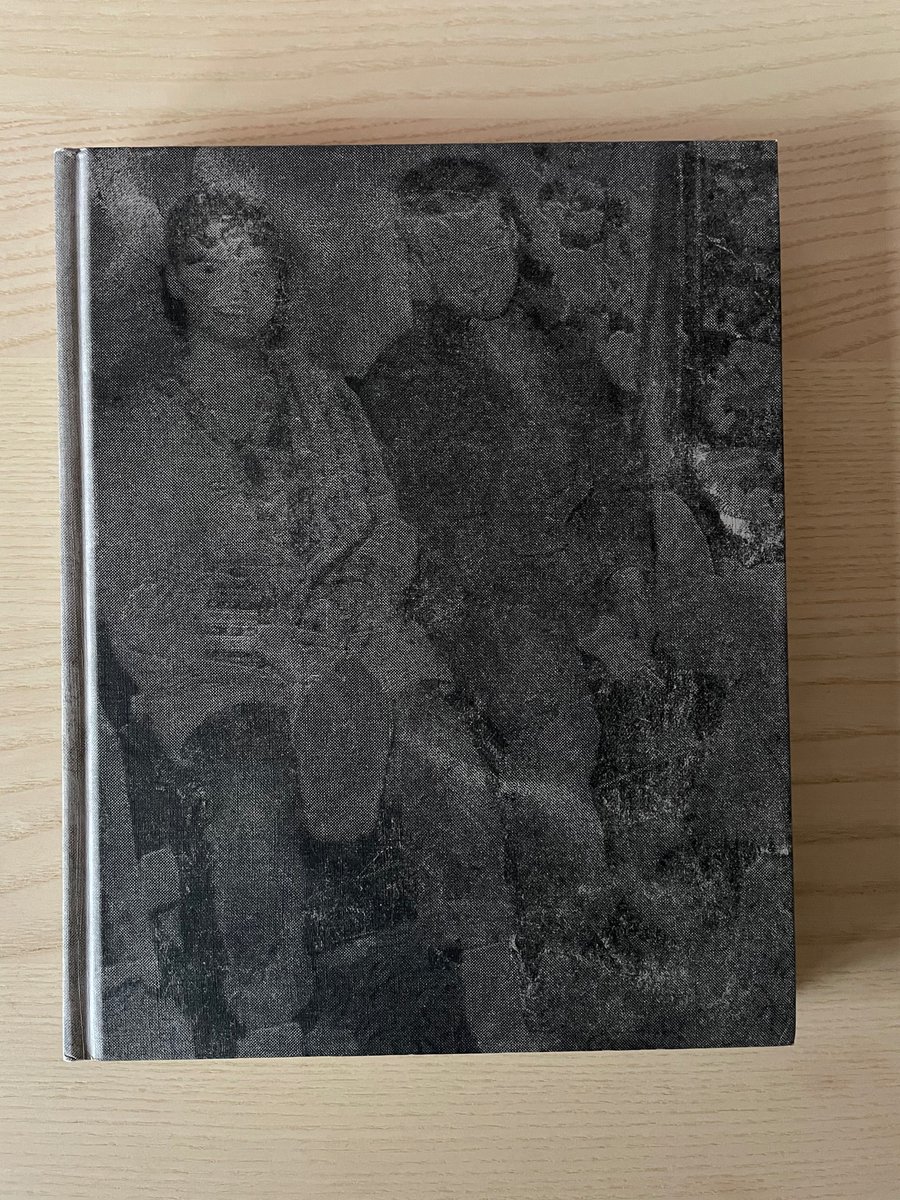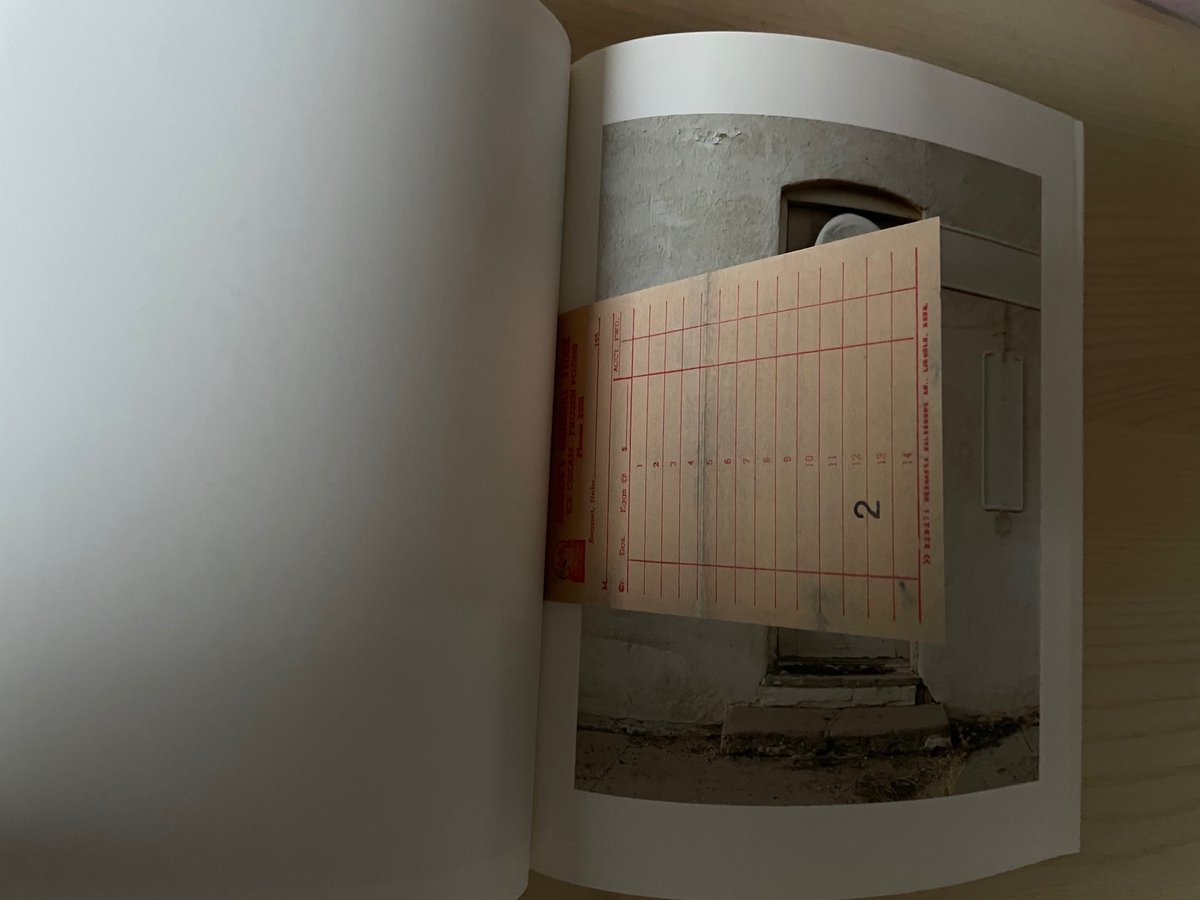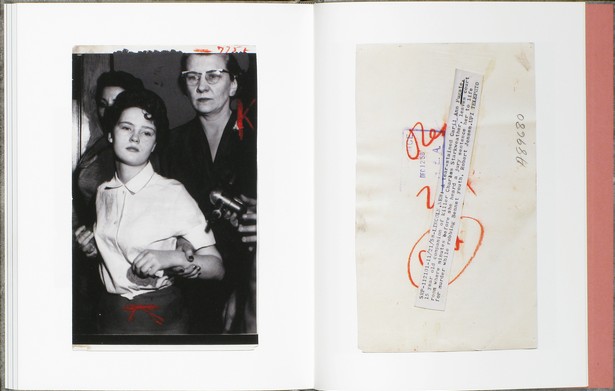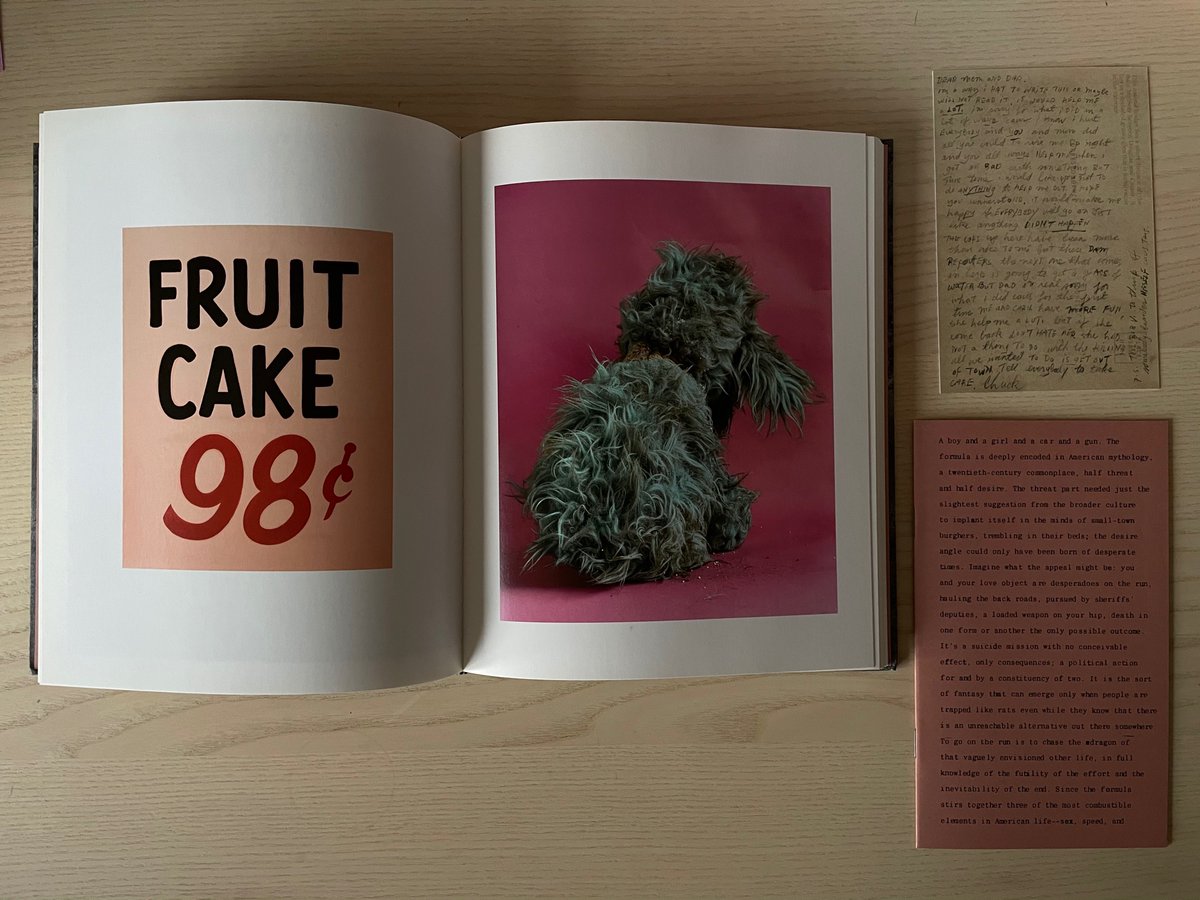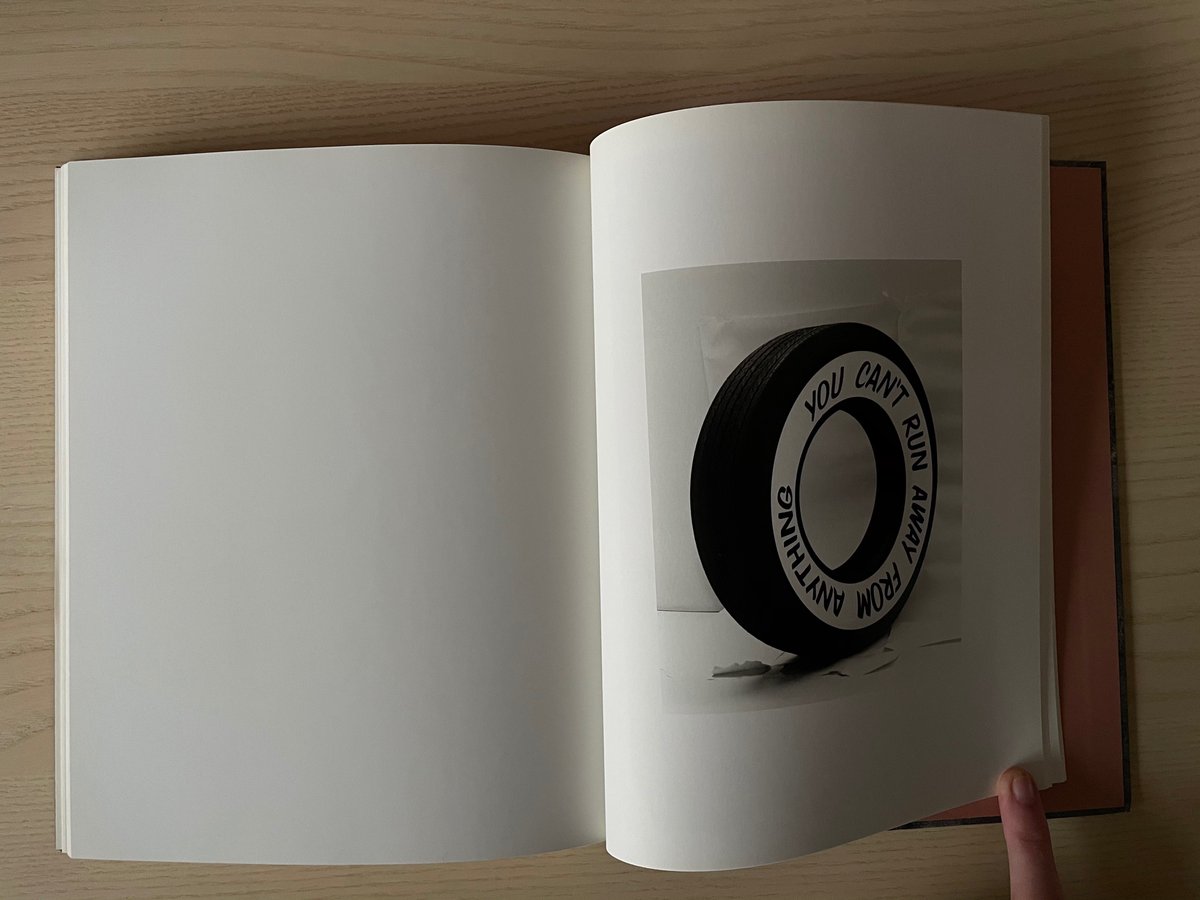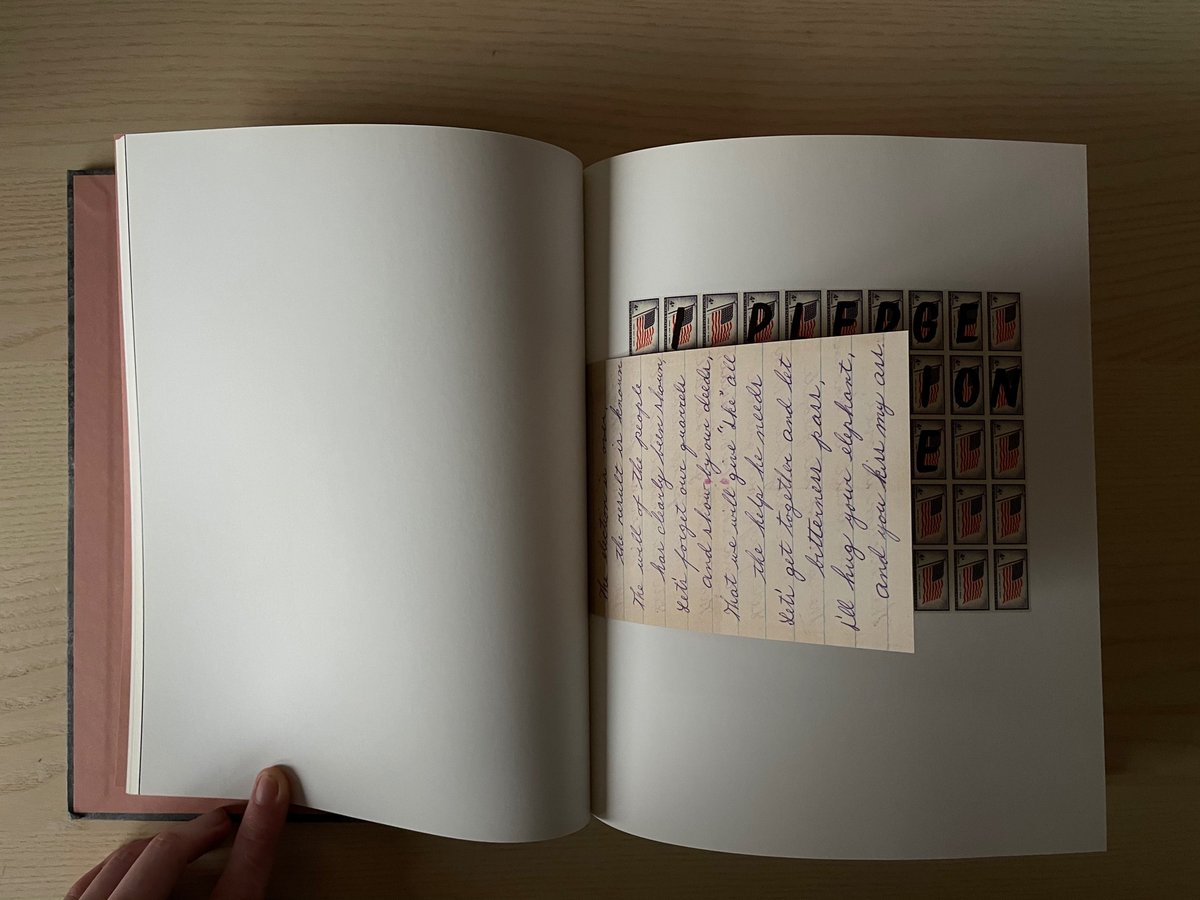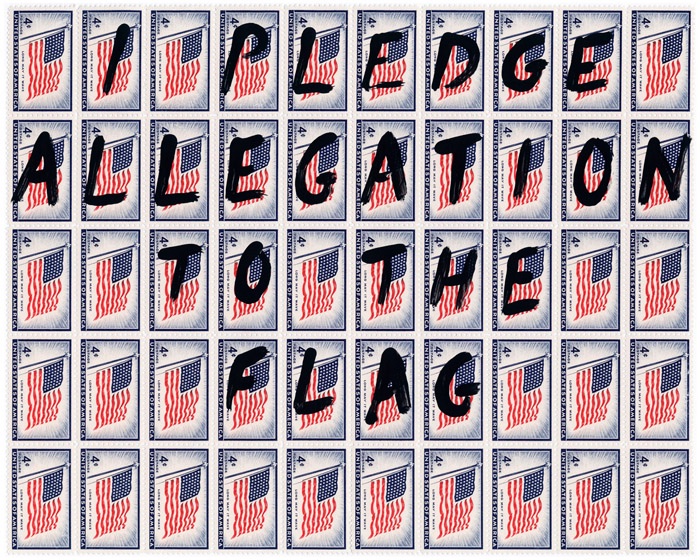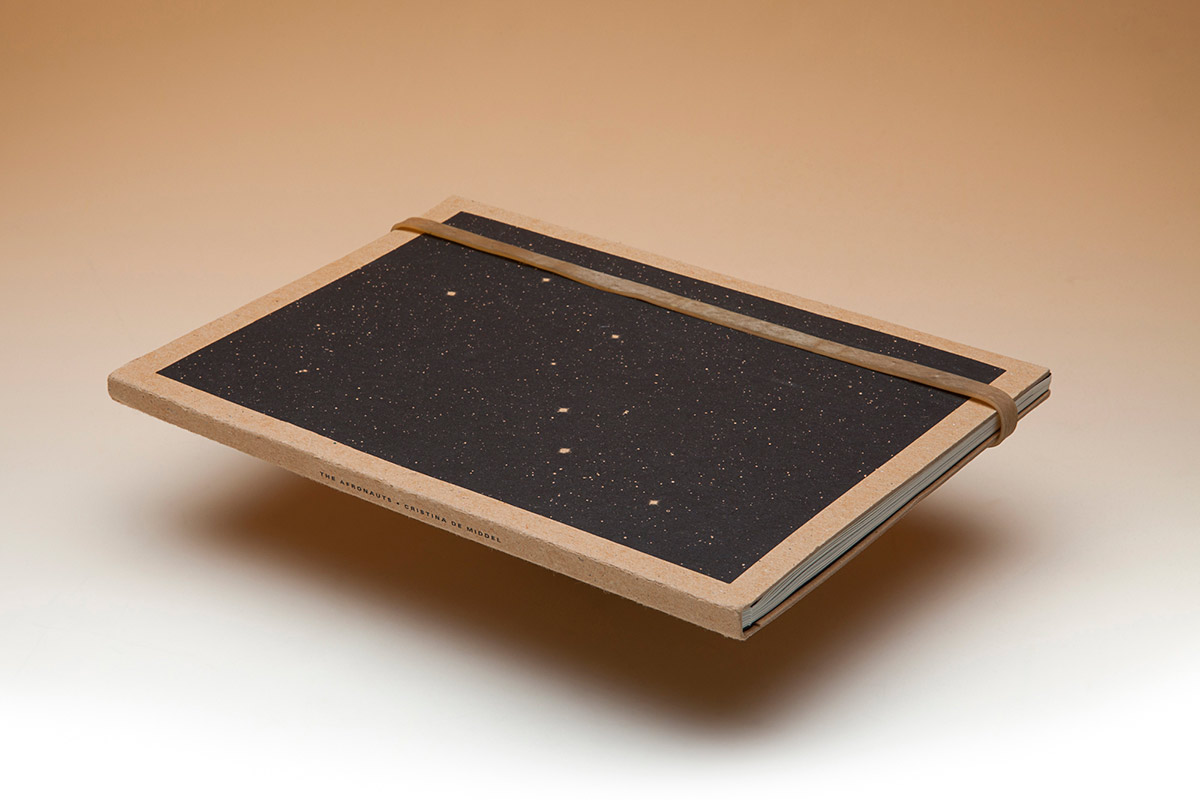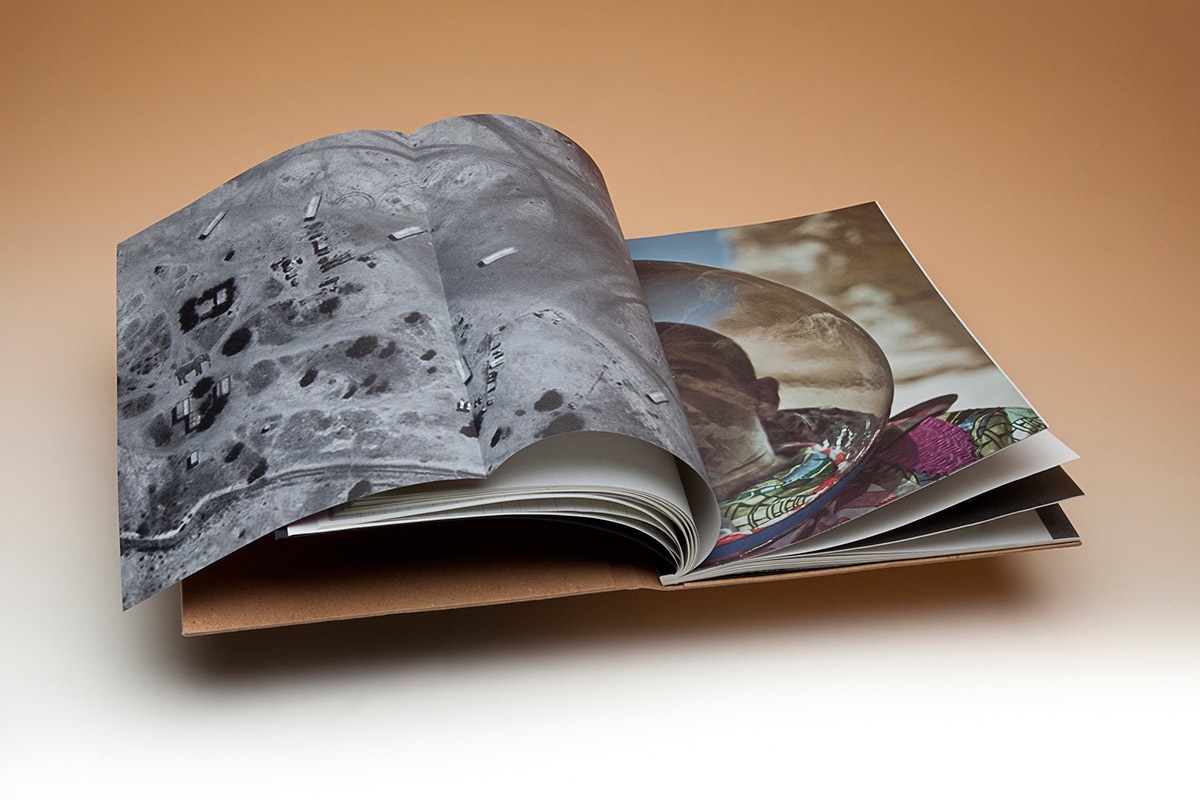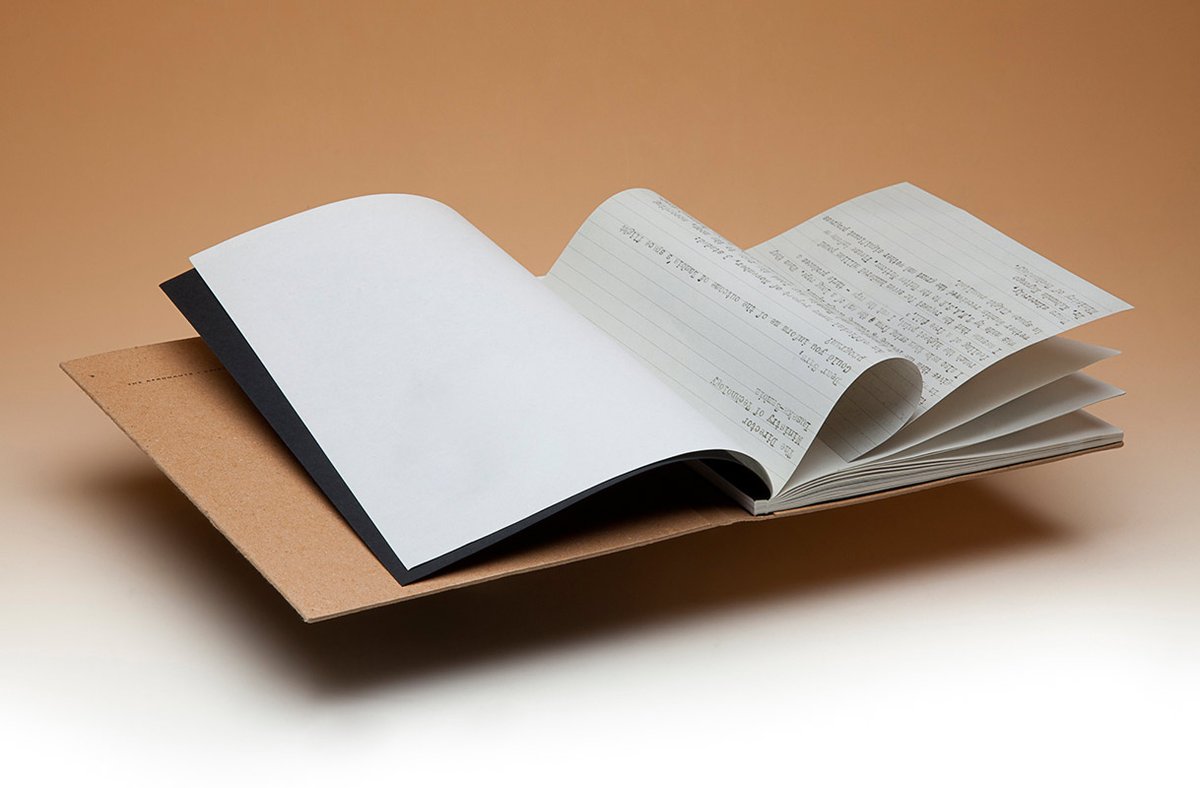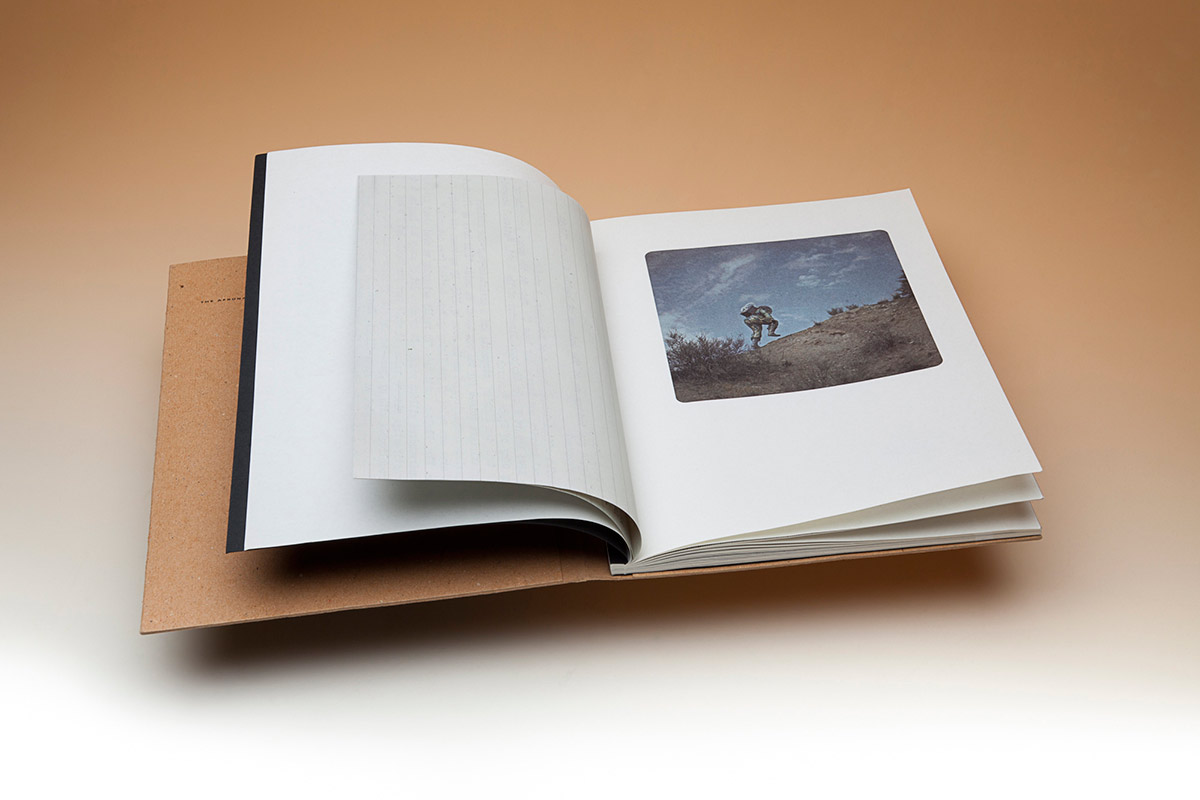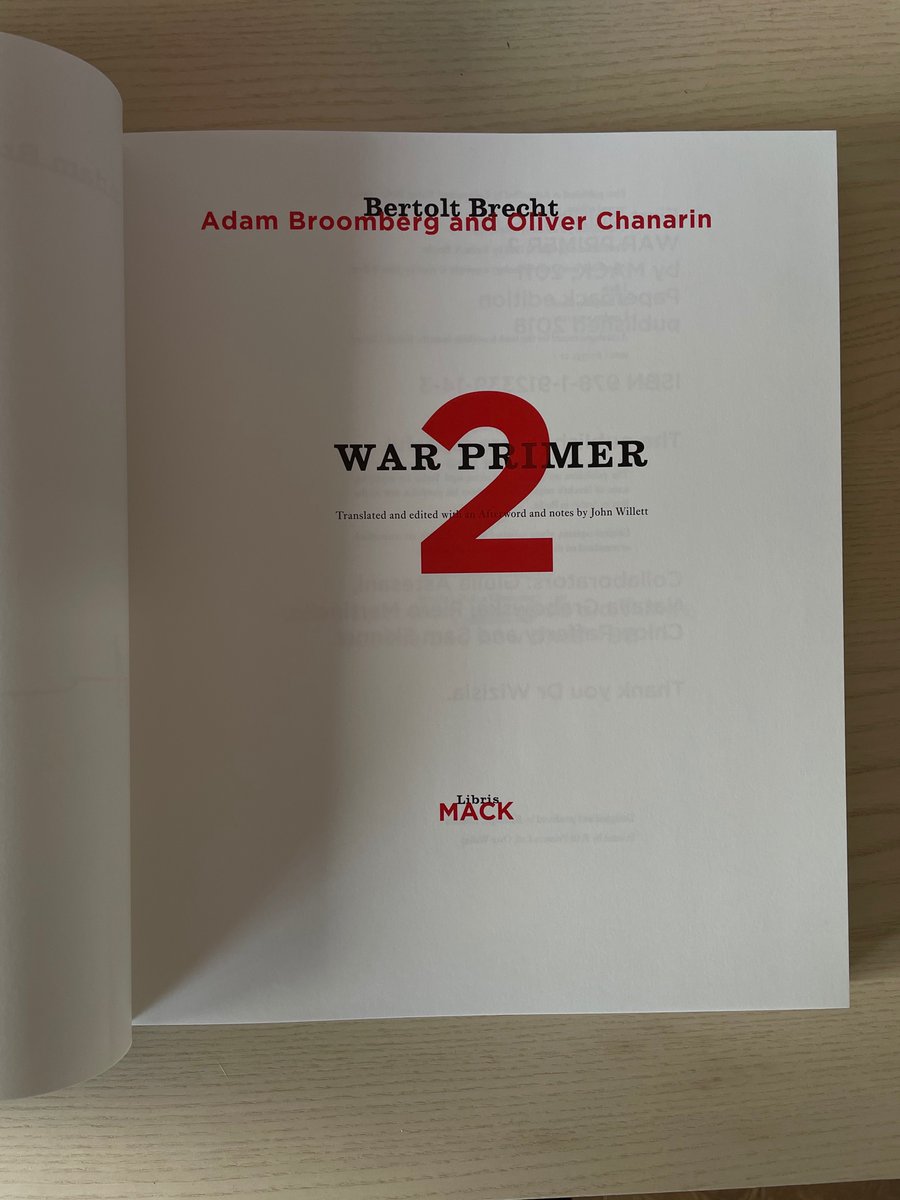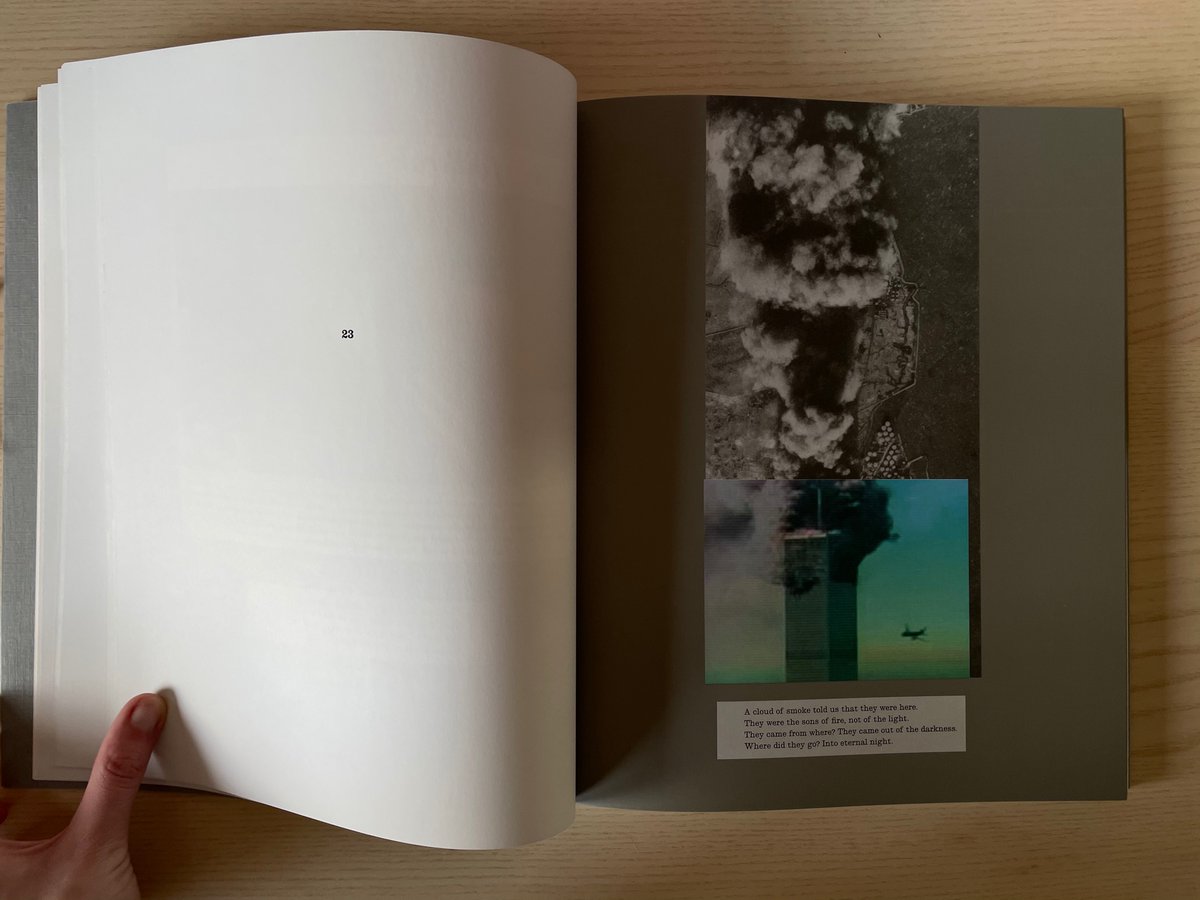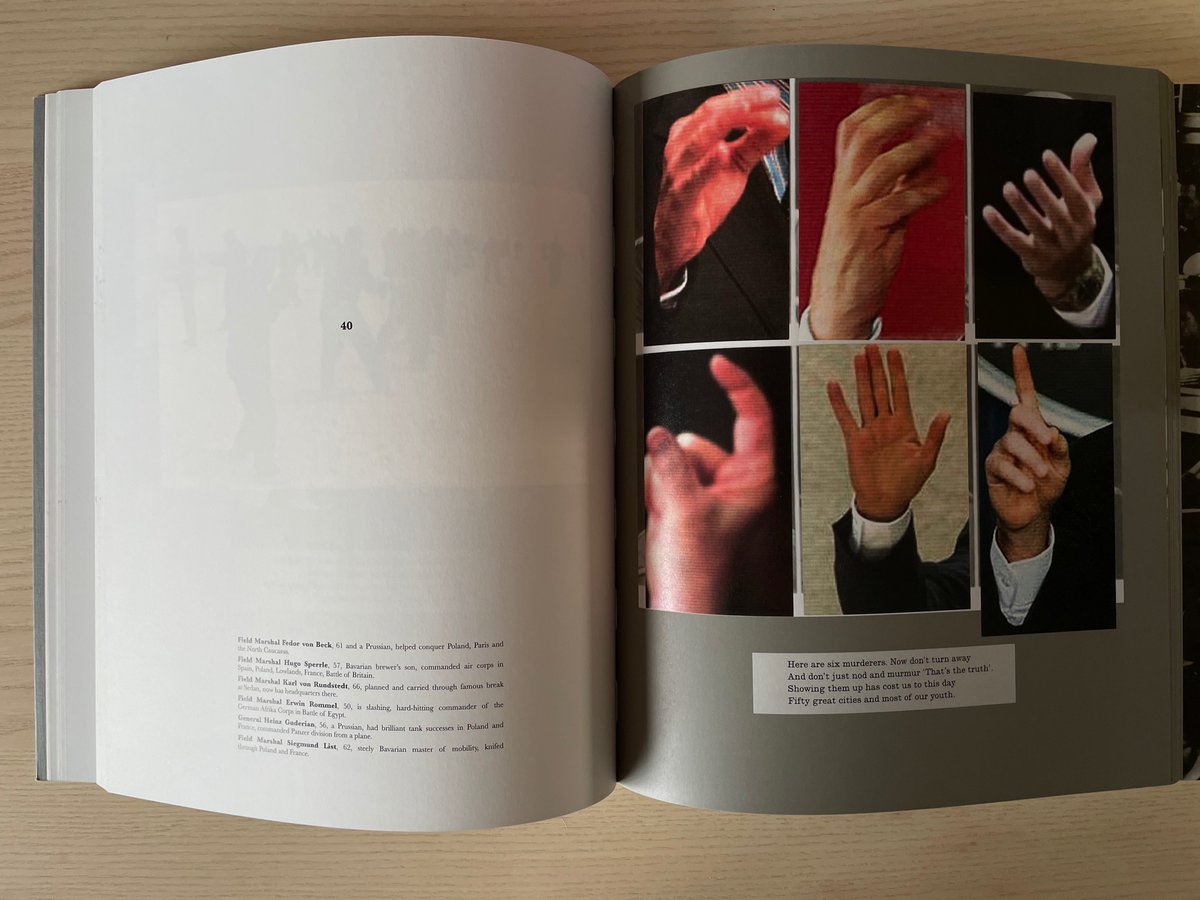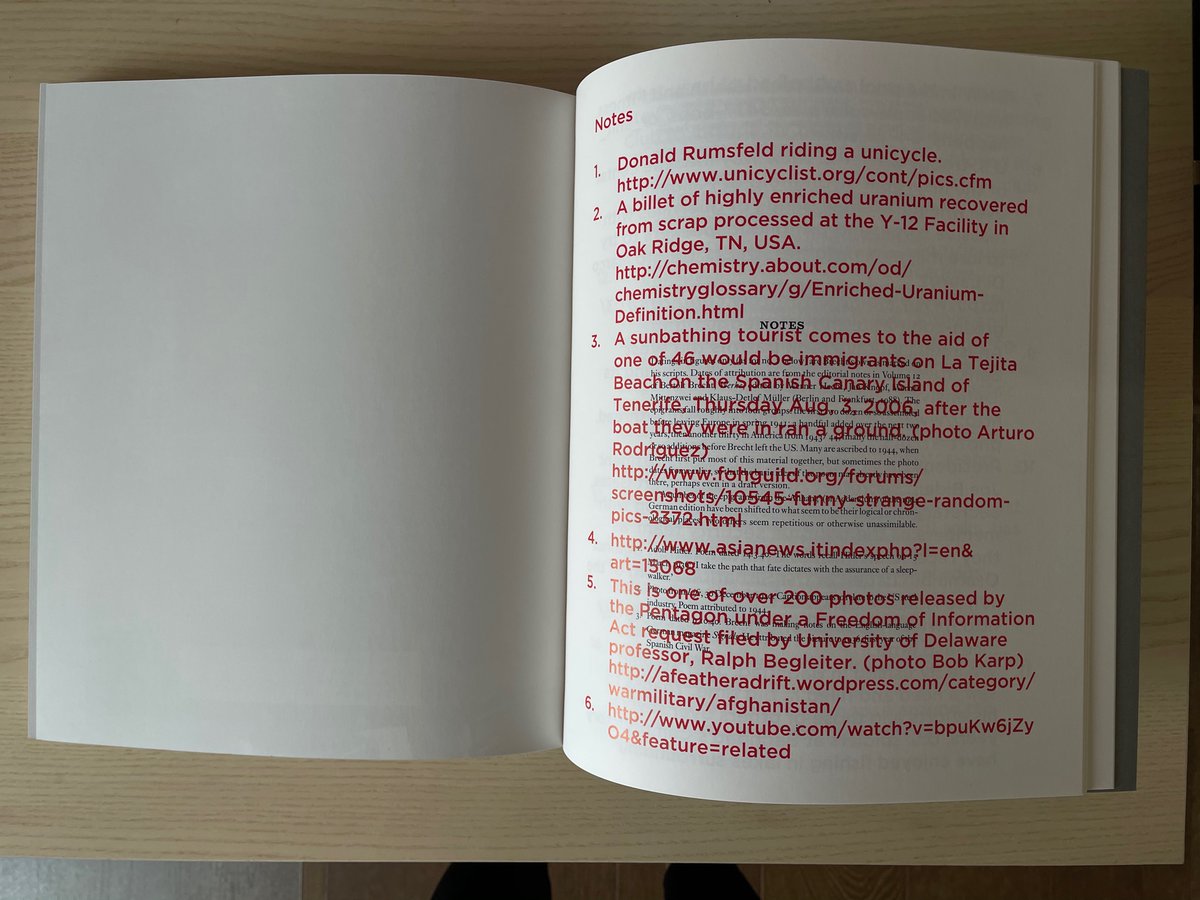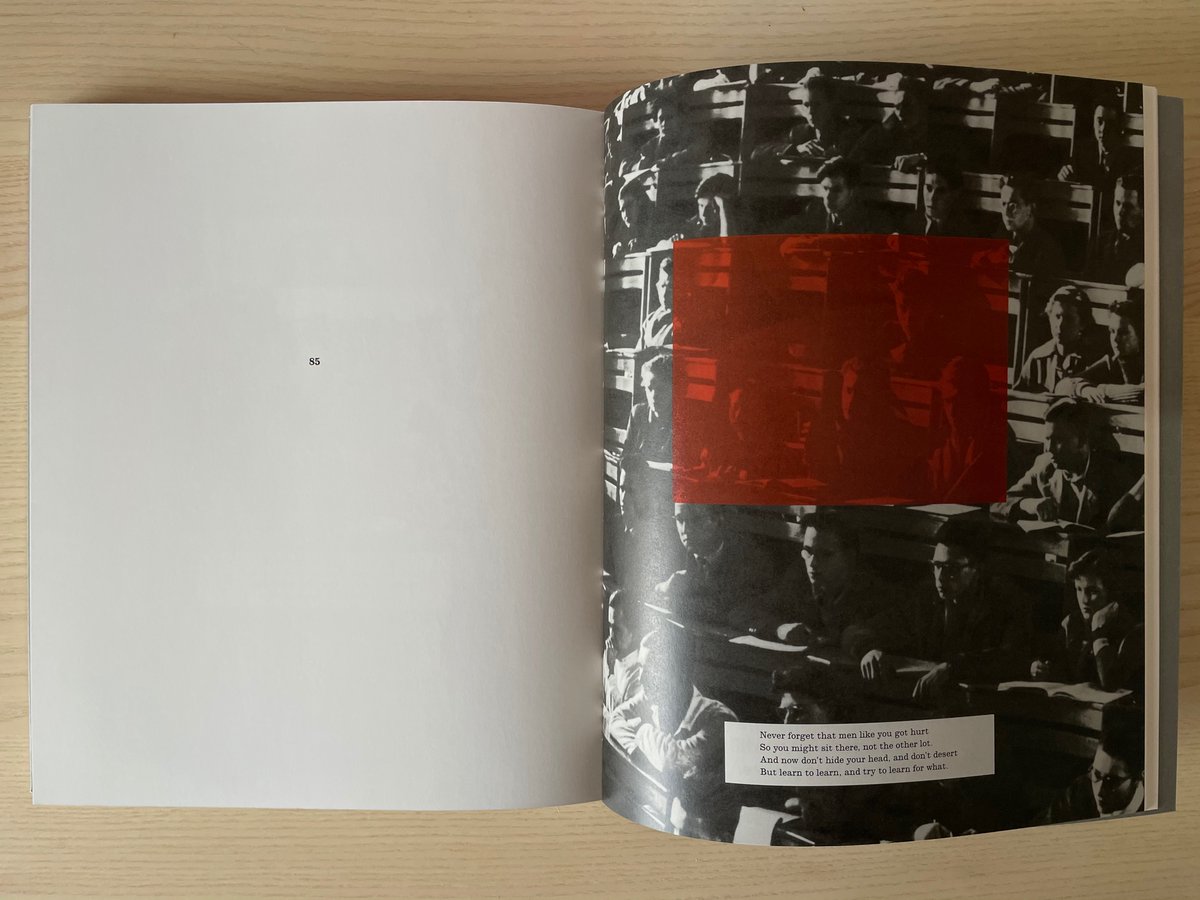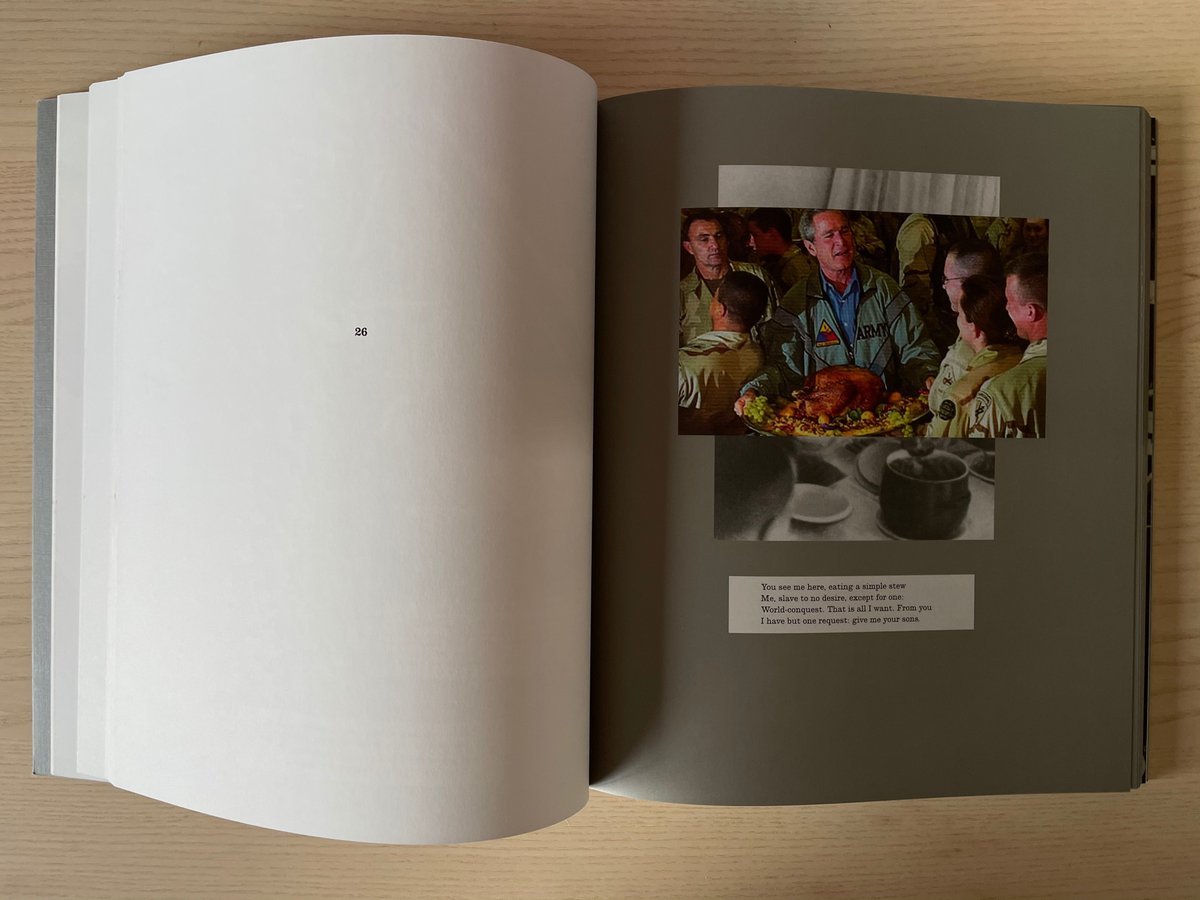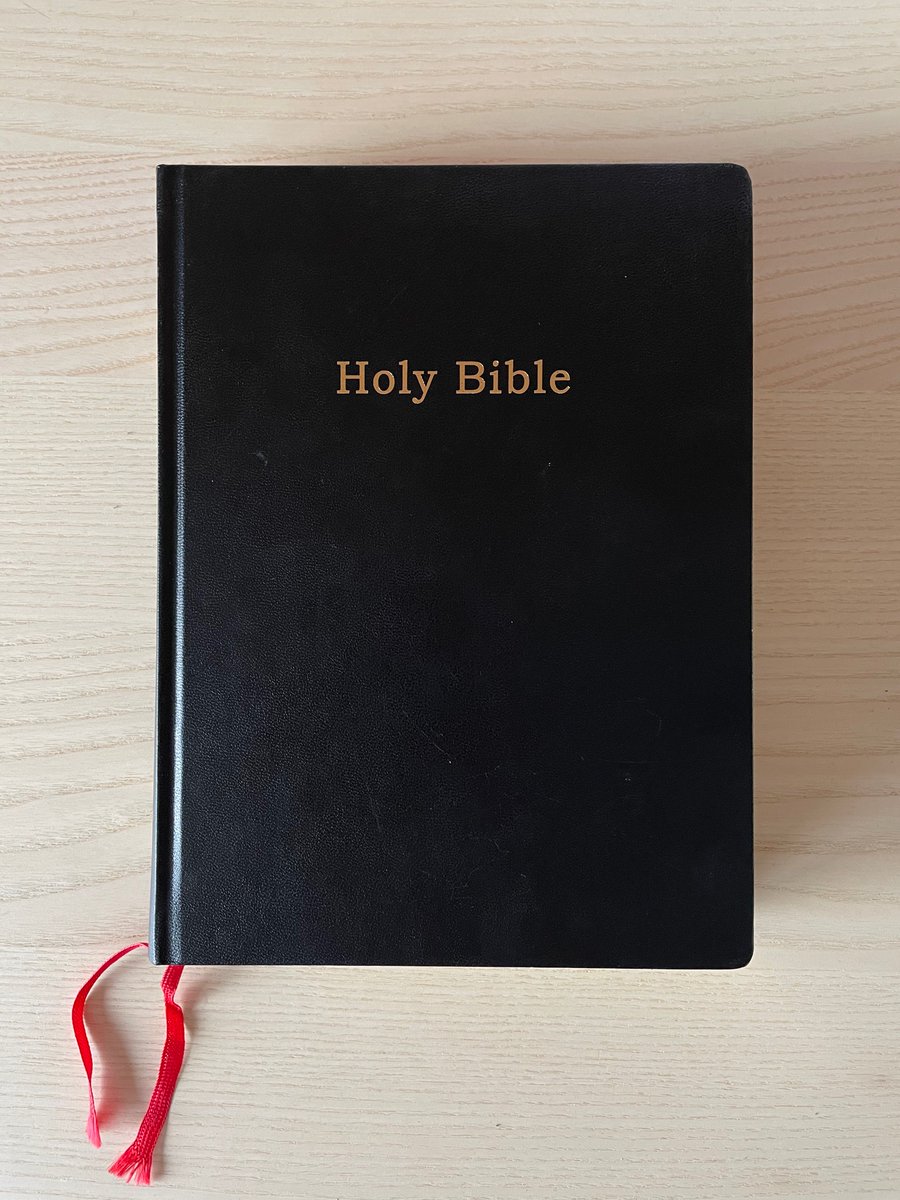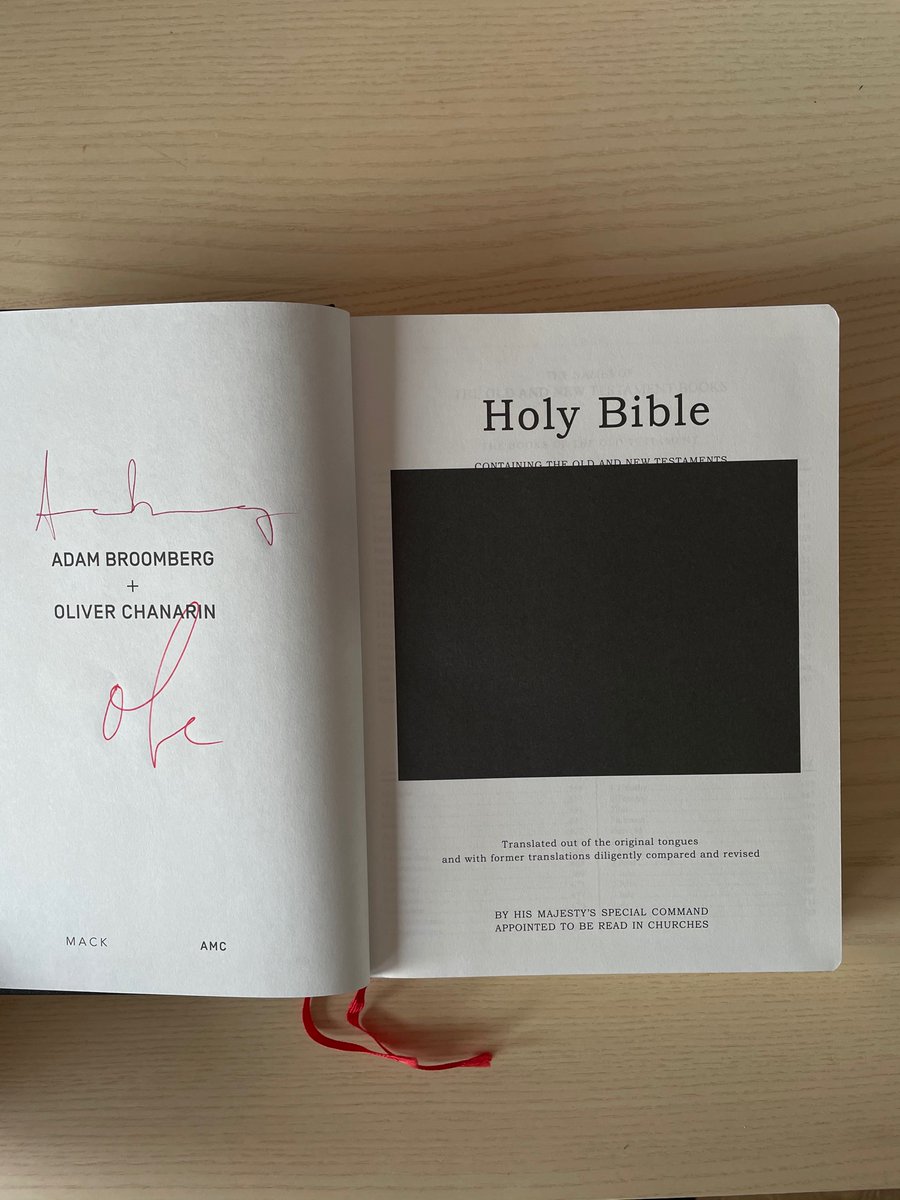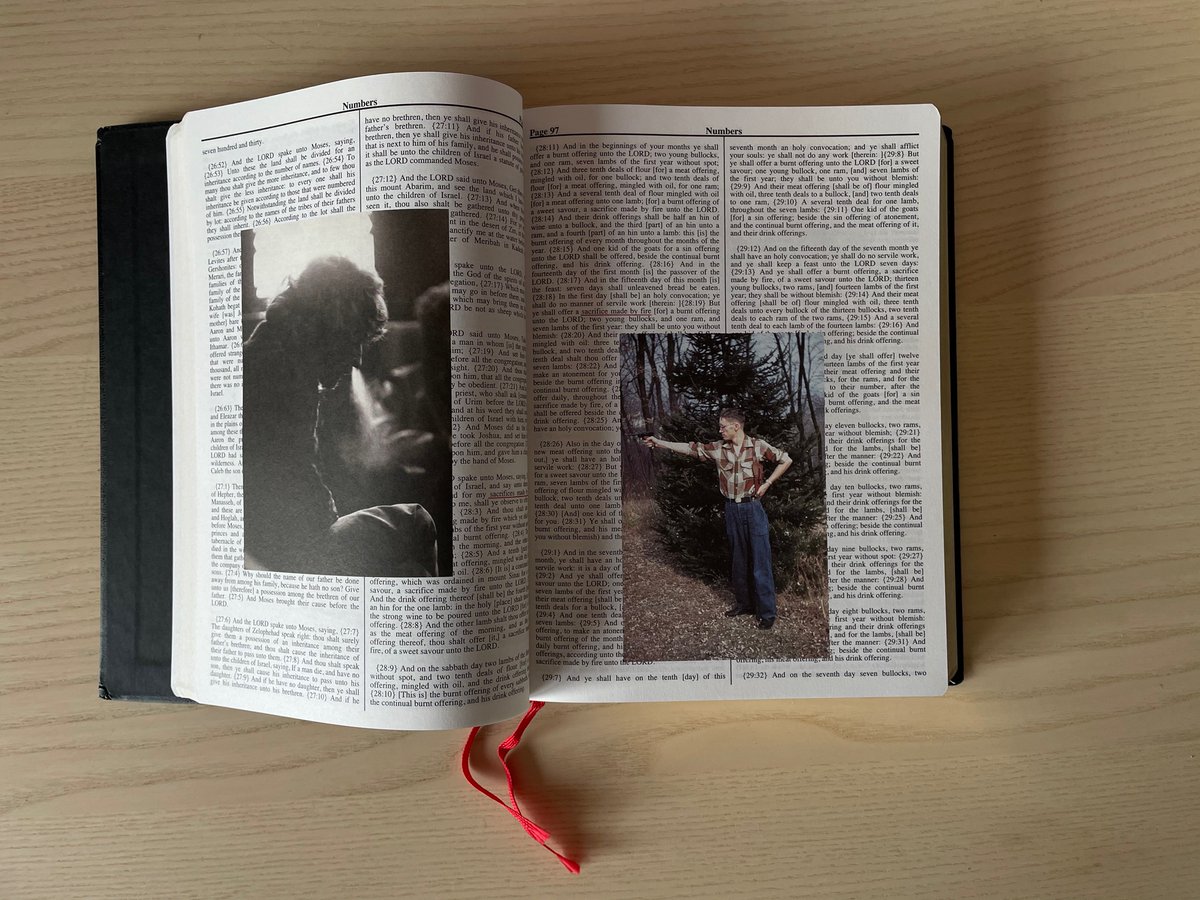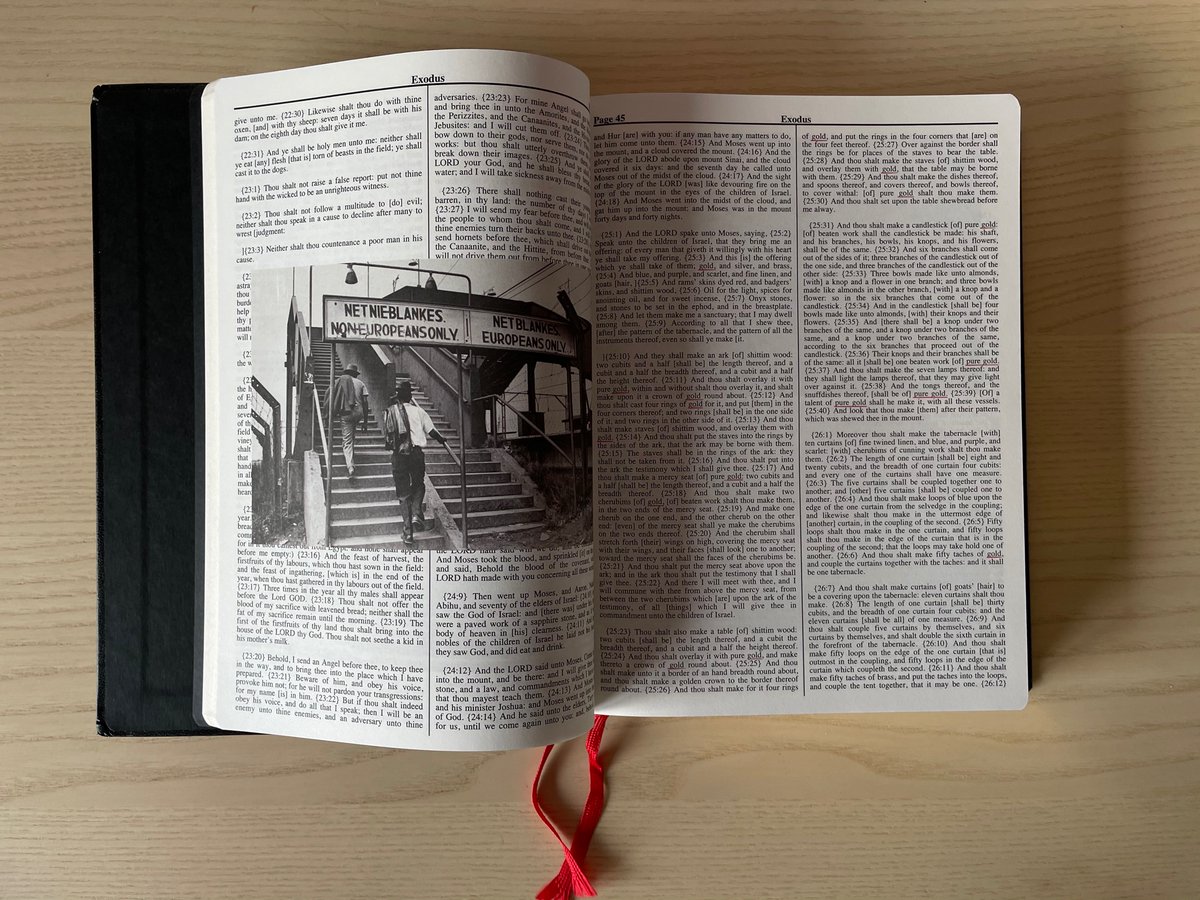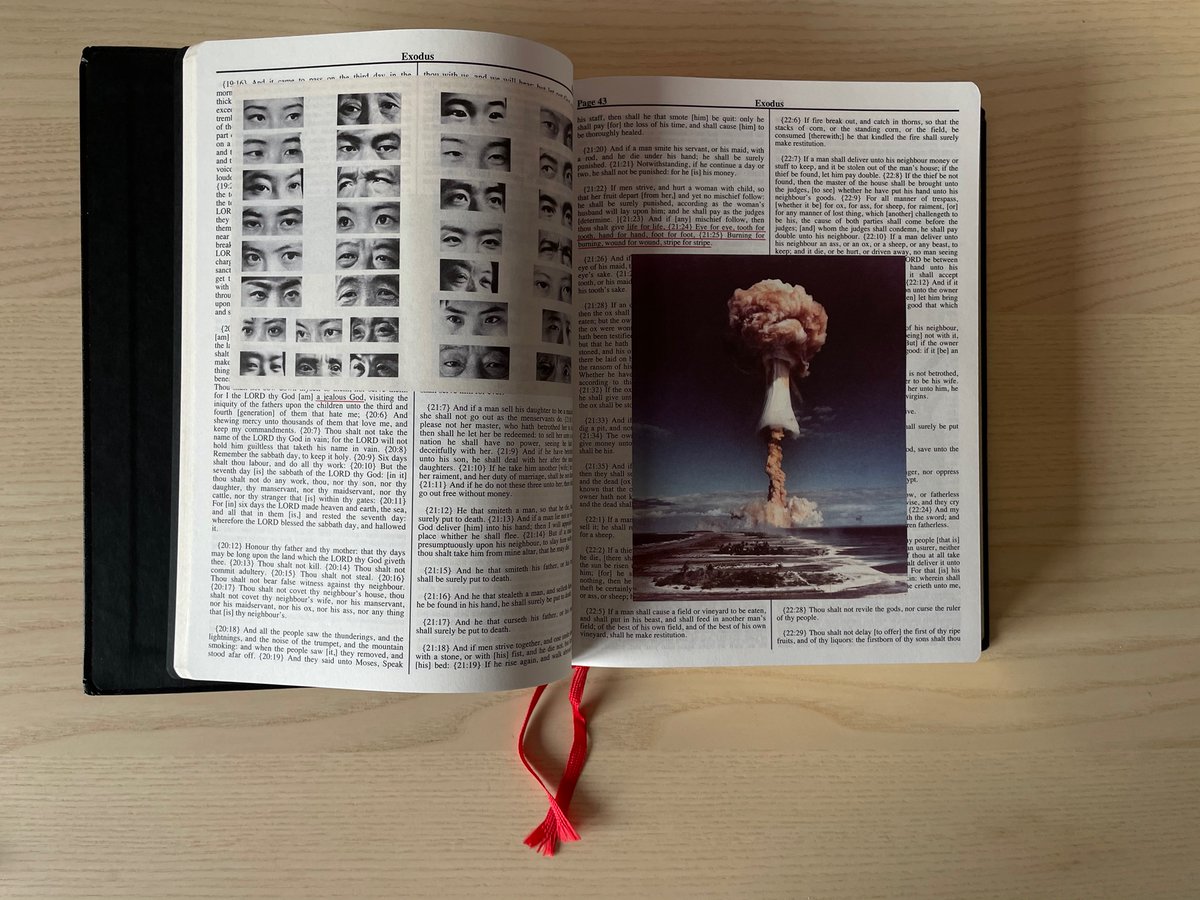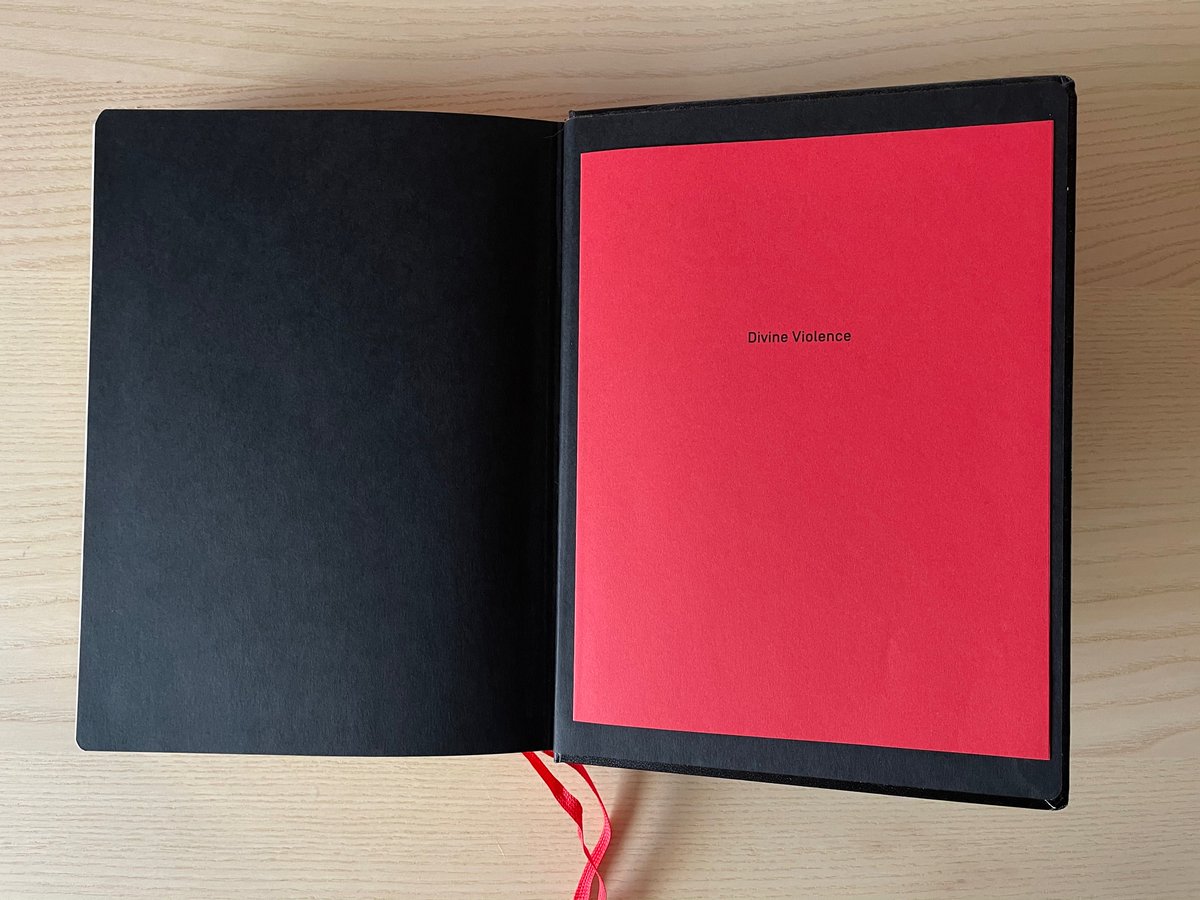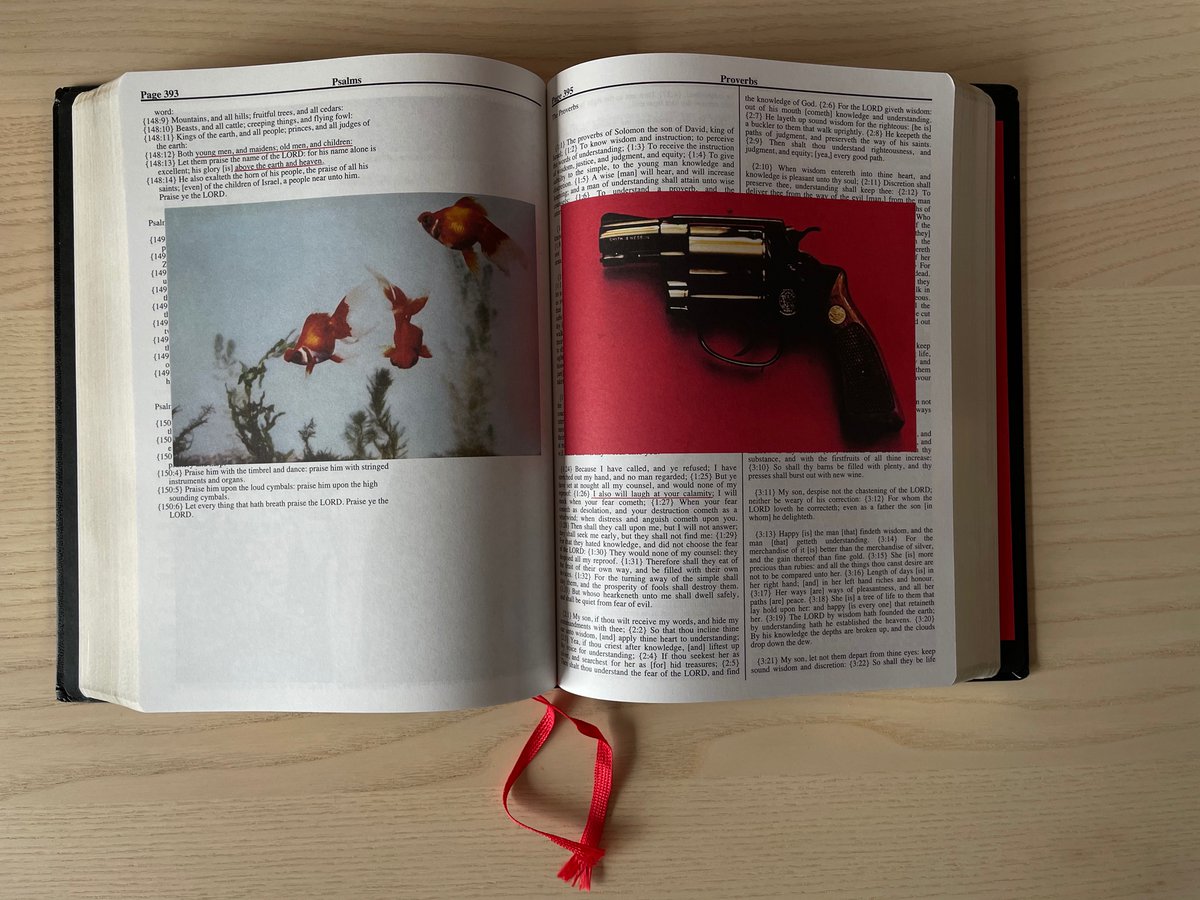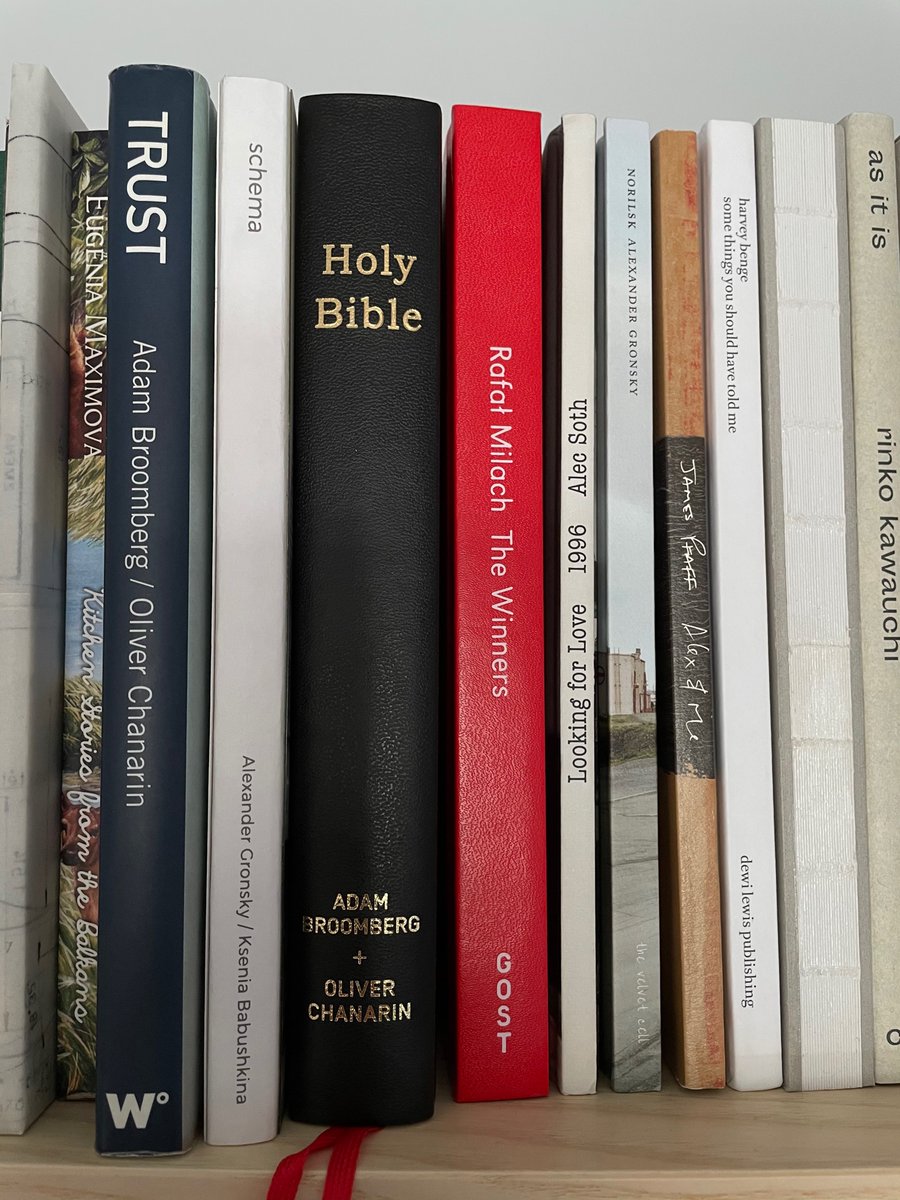Decided to do a 100 tweets @threadapalooza style.
Let’s get out of this all-things-tech-town through narratives, physicality, endless intimacy, Japanese bindings, gossip, drama, limited supply, and unlimited visual power of photobooks.
Let’s get out of this all-things-tech-town through narratives, physicality, endless intimacy, Japanese bindings, gossip, drama, limited supply, and unlimited visual power of photobooks.
0. What is a photobook and what is not? Photobook is a visual novel, a narrative, where a story is not in pictures, but it emerges out of the pictures, and all book elements work in support of that story.
1. It’s a photographic project published in a book form, very different from a book with photos or a book on photography. ‘Best of’ books or Taschen coffee table monoliths are rarely good photobooks.
2. Vanessa Winship: she dances on Jackson (MACK, 2013)
Winship spent a year travelling across America with a large format camera in 2011. Where did American dream go? This is a tender, slightly crooked and endlessly empathetic masterpiece of a narrative in a linen-clothed cover
Winship spent a year travelling across America with a large format camera in 2011. Where did American dream go? This is a tender, slightly crooked and endlessly empathetic masterpiece of a narrative in a linen-clothed cover
3. It was the first book that clicked with me, astounded with how poetic and intimate it is. People on her portraits are emerging from the land itself.
https://www.vanessawinship.com/gallery.php?ProjectID=177
https://www.vanessawinship.com/gallery.php?ProjectID=177
4. Taiyo Onorato and Nico Krebs: The Great Unreal (2011)
Two Swiss photographers who took the American road trip and twisted its mythology through fabrication of reality. They mix photos, physically altered prints and constructed images, there’s always a space for doubt.
Two Swiss photographers who took the American road trip and twisted its mythology through fabrication of reality. They mix photos, physically altered prints and constructed images, there’s always a space for doubt.
4.1 They are setting up expectations and then breaking them mid-book with an image of French fries. It does feel like a feverish drive between Nevada and California. If you manage to find any edition, just grab it — it’s a great example of the medium and Swiss book quality.
5. The Open Road: Photography & the American Road Trip by David Campany (2014, Aperture)
Why is America so attractive to photographers? It's a myth of space and the space of myth. You were reading attentively and know now that this is not a photobook. https://davidcampany.com/the-open-road-photography-and-the-american-road-trip/
Why is America so attractive to photographers? It's a myth of space and the space of myth. You were reading attentively and know now that this is not a photobook. https://davidcampany.com/the-open-road-photography-and-the-american-road-trip/
6. Simon Menner: Top Secret (Hatje Kantz, 2013)
Simon spent 2 years in STASI archives and it shows: a softcover book of 160 photos & internal perspective on disguises, apartment searches, secret codes, agents taking photos of the agents.
https://www.hatjecantz.de/simon-menner-top-secret-5654-1.html
Simon spent 2 years in STASI archives and it shows: a softcover book of 160 photos & internal perspective on disguises, apartment searches, secret codes, agents taking photos of the agents.
https://www.hatjecantz.de/simon-menner-top-secret-5654-1.html
7. Great photobooks are born from great body of work, no doubt about that. But they all require photobook thinking and understanding how different elements — edit, sequence, pace, paper, binding, form, size, cover, text — work together.
Easy, right?
Easy, right?
8. This is Mark Power's Mass as a body of work. Him, a lapsed Catholic, took photos of busy masses in Poland, and paired them with close-ups images of donation slots in the same churches. How does this become a book?
https://www.markpower.co.uk/Photographic-projects/MASS
https://www.markpower.co.uk/Photographic-projects/MASS
9. Mark Power: MASS (GOST, 2013)
A brilliant book. It leads with closeups, and then you reveal the vertical fold, uncover the whole space. Dominating, tight edit (18 pairs of ‘portraits of a mass’ and collection slots) makes to 118 pages. Insanely rich paper too.
A brilliant book. It leads with closeups, and then you reveal the vertical fold, uncover the whole space. Dominating, tight edit (18 pairs of ‘portraits of a mass’ and collection slots) makes to 118 pages. Insanely rich paper too.
10. Mark Power MASS (GOST, 2013)
Unfolding is special here. In this interaction the book allows you to view what’s hidden, enabling for different formats and modalities to exist and not compromising in size. The foldouts are 40x50 cm and show the beauty of large format.
Unfolding is special here. In this interaction the book allows you to view what’s hidden, enabling for different formats and modalities to exist and not compromising in size. The foldouts are 40x50 cm and show the beauty of large format.
11. On photobook success drivers:
There is insane role of experts/collectors, crypto crowd are kids compared to how Martin Parr's word can make or break a book.
People collect publishers and names, and belonging to the right house matters more than in Dune series.
There is insane role of experts/collectors, crypto crowd are kids compared to how Martin Parr's word can make or break a book.
People collect publishers and names, and belonging to the right house matters more than in Dune series.
12. There also are limited supply and small runs: 500-2000 copies is considered decent. Most of my fave books from 2014-16 are sold out, and used books pricing is a mess.
Add this to the tiny size of 'Photoland' market which is not really appealing to most people from outside.
Add this to the tiny size of 'Photoland' market which is not really appealing to most people from outside.
13. Ursula Schulz-Dornburg: Yerevan 1996/1997 (MACK, 2019)
Ursula documented vernacular architecture and environments of Yerevan with a film camera, a mix of soviet past and a glimpse of what’s to come. The book is a facsimile of a sketchbook she made from a school notebook.
Ursula documented vernacular architecture and environments of Yerevan with a film camera, a mix of soviet past and a glimpse of what’s to come. The book is a facsimile of a sketchbook she made from a school notebook.
14. Yerevan is a simple and resonating book fueled by city environments and school planner format itself. We all had the same yearly notebooks also in both native languages.
The book guides to the end of the school year and feels like a time travel adventure to the 90ies.
The book guides to the end of the school year and feels like a time travel adventure to the 90ies.
15. Thomas Sauvin: Until Death Do Us Part (Jiazazhi Press, 2015)
These photos are from Beijing silvermine project where they were bought by a kilo from a recycling plant, and then Sauvin found a rather unsettling unifying thread: Chinese wedding and smoking rituals.
These photos are from Beijing silvermine project where they were bought by a kilo from a recycling plant, and then Sauvin found a rather unsettling unifying thread: Chinese wedding and smoking rituals.
16. The attention to details in how it is designed as a pack of cigarettes itself is insane. The book has one image per centerfold and is probably one of the clearest examples of photobook form supporting the concept.
And a photo of a smoking baby I can’t forget.
And a photo of a smoking baby I can’t forget.
17. There is a tension between physicality of a book — it’s an object, and a fetishised one in the recent years, the nature of a photograph: a 3D space projected on 2D, and the paper folds. In fact, it’s a centerfold tiranny.
18. One way to escape this tyranny is through book bindings and gatefolds. Most bindings are not noticed unless they are really unorthodox. But this is a book decision that has a massive implications for images on spreads, size, costs, paper types, and perceived experience.
19. Rinko Kawauchi: Illuminance (Editions Xavier Barral, 2011)
Have you ever been distracted by a shiny thing? Light spot? This is one of Rinko Kawauchi’s most personal books during 15 years of practice on the miracle of light of light and its powers.
Have you ever been distracted by a shiny thing? Light spot? This is one of Rinko Kawauchi’s most personal books during 15 years of practice on the miracle of light of light and its powers.
20. Illuminance binding is a variant of Japanese one and because of that to open a book, you need to use two hands.
Notice the page fold! This is the concentration that makes it just phenomenal.
Having a publishing house that is knows for its high quality books also helps.
Notice the page fold! This is the concentration that makes it just phenomenal.
Having a publishing house that is knows for its high quality books also helps.
* open a book = open the spread flat fully
21. Rinko Kawauchi: Sheets (Kominek books, 2013)
Same binding, while different vibe. Rinko’s work of 10 years is presented as series of contact sheets. Looking at them and trying to reverse engineer what she was seeing is fascinating exercise in fluidity.
What’s her method?
Same binding, while different vibe. Rinko’s work of 10 years is presented as series of contact sheets. Looking at them and trying to reverse engineer what she was seeing is fascinating exercise in fluidity.
What’s her method?
22. “Sheets” is a a much smaller book from uncoated, ink-thirsty paper. Its ambience creates own narrative of film strips, their order, and larger pictures.
Foldouts are crafted with precision, and they represent fidelity on demand: you are opening them only if you want to.
Foldouts are crafted with precision, and they represent fidelity on demand: you are opening them only if you want to.
23. Rinko Kawauchi: Ametsuchi (Aperture, 2013)
Kawauch here shifts from micro to macro showing the voices of distant stars and landscapes, and images from traditional controlled burn farming method known since 1300ies. It manages to transcend time and space.
Kawauch here shifts from micro to macro showing the voices of distant stars and landscapes, and images from traditional controlled burn farming method known since 1300ies. It manages to transcend time and space.
24. She shot it on a different medium format camera, breaking down from her usual Rolleifex squares. I saw some prints as a part of Pier 24 show after I got a book. Yet both of them had a unique aura of persuasion born from understanding viewer’s context. She’d do amazing in UX.
25. Ametsuchi is monumental and magical. In this book the closed side is at the top of the page and the sides and bottom are open. Because of that insides of pages look as if they have caught some bit of that fire: images are printed in inverted colors. This is genius.
26. Ametsuchi is made of two Japanese characters meaning "heaven and earth”. From what I understand, it’s translated as "Song of the Universe," a list that includes the heavens, earth, stars and mountains.
(pls correct me if I’m wrong at any tweet, my mind is an empty shell)
(pls correct me if I’m wrong at any tweet, my mind is an empty shell)
27. Rinks Kawauchi: as it is (Chose Commune, 2020)
It’s so quiet. Rinko had a child and the book is about their first years but it’s the most authentic, understated, deep and focused book than the earlier ones. Thise may be more loud and prominent. This one is... real.
It’s so quiet. Rinko had a child and the book is about their first years but it’s the most authentic, understated, deep and focused book than the earlier ones. Thise may be more loud and prominent. This one is... real.
28. One one hand, it’s a simple story; kid learns the world, she watches the kid. On the other hand, it’s a poetic narrative of light, life and everyday froth that keeps us going.
A casual miracle, close to her earlier work.
A casual miracle, close to her earlier work.
29. The photographs are simple and delightful.
Rinko is open to the world of her kid and she is insanely honest in this photobook.
She is famous for shooting a flick of light, a breath, a second-long miracle, and here she just takes it to the next level.
Like all mums do.
Rinko is open to the world of her kid and she is insanely honest in this photobook.
She is famous for shooting a flick of light, a breath, a second-long miracle, and here she just takes it to the next level.
Like all mums do.
30. Most of Rinko Kawauchi’s books can be found here: http://rinkokawauchi.com/publications/
Web versions are merely ghosts, projections but they give a good outline of how great of a book artist she is.
If you happen to pass a bookstore and see any book by her, used or new, just grab it.
Web versions are merely ghosts, projections but they give a good outline of how great of a book artist she is.
If you happen to pass a bookstore and see any book by her, used or new, just grab it.
31. Photobooks are the objects meant to be looked at, stored, collected, put somewhere, and also bought and sold.
The physical form matters insanely, and the diversity of choices and production options, and differences between largest and smallest photobooks are astounding.
The physical form matters insanely, and the diversity of choices and production options, and differences between largest and smallest photobooks are astounding.
32. I believe that 2010 onwards opened up a Golden Era of photo books. The appreciation of medium has grown, the market has grown, the books became fetishes.
Think about it, in the times where traditional publishing was going down, photobooks thrived.
Think about it, in the times where traditional publishing was going down, photobooks thrived.
33. Martin Parr, Gerry Badger: The Photobook: A History vol. 1 (Phaidon, 2004)
This is one book on photobooks that contributed to the medium massively.
Rumour has it that rich collectors were using the book as a shopping list, and Parr himself has a massive collection.
This is one book on photobooks that contributed to the medium massively.
Rumour has it that rich collectors were using the book as a shopping list, and Parr himself has a massive collection.
34. By now, more volumes of The Photobook: A History were produced, and those titles that got into vol 3 — like some of the books from this thread — are mostly sold out now.
There are also instanely good books on Dutch, Japanese, Swiss, Chinese & Latin America photobooks.
There are also instanely good books on Dutch, Japanese, Swiss, Chinese & Latin America photobooks.
35. December in Photoland means Listmas. This is when everyone who’s anyone publishes their lister lists of this year’s photobooks.
The market is so fragmented that 20% occurrence of the same book can be considered a high rate (and potentially an unmissable book)
The market is so fragmented that 20% occurrence of the same book can be considered a high rate (and potentially an unmissable book)
36. This is an example from 2017: https://blog.photoeye.com/2017/12/the-best-books-of-2017.html?m=1
In the last two years Photoeye turned their lists into sort of advlent calendar, unveiling a list per day on the course of ten days or so.



Unlike pokemon, you can not catch them all.
In the last two years Photoeye turned their lists into sort of advlent calendar, unveiling a list per day on the course of ten days or so.



Unlike pokemon, you can not catch them all.
37. Christian Patterson: Redheaded Peckerwood (MACK, 2011)
The book that changed the medium like a breakthrough research moves its field of science.
It is a true crime mystery story where we discover hidden clues, artifacts and found items tucked in the pages of the book.
The book that changed the medium like a breakthrough research moves its field of science.
It is a true crime mystery story where we discover hidden clues, artifacts and found items tucked in the pages of the book.
38. It is a story of a girl, boy and gun, a tragic underlying narrative – the story of 19 year old Charles Starkweather and 14 year old Caril Ann Fugate. They murdered 10 people, incl Fugate’s family, during a three day killing spree across Nebraska & captured in Douglas, Wyoming
39. The book has it all: forensic photography, image appropriation, reenactment and documentary landscape photography;
It deals with truth as the work deconstructs a pre-existing narrative, deliberately mixing fact and fiction, past and present, myth and reality.
It deals with truth as the work deconstructs a pre-existing narrative, deliberately mixing fact and fiction, past and present, myth and reality.
40. There are things that belonged to victims and their killers: a map, poem, confession letter, stuffed animal, hood ornament.
http://www.christianpatterson.com/redheaded-peckerwood/#1
First edition now costs £300, and is on its 4th run now. (Mine is a modest affordable signed 3rd ed).
http://www.christianpatterson.com/redheaded-peckerwood/#1
First edition now costs £300, and is on its 4th run now. (Mine is a modest affordable signed 3rd ed).
41. Redheaded Peckerwood made it to 20 lists that year. Now I know why: it’s perfect, and the pleasure of it is just...great.
When I was taking Beyond Photography course in 2011 our group was obsessed with it.
And I’ve seen books that tried to pull a Peckerwood since then!
When I was taking Beyond Photography course in 2011 our group was obsessed with it.
And I’ve seen books that tried to pull a Peckerwood since then!
42. There’s another book that ignited the photobook world in 2012.
Christina De Middel made a project about a failed space program in Zambia, turned it into a book and self published 1000 copies in Madrid, her last money, last hopes in 17x23 cm
(Photos from the artist website)
Christina De Middel made a project about a failed space program in Zambia, turned it into a book and self published 1000 copies in Madrid, her last money, last hopes in 17x23 cm
(Photos from the artist website)
43. She comes to the famous festival in Arles, where Afronauts are miraculously noticed by Martin Parr who stocks several copies, the word on his interest spreads there, book becomes a sensation. Soldout entails.
The book was priced at €28 and quickly became €800-1000!
The book was priced at €28 and quickly became €800-1000!
44. In 2018, there was a 2nd edition, but I decided not to buy it. There is something that irks me wrong, this whole beanie babies book chimera.
There are gossips and stories around what really happened in Arles that summer. Do you think Martin sold his copies on high?
There are gossips and stories around what really happened in Arles that summer. Do you think Martin sold his copies on high?
45. Do not get me wrong: Afronauts a great book. De Middel is a talented artist with enviable work ethics, she deserves all the success.
€8500 she paid to print the book and the leap of faith elevated her career: Deutsche Borse nomination and Magnum membership.
€8500 she paid to print the book and the leap of faith elevated her career: Deutsche Borse nomination and Magnum membership.
46. Broomberg & Chanarin, War Primer 2 (MACK, 2018, 2ed)
My holy grail. We were obsessing over it and could not afford it — only a 100 copies were made by hand all too expensive.
tldr: artists hijacked Bertolt Brecht’s 1955 Kriegsfibel replacing images with The War On Terror
My holy grail. We were obsessing over it and could not afford it — only a 100 copies were made by hand all too expensive.
tldr: artists hijacked Bertolt Brecht’s 1955 Kriegsfibel replacing images with The War On Terror
47. Brecht’s idea of War Primer is very didactic: “how to look at the pictures of the war”. He juxtaposed media photographs from WW2 with poems he wrote.
His metanarrative is about photography, how it tries to capture human suffering, and fails often.
His metanarrative is about photography, how it tries to capture human suffering, and fails often.
48. B&Ch started with building relationships depicting the war on terror and poems. The idea of war on terror as the war with images: images of Hussain, deliberately released image of Bin Laden body, AP holding rights to Abu Graib images.
49. The way words and images work together change as you progress through the book.
Their listing of the sources is the equivalent of the text that Brecht has inserted.
In a way, to use Brecht without the change is to do a disservice to him.
Their listing of the sources is the equivalent of the text that Brecht has inserted.
In a way, to use Brecht without the change is to do a disservice to him.
50. There is final poem and a photo of university students in Germany after the war. It’s an image that has been taken and covered with a red square but we haven’t seen it.
“...And now don’t hide your head and don’t desert / But learn to learn, and try to learn for what.”
“...And now don’t hide your head and don’t desert / But learn to learn, and try to learn for what.”
51. What informs the currency of an image?
History has a habit of coagulating around certain images but how images become the ones that remain?
They become solid, almost three-dimensional but how?
History has a habit of coagulating around certain images but how images become the ones that remain?
They become solid, almost three-dimensional but how?
52. With first edition they broke copyright, had to sell it for ridiculous price and labour was a part of the book.
Then artists had to rebuild it, so it would become not a precious collectible object but something that is accessible for £30: https://mackbooks.co.uk/products/war-primer-2-paperback-br-adam-broomberg-oliver-chanarin
Then artists had to rebuild it, so it would become not a precious collectible object but something that is accessible for £30: https://mackbooks.co.uk/products/war-primer-2-paperback-br-adam-broomberg-oliver-chanarin
53. Broomberg and Chanarin: Holy Bible (MACK, 2014)
Another decade-defining book by B&Ch, this time they took King James Bible and hijacked it with the images from Archive Of Modern Conflict.
There are parallels with Brecht’s bible and also God as a methaphor for government.
Another decade-defining book by B&Ch, this time they took King James Bible and hijacked it with the images from Archive Of Modern Conflict.
There are parallels with Brecht’s bible and also God as a methaphor for government.
54. The main idea of their Holy Bible comes from Adi Ophir’s work, Divine Violence: God reveals himself predominantly through catastrophe and power structures within the bible correlate with those within the modern systems of governance
Divine Violence: https://static1.squarespace.com/static/56e1e3e24d088e6834d4fbf4/t/591af30a17bffcb2712c2ac3/1494938389441/Divine+Violence.pdf
Divine Violence: https://static1.squarespace.com/static/56e1e3e24d088e6834d4fbf4/t/591af30a17bffcb2712c2ac3/1494938389441/Divine+Violence.pdf
55. Other books from B&Ch range from stories of their native South Aftrica, to looking under censors’ marks in the Troubles archive, to an artificial Arab town built by the IDF, to portraits from facial recognition system in Russia. One could easily write 100 tweets just on them.

 Read on Twitter
Read on Twitter